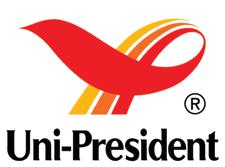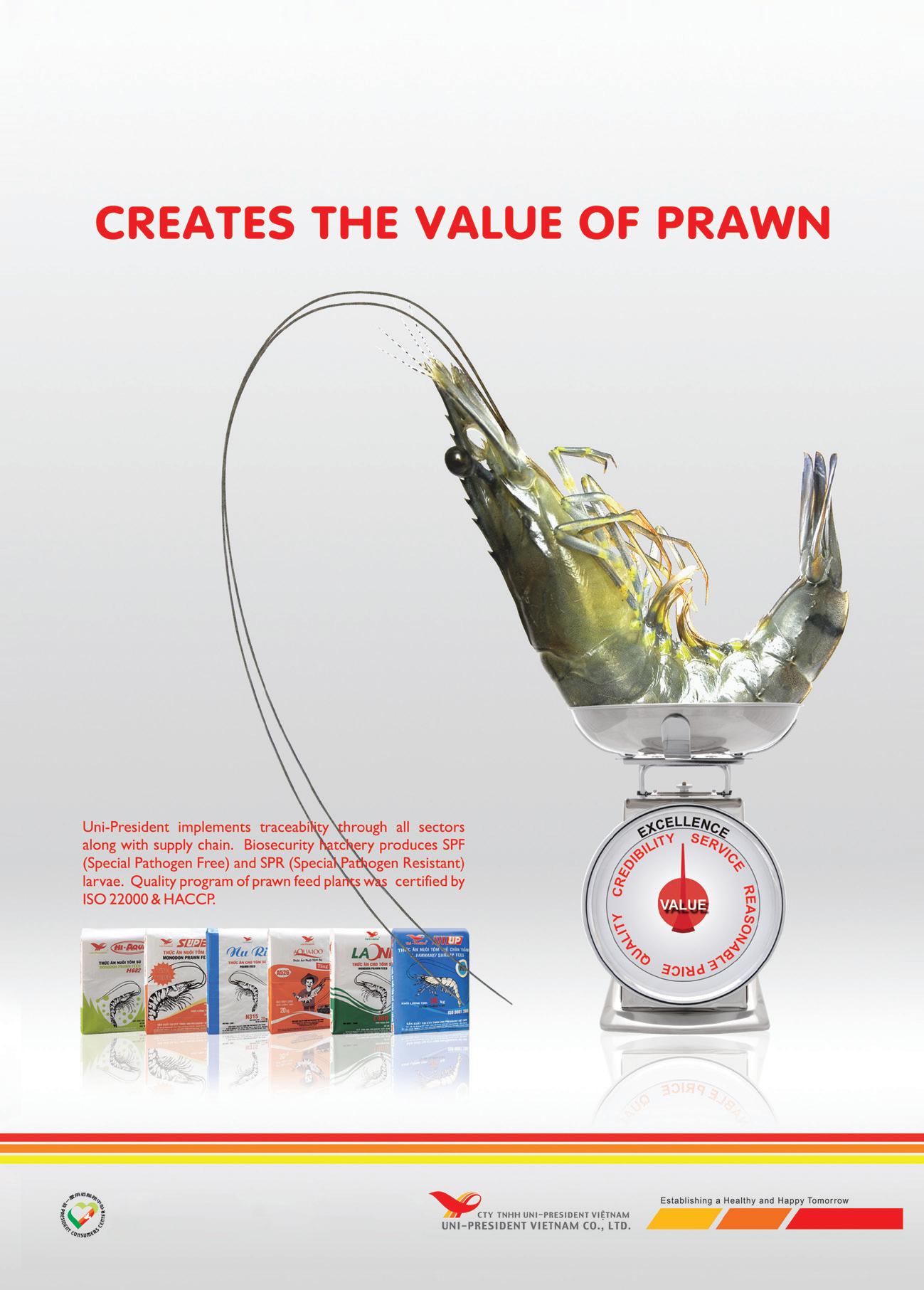





, a complete range of quality fish feeds are formulated by our experienced aquatic animal nutritionists covers freshwater and marine species.


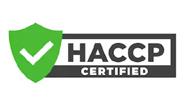
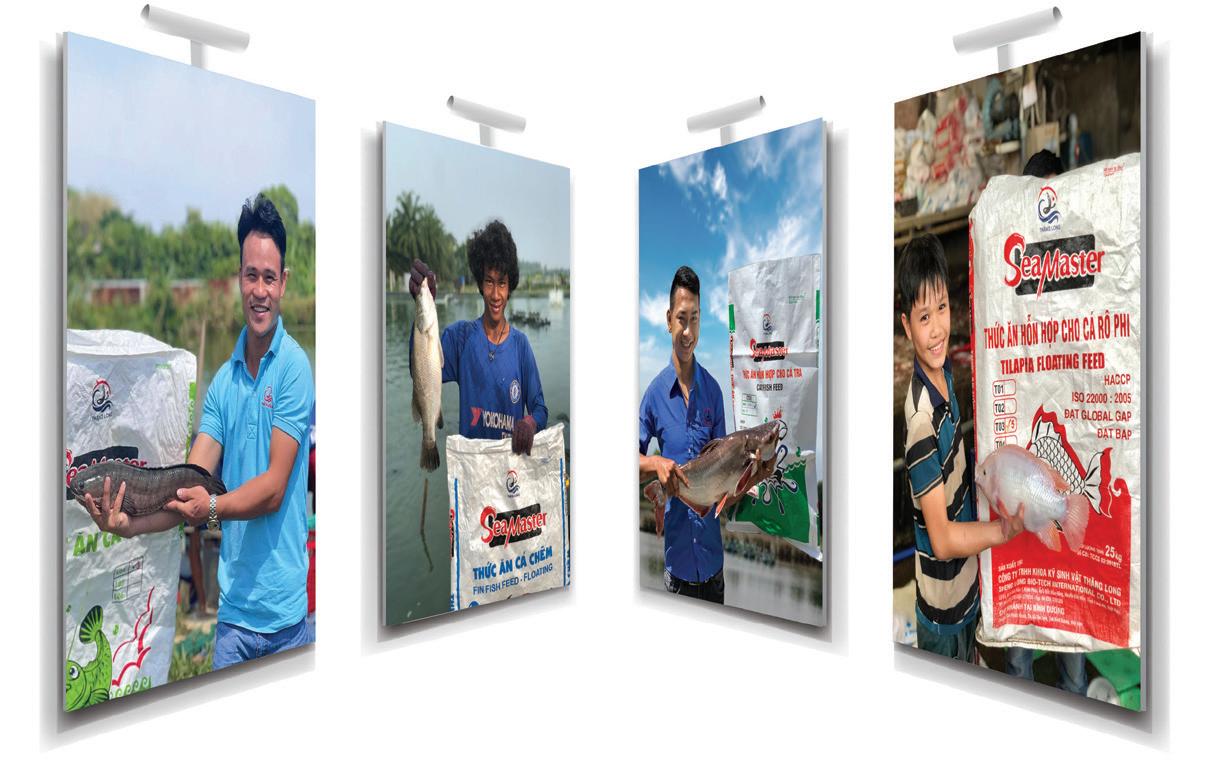
The quality diets will maximize feed intake and improving feed conversion ratio, promotes performance by supplying a specific amino acid balance to deliver excellent growth and reducing environmental impacts.
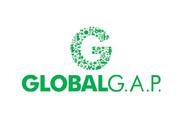

From the editor
2 What Crisis? A Shrimp Crisis!
Industry News
4 Reshaping Indonesia’s shrimp farming industry
Shrimp Aquaculture
8 Bacteriophage therapy in shrimp farming
Case studies on the use of bacteriophages during vibriosis in shrimp grow out in India. By D. Ramesh Kumar, M. Mathan Kumar, Sasibhusan Manna, Chandan Kumar and Sudharsan Das
12 Accurate DO measurement, key to high density production
Annmarie Delfino discusses advancements in water quality instrumentation for aquaculture operations
Editor/Publisher
Zuridah Merican, PhD
Tel: +60122053130
Email: zuridah@aquaasiapac.com
Editorial Coordination
Corporate Media Services P L
Tel: +65 6327 8825/6327 8824
Fax: +65 6223 7314
Email: irene@corpmediapl.com
Web: www.corpmediapl.com
Design and Layout
Words Worth Media Management Pte Ltd
Email: sales@wordsworth.com.sg
Web: www.wordsworth.com.sg
AQUA Culture Asia Pacific is published bimonthly by
16 Mexican field trial shows clear potential for hatcheries to improve their bottom line
An optimised feeding protocol helps hatcheries with production within a short production season. By Eva Werbrouck, Alfredo Medina Rodas and Geert Rombaut
Industry Review– The Tilapia
19 Interview: Promoting tilapia farming with genetics
Alejandro Tola Alvarez says that he focusses on the multiplier model to scale in a market of 30-40 billion fingerlings annually
23 The global tilapia
In his review, Eric Roderick notes that while volumes continue to move upwards, production costs are rising steadily and margins are becoming increasingly thin
27 Tilapia in China: Easy to farm but harder to sell
As farmers struggle with low selling prices, there are consequences along the supply chain, says Yufan Zhang
Feed Technology
31 Fish and vegetable oil prices are eroding aquafeed margins: What can formulators do? Martin Guerin, Waldo Nuez-Ortin, Martha Mamora and Dedi Jusadi explain trials with lysophospholipids in diets for juvenile pangasius
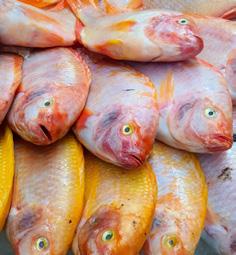
Aqua Research Pte Ltd

3 Pickering Street, #02-36 Nankin Row, Singapore 048660
Web: www.aquaasiapac.com
Tel: +65 9151 2420
Fax: +65 6223 7314
Printed in Singapore
Subscriptions
Subscribe via the website at www.aquaasiapac.com
Subscriptions can begin at any time.
Subscriptions rate/year
(6 issues): SGD 70,
Email: subscribe@aquaasiapac.com
Tel: +65 9151 2420
Fax: +65 6223 7314
Copyright © 2023 Aqua Research Pte Ltd.
All rights reserved. No part of this publication may be reproduced, stored in a retrieval system or transmitted, in any form or by any means, electronic, mechanical, photocopying or otherwise, without the prior permission of the copyright owners.
Aqua Culture Asia Pacific is a print and digital magazine. View E-magazine & Download PDF of past issues for free www.aquaasiapac.com
34 How can we contribute to build a sustainable aquaculture model?
A circular economy model helps to address three principles: reduce waste, circulate products and regenerate nature. By Gwénola Jan Lafage
37 All about ASC’s Feed Standard
At Seafood Expo Global in April, a conversation with Alexandra Warrington on details as ASC compliant feed is required as part of farm certification and feed mills
39 WNF 2023: Sustainable animal and aquaculture production for a brighter future
40
Aquaculture at WNF 2023
Global outlook on finfish and shrimp aquaculture and challenges in aquafeeds, from formulations, ANFs, mycotoxins to sustainability
45 Conversations at WNF
Views by the dsm-firmenich aqua team on bottenecks in Asian aquaculture, innovations for industry and sustainable aquaculture
Show Review
49 Addressing responsible sourcing of feed materials
GLOBALG.A.P.’s annual conference at the 2023 Seafood Expo Global held in Barcelona, Spain.
53 A global perspective on aquafeed production for players in Morocco
USGC’s International Aquaculture Conference in Casablanca in May 2023
58 Show Preview
TARS 2023 -Shrimp Aquaculture: Regeneration, Bali, Indonesia, August 16-17
60 Company News
Farm gate shrimp prices are falling in all producing countries the world over. At the end of June, a quick summary of the benchmark size 60 (around 17g) showed the following prices: USD3.84 in Vietnam, USD2.88 in India, USD3.62 in Indonesia and USD2.20 in Ecuador. This is close to the lowest prices the industry has seen in history (not counting for inflation). What is happening?
Prices are generally a function of demand versus supply so let us review demand from the largest markets. The US market rebounded post covid lockdown to import 900,000 tonnes in 2021. This dropped to 800,000 tonnes in 2022 and is forecasted to end 2023 at 650,000 tonnes. The root causes are inflation, extended supply chain woes increasing retail prices coupled with global economic uncertainties which started to kick-in by 2Q 2022.
Shrimp is a highly price-elastic commodity which means when prices increase, consumption will drop.
The EU27 plus the UK face similar challenges affecting the food service sector as well as retail and hence black tiger shrimp is also affected. China showed positive prognosis upon news of re-opening with huge shrimp imports in 4Q 2022 ending
We strive to be the beacon for the regional aquaculture industry.
We will be the window to the world for Asia-Pacific aquaculture producers and a door to the market for international suppliers.
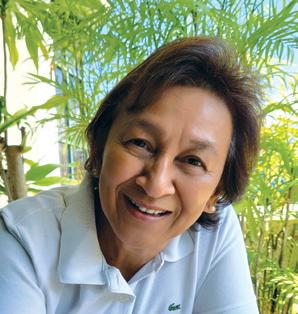
We strive to be the forum for the development of self-regulation in the Industry.
the year with over 900,000 tonnes. However, this rebound did not happen and shrimp consumption is now stagnating. Unverified reports estimate China having 6 months of inventory and nearly 50,000 tonnes of frozen shrimp looking for cold-room storage facilities. The Chinese population may be cash rich post lockdown, but they are not spending due to lack of confidence in the economy moving forward. This promotes saving and sends the economy into a further downward spiral. In addition, unemployment among the 16–25-year-olds is at 20%, an all-time high.
In terms of supply, the industry reported global production at 5.5 million tonnes in 2022 led by Ecuador which forecasts another production high, close to 1.5 million tonnes in 2023. These low farmgate prices are not new to Ecuador. In September 2020, prices for size 60/kg dropped to USD2.70 and exporters reacted by repositioning exports to focus equally on the US, EU and China. However, this time is different as the cost of production has increased buoyed by high feed and energy costs contributing to negative margins for farmers. Willem van der Pijl of Shrimp Insights reported that Indonesia’s YTD June 2023 exports have fallen 19% Y-o-Y. Indonesia is more vulnerable as it exports nearly 80% of its shrimp to one market i.e., the US and this was highlighted as the major challenge in the recent Shrimp Aquaculture Conference organised by PMI.
Rabobank had already forecasted in its Animal Protein report that 2023 will see Inflation, Recession and Headwinds. However, the severity is more serious for the shrimp industry than predicted. The intent of this editorial is not to dramatise ‘doom and gloom’ but to ensure the industry accepts reality and overcomes denial and anger and moves quickly to acceptance. In short – ‘Powering the engines to challenge each other
and surpass the 1 million tonnes production volume in each country is not the way forward’. The question often asked is ‘Who is going to buy all this shrimp?’
In the way forward, the first thing to remember is that we are all in this together, notwithstanding, if we are Ecuador, India, Vietnam or Indonesia. The industry needs to put marketing ahead of production by creating and building demand. Now that prices are low, it should be easier to do, and suppliers should ride this wave. This will be the major point of the industry dialogue with the younger generation of farmers in TARS 2023 Shrimp Aquaculture – Regeneration. Kontali will also be at TARS to discuss domestic and regional markets. Although the dream is to have global generic marketing, it will remain a pipe dream. However, country-wise generic marketing is attainable. National associations can build on quality, sustainability and branding for export while developing a local market. Here is an opportunity for self-regulation and weeding out the bad apples. Can governments help? A definite yes in promoting quality, transparency and traceability with country of origin. What governments should not do is to restrict imports through tariff barriers and implementing beggar-thy-neighbour policies which benefits one country by harming its neighbours and trading partners.
With every crisis, comes an opportunity. Winston Churchill once said, ‘Never let a good crisis go to waste’. The shrimp industry should not waste this crisis.
If you have any comments, please email:
zuridah@aquaasiapac.com






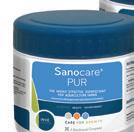
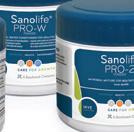
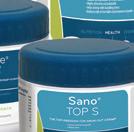



Rizky Darmawan (third left) and the PMI team, donning airline gear to demonstrate their wish to learn from the airline industry, which is meticulous in planning and in providing services.

Petambak Muda Indonesia (PMI or Young Shrimp Farmers, Indonesia) held its annual Shrimp Aquaculture Conference (SAC) on June 19-21 in Bali.
PMI is an association of Indonesia’s next generation of young business owners, specifically in shrimp farming, founded by Rizky Darmawan and Reynaud Suharja in 2015. Today, it has more than 200 farmers within the age range of 22-45 years.
Rizky Darmawan , PMI President, and CEO at PT Delta Marine Indonesia, said that with the commitment of all to stay informed and work together to shape the future of shrimp aquaculture, PMI began organising annual technical conferences. In 2023, this morphed into SAC, an international conference with over 250 participants and included a visit to the newly established broodstock multiplication centre, PT Kona Bay Indonesia, part of Hendrix Genetics in Buleleng, North Bali.
The common goal of PMI is to reshape the traditional shrimp farming business from an empirical to a predictable and science-based industry. Many see these next generation of owners as game changers who will be drafting a new future for shrimp farming, within and outside Indonesia. Startups see them as leaders in technology and digitalisation for this sector.
In his welcome message to participants and sponsors, Rizky said, “This is the first year we brand our yearly event as SAC.” On why the theme of ‘ Surviving Turbulences ’, Rizky explained, “In shrimp farming, we are working in a situation where we have at least a 30% failure rate. We need to change this to single digits. We need to learn from another industry to tackle this problem. What better than the airline industry, which is meticulous in planning and in providing service and experience to passengers and how they seek new heights, by producing the best product that consumers can enjoy. We want to give shrimp farming the same outcome, in terms of quality, colour, freshness, or even reach some sustainability goals. Then we can gain a competitive edge and capture the attention of discerning customers.”
Haris Muhtadi , President of Shrimp Club Indonesia (SCI), urged the producers in the audience to focus on marketing. “Production alone is not enough. Soaking shrimp between harvest and processing is wrong. I invite these young farmers and SCI members to think how we can position Indonesian shrimp in global markets and look at segmentation. Today, our positioning is not specific, and we must look beyond sharing the markets with India and Thailand at 30% each.”
Regis Bador, Innov’ Aquaculture described the marketing of premium blue shrimp Penaeus stylirostris from New Caledonia (Cristal BlueTM and ObsiblueTM), and black tiger shrimp Penaeus monodon from Mozambique and Madagascar (Black QwelhiTM and UnimaTM). “These producers have multiple certifications and rules such as stocking density and maximum biomass in ponds. They differentiate themselves from competitors to gain and keep targeted customers. Each customer is unique and special references on the products from chefs help,” said Bador. “They also tell real stories on community welfare.”
Alexander Farthing , COO at Delos Aqua said, “Farmers have difficulty using data generated over numerous cycles stored in excel workbooks, online chatrooms etc. Data bottlenecks include average daily growth (ADG) and accuracy of estimating biomass in a turbid 3D environment. Shrimp farming could possibly be the hardest system in the world with farm and pond variations.”
There is hope with observations and data collection which can lead to precise interventions to reduce risk and costs, improve production and increase profitability. Farthing also described some research work at Delos such as on farm product evaluation, pathogen mapping in farms and on water microbiome. He announced that Delos will be launching its Data Quality Monitoring app for effective intelligent data capture.
There has been rapid adoption of AQ1’s acoustic feeding technology in Ecuador, an incredible transformation from canoes, feed trays and broadcasting feed. For Andrew Campbell , CEO this is moving away from the art of manual feeding to science in feeding, using data and AI to support decision making. There is value in controlled feeding, and costs can be reduced. Some parameters influencing performance of acoustic feeding systems include pellet size, hardness and shape. Pellet hardness affects the sound during feeding and aerator types affect background noise; paddle wheels are better than impellers. Finally, Campbell said, “It is moving to precision aquaculture, from an art to science and that this can only be achieved through increased use of emerging technologies and automated systems.”
“The goal of the aquaculture accelerator, Hatch is to revolutionise the way we produce seafood with technology. Therefore, it invests in early-stage tech companies along the value chain,” said Benedict Tan , based in the Singapore office. Hatch is now the leading accelerator with 39 companies funded and USD100 million raised by portfolio. Tan described the stages of a startup and said that Hatch is seeking technology companies focussing on aquaculture and alternative seafood as their main or initial market. Tan also gave some tips on raising investments.
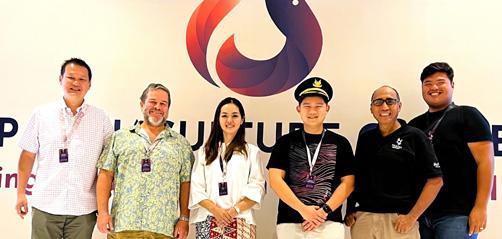
There is constant interest on the success in production in Ecuador and Bador said that post WSSV (1999), Ecuador moved to develop locally the APE (all pathogen exposed) broodstock and later crossed with SPF (specific pathogen free) lines for greater disease tolerance. In feed management, it is feed quality for each cycle and quality comes at a cost. It is also managing feeding smartly with adjustments on feed type, size, quality and frequency. With slight changes in stocking density and strict adherence to carrying capacity, the production increased three times.
Abung Maruli Simanjuntak , dsm-firmenich asked whether plankton in shrimp ponds is “friend or foe”. Concentrations of plankton in water resources vary according to location, season and year. Chlorophyll concentrations are higher in the Sumatra area and with El Nino, phytoplankton will increase. Overfeeding and poor water quality will increase the concentrations of dinoflagellates leading to toxic conditions. Cyanotoxins affect the condition of hepatopancreas, amino acid
and protein metabolism, as well as composition of gut microbes. Abung also quoted research linking white faeces disease (WFD) to phytoplankton populations. In field studies, he showed how plankton can be a bioindicator but again water quality is key. With high dinoflagellate populations, there is the possibility of mortality from disease.
As Head of Technology and Research at PT Central Proteina Prima, Rubiyanto Widodo supports farmers seeking stable production. The R&D team needs to innovate constantly. Furthermore, research must be repeatable, reliable and based on scientific approaches. He discussed work on immunoglobinY (IgY) with anti AHPND (acute hepatopancreatic necrosis disease) properties, and on probiotics. Rubiyanto also gave details for setting up a R&D facility in farms and on determining sampling sizes for disease diagnostics, to prevent false negative results. He also showed how a farm can improve its diagnostic capabilities at three levels - microscopy, rapid tests, and molecular and histopathology.
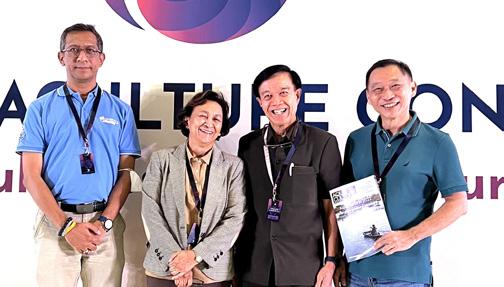
Blue Archipelago, Malaysia can be regarded as the regional example of an integrated farm with hatchery, grow out and processing plant. A joint presentation by its CEO, Wan Nadhri Wan Fauzi and COO, Annuar Sani described the challenges in managing the company which has a total of 464 ponds in two locations. It has full traceability and after years of cost controls, the mantra is to remain sustainable. Each pond is a P&L centre; Wan Nadhri asked, “If we cannot control at the pond level, how can we control the total farm?” In terms of costs of production (COP), feed is the major cost component at 35% and being in Malaysia, the cost of labour is rather high at 11%. Although they attempt to be market driven where the demand is for 14g-16g shrimp, their harvest strategy is harvesting at optimal point of COP.
In his presentation on monitoring consistency in shrimp production, Dean Akiyama discussed at length the importance of variance component analysis (VCA), which is the amount of variation in a parameter (pond production) that is affected by other variables (farm management, water quality and feed). The variation in a pond can range as such: biomass at 5.2-9.0 tonnes; mean body weight at days of culture (DOC)100 at 1419.4g; survival at 47-93% and FCR 1.51-2.66. Akiyama said that post larvae have an estimated 25% influence on pond production.
Industry leader in Thailand’s shrimp industry, Dr Chalor Limsuwan detailed his field experiences in handling disease problems in Southeast Asia. He cautioned on the impact of El Nino. With high temperatures rising to 3234°C and sunny days with rising phytoplankton blooms, farmers should expect moulting, high mortality from soft shell and opaque muscle.
In Thailand, WFD occurs at DOC 30-50. “But after the problem is solved, the remaining pond stock develops slow growth, forcing farmers to harvest,” said Limsuwan. Centex researchers have identified Vibrio as the main cause of WFD. On the other hand, Enterocytozoon hepatopenaei (EHP) can cause slow growth if the post larvae are already infected before stocking. The recommendation by Centex is to keep water covering just the pond bottom at pH9 or more, inducing the spores to shoot the polar filament, thus resulting in 90% of noninfective spores.



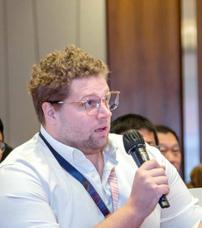

Apparently, outbreaks of EHP, WFD, IMNV (infectious myonecrosis virus) and AHPND are increasing in several regions in Indonesia, but their severity is location specific. Outbreaks of IMNV are rising in Banten and AHPND is increasing in Manado and Bangka. In the latter region, EHP outbreaks are rising too. “However, AHPND is reportedly mild in Sulawesi, Lombok and Sumbawa which explains a trend to relocate farms to these eastern regions,” said a PMI member. The situation is worst in Lampung in Sumatra where industry players said outbreaks of all these diseases have been rising.
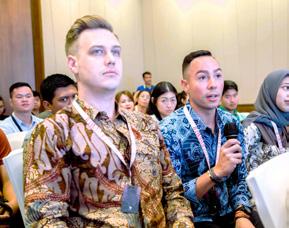
Martha Aulia Mamora , Adisseo discussed ways to deal with multiple infections in shrimp farming. The reality in shrimp farming is multiple diseases - AHPND, EHP, WSSV, IMNV, Vibriosis and WFD. Oubreaks of IMNV, WFD and vibriosis increased at DOC30 to DOC60. She proposed a holistic solution, combining preventive and corrective approaches with functional additives and detailed results of actions to minimise losses.
Melony Sellars , CEO, Genics presented on biosecurity audits. Using the recommendations at Viet Uc, a leading aquaculture company in Vietnam, she demonstrated what can be achieved with best practices. Here, the outcome is awareness and compliance to biosecurity leading to predictability of grow-out harvests. The Viet Uc farm was successful in setting up a high density nursery system from PL12-PL42 and stocking of grow-out with high health shrimp.
Rizky wishes to expand this exchange of ideas and learning from each other’s experiences to include young farmers from other countries. “This is not because we have done enough in Indonesia, but we know that we can share and learn together with other young farmers in Asia. I believe that if we can work together to market our shrimp as Southeast Asian shrimp.”

LALSEA and LALPACK are on-farm, ready-to-use microbial solutions added to rearing water, to the soil or coated on the feed.
LALSEA and LALPACK help enhance farm performance and profitability.
Lallemand has selected the best strains to safely support a good pond environment and optimize animal gut and immune health using its experience as a pioneer and primary producer of yeast and bacteria for more than 100 years.
Not all products are available in all markets nor associated claims allowed in all regions.
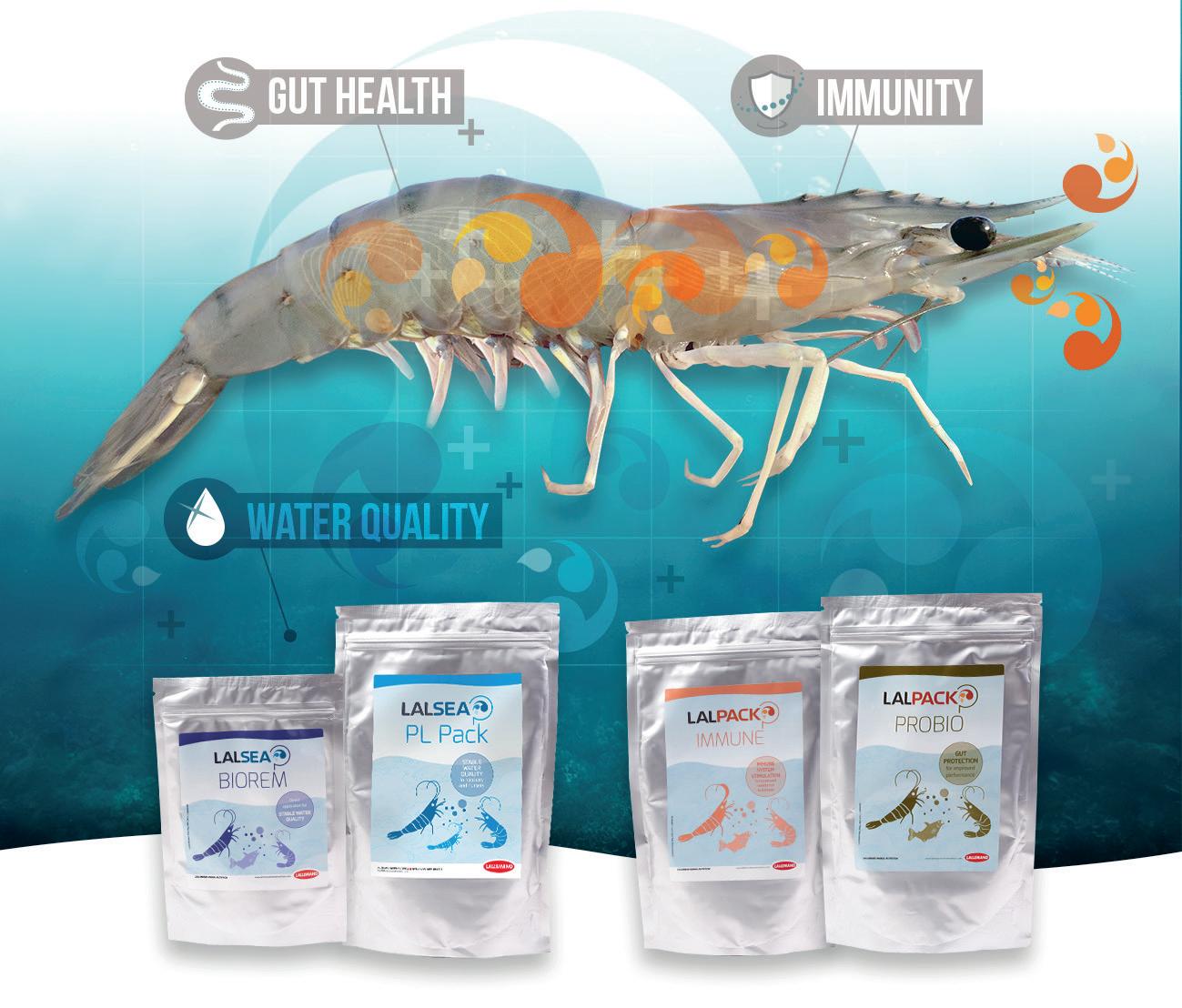
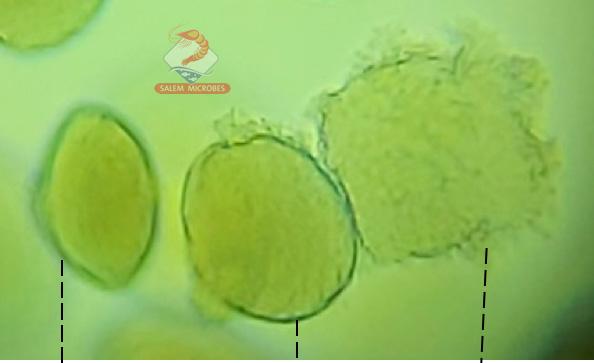
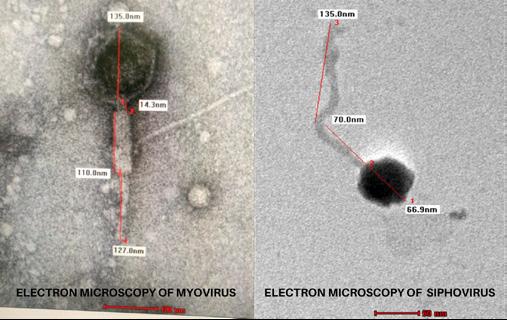 By D. Ramesh Kumar, M. Mathan Kumar, Sasibhusan Manna, Chandan Kumar and Sudharsan Das
By D. Ramesh Kumar, M. Mathan Kumar, Sasibhusan Manna, Chandan Kumar and Sudharsan Das
Recent scientific research has brought to light the importance of maintaining good and stable microbiome in shrimp and fish throughout the culture cycle. Amidst current disease challenges, we believe that bacteriophages will be helpful against virulent pathogens. They can maintain the natural ecosystem of the pond while mitigating effects of pathogens and without damaging the essential microbiome population.
Salem Microbes Pte Ltd started research on bacteriophage therapy in 2018. Supported by a strong R&D team, qualified field technical staff and an aquaculture laboratory, the bacteriophage consortia for shrimp hatchery and shrimp grow out were launched in early 2023. Today, we are strong in bacteriophage research, specialising in isolation, characterisation and formulation of phage cocktails within a short turnaround. Our R&D team ensures quick screening during sudden disease outbreaks and develop bespoke formulation of bacteriophages from our expansive library of bacteriophages maintained on-campus.
Probiotics reduce the chances of infection by competitive exclusion, but once the critical levels of Vibrio species dominate the environment, it becomes nearly impossible for probiotic bacteria to exclude the pathogenic bacteria. A quick intervention is required during such critical conditions. This should be non-residual and non-GMO in nature, and which does not affect the microbiome. This is the concept of phage therapy which is highly specific and quick acting specifically targeting aquaculture pathogens.
A good bacteriophage consortia should have identified lytic phages, specific against pathogens selected from the target environment. Phage cocktails against pathogens should be continuously upgraded to maintain the pathogen spectrum and uphold specificity and infectivity (Figure 1).
The cocktails of V phages for hatchery and grow out are quite different in their formulation, specificity and purpose. The product V Phages Hatchery targets the specific pathogens prevalent in the hatchery and water source, live feeds and its environment. V Phages Growout targets the common pathogens especially Vibrio spp. which are the main causes for bringing down the productivity of a shrimp pond by causing vibriosis. Shrimp show signs of poor appetite, slow growth, loose shell, damage in the hepatopancreas, white gut disease, white faeces disease (WFD), and running mortality syndrome (RMs), all of which lead to crop losses.
V Phages cocktail targets Vibrio species such as Vibrio parahaemolyticus, Vibrio alginolyticus, Vibrio harveyi, Vibrio campbellii and other pathogenic Vibrio spp. (Figure 2)
The product V Phages Growout was launched in early 2023, after extensive trials under controlled conditions. It was distributed for public use with a technical awareness program and farmer meetings. We have recommended its use as a prophylactic treatment to avoid current challenges with RMS, white gut disease and WFD which are caused specifically by severe infections of Vibrio spp. However, the use of the product is at the discretion of each farmer based on the stage of culture and risk of crop loss. Below we describe some case studies.
Intact
Phage infected colony showing partial lysis
Phage infected colony completely lysed, cell contents with multiplied phages spread out in search of their host
In the Pramanik aquafarm in Nankar village, Chandaneswar, Odisha, owner Umakanta Behera, is a farmer with 16 years of experience. The farm was selected to demonstrate the product. Umakanta also owns a retail outlet to supply feeds and health products to other farmers.
The farm has 12 ponds with sizes ranging from 1,500m2 to 3,000m2 water surface area (WSA). Litopenaeus vannamei post larvae (PL10) were stocked in three nursery ponds. These were later transferred to nine ponds after 34 days (DOC 34) on attaining average weights of more than 1g.
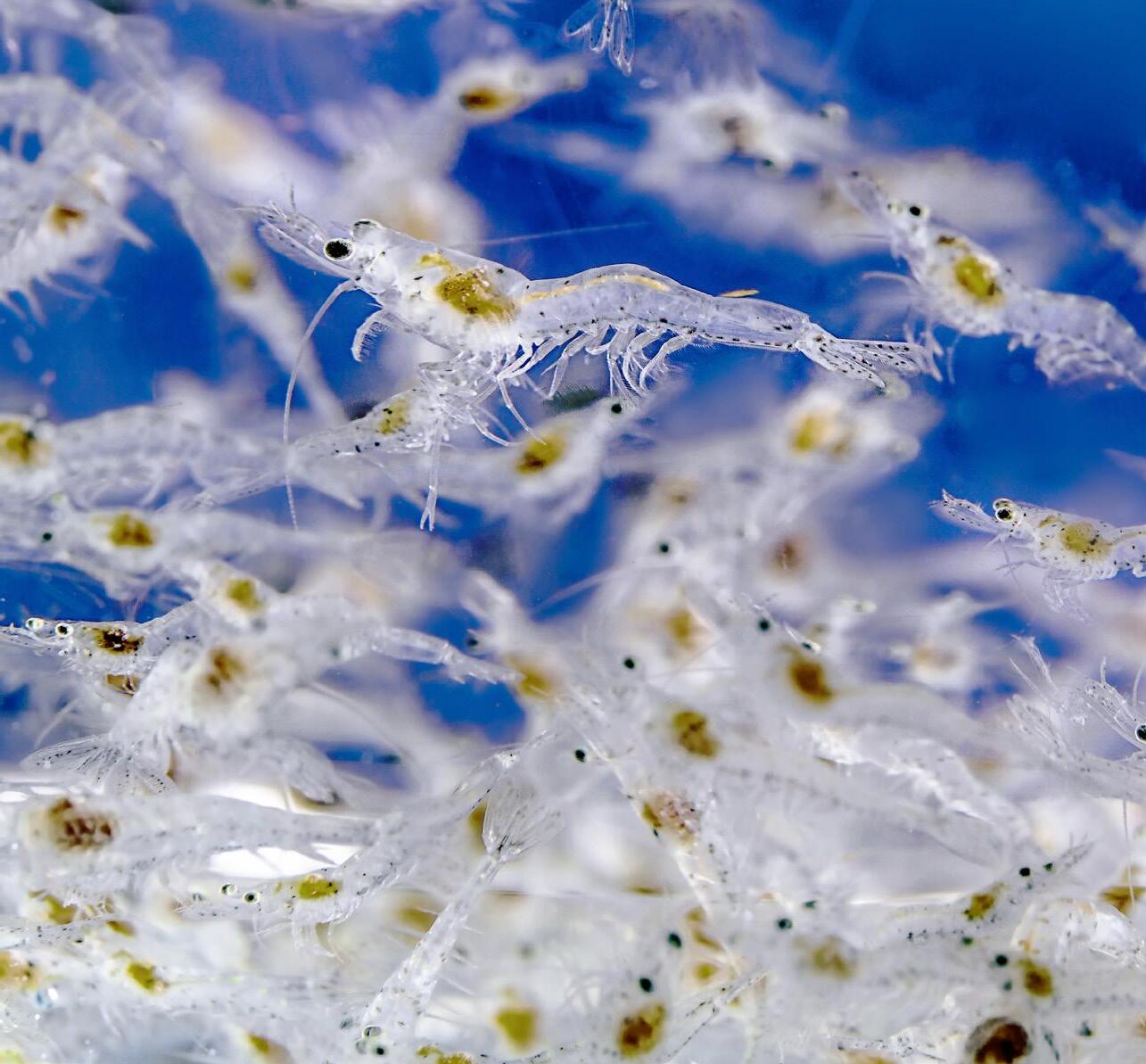
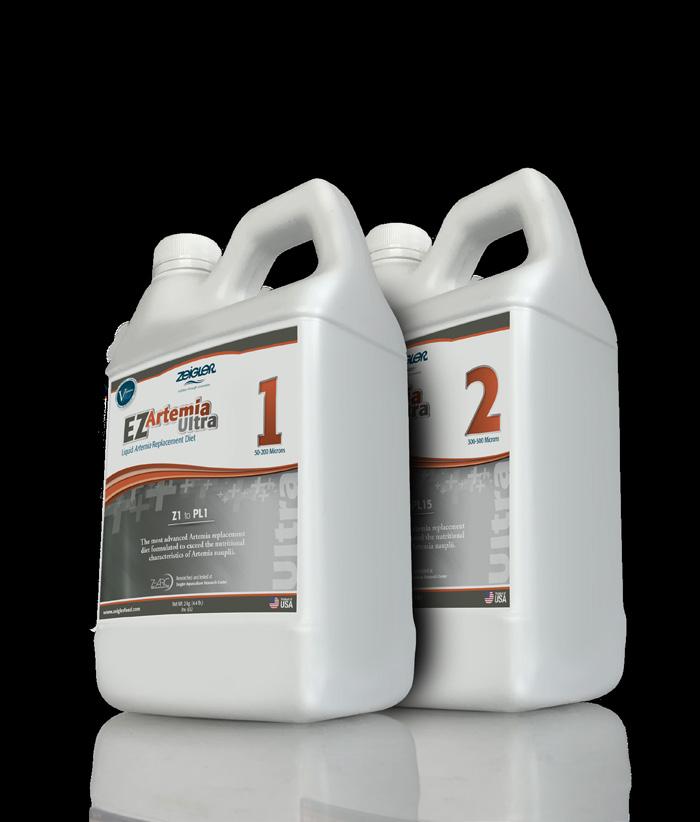
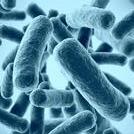



During culture, four ponds were infected with vibriosis (pond Nos. 1,2,11,12) which were adjacent to one another sharing bunds, and showed symptoms of white gut disease between DOC66 and DOC69. This infection correlated with a drop in feed intake of 6 to 14kg/day over 7 days. Shrimp tested negative for Enterocytozoon hepatopenaei (EHP) and V Phages Growout application was recommended as a therapeutic treatment.
In this case, the primary aim of bacteriophage application was to reduce the spread of the infection to the other shrimp in the same pond and/or nearby ponds. It was also to prevent mass mortality, thereby extending the culture cycle.
The application of the bacteriophage resulted in the following (Figure 3).
• The number of shrimp showing white gut disease was reduced to a large extent.
• There was a consistent increase in feed consumption for the next 14 days, until harvest.
• An overall drop in feed intake for 3 days was observed in all the ponds (both infected and not infected) due to the very high temperature at above 40°C.
• There was good growth performance. The farmer could harvest shrimp at DOC91 and DOC 92 at size 66/kg to size 55/kg. This was much earlier than targeted because of a price crash in May 2023.
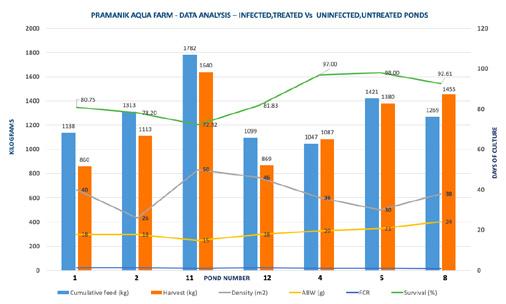
From the above, we concluded the following.
• The unplanned harvest which was characteristic of white gut disease was avoided.
• Analysis of harvest data of the four infected and treated ponds revealed that the loss in survival was from 26% to 20% respectively. This is assumed to have happened within the period of DOC67 (when initial feed drop was noticed) to DOC91 i.e., the harvest date.

• The spread of infection to the adjacent ponds was prevented, as there were no new outbreaks of white gut disease, during this observation period from DOC73 to DOC91.
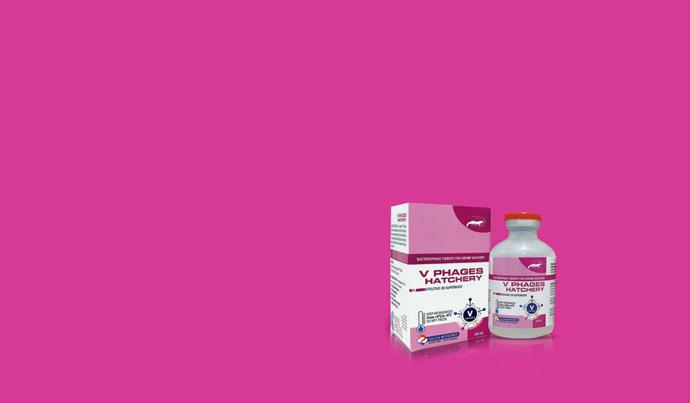
• The cumulative feed intake and FCR of the infected ponds did not differ much from the three uninfected ponds, selected for study. This clearly states that the mortality was controlled immediately.
• V Phages Growout application has helped the farmer to extend the culture cycle during the critical breakeven and profitable period.
The dosage for V Phages Growout was at 100mL/4,000m 2 . This bacteriophage was also given as a feed supplement, concurrently in two feeds (first and last) for 7 days as per standard protocol for this product. During this cycle a heterotrophic bacterial probiotic was applied as per their regular schedule. No sanitiser or disinfectant was applied to these treated ponds.
Venu owns a 3-acre (1.21ha) pond in Nidamarru village, West Godavari District, Andhra Pradesh. He stocked 7 lakhs (700,000) of L. vannamei post larvae. RMS occurred from DOC35, and mortality averaged 60 shrimp/day. The diseased shrimp were tested negative for EHP with PCR but were positive with high levels of vibriosis infection.
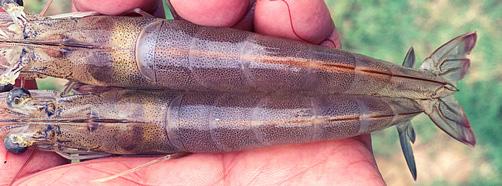
V Phages Growout was applied at 100mL /4,000m 2 in water at DOC41 followed by adding the product as a feed supplement in 4 feeds/day from DOC42 onwards. There was a positive sign of recovery with mortality reducing to

There was a drop in mortality and absence of RMS in shrimp with the application of the bacteriophage. There was a large improvement in feed intake. On DOC 46, a partial harvest of 2 tonnes was achieved. It was observed that shrimp showing signs of RMS infection was considerably reduced at harvest, indicating the containment of infection due to targeted bacteriophage treatment against vibriosis.
Case study 3: White faeces disease
Bijaykumar Nayak owns a 5ha farm with 20 ponds of varying sizes in Silda village, Balasore district, Odisha. This farm was stocked with L. vannamei post larvae in February 2023. Two months after stocking, the farm gradually experienced WFD. We used pond No 2 as a case study. In this 5,000m2 pond we observed very few floating white faecal strands at DOC72 which increased drastically at DOC78. The symptomatic animals when tested were EHP negative. Vibrosis was suspected and V Phages Growout was applied at 100mL/4,000m2
Subsequently, by DOC85, the number of floating white faecal strands was reduced drastically but was still appearing in check trays. We suggested to the farmer to apply a second dose at DOC86 at the same dosage. By DOC90 white faecal strands almost stopped appearing. The pond was harvested at DOC103. Until this period the daily feed rate was consistently increasing with no drop in the daily feed ration. The average weight of the shrimp was 16.5g at harvest. The estimated survival rate was 92%.
We observed that this is a strange case where even with large numbers of white faecal strands floating, hardly any shrimp mortality was observed. The average body weight was always increasing and reached an average of 0.2g/day after the first dose and was 0.23g/day after the second dose of V Phages Growout.
Overall, the weight increases were from 10.53g to 16.50g between DOC78 and DOC103 (i.e., 25 days) which translated to a biomass increase of 1.65 tonnes. The total harvest was 4.57 tonnes which could not have happened without this therapeutic phage intervention. It also prevented mass mortality and avoided a forced harvest.
References are available on request
Sudarsan Das is Senior Technical Officer.
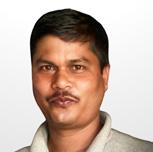


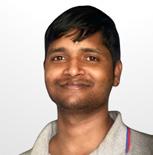

All authors are with Salem Microbes Private Limited, India.
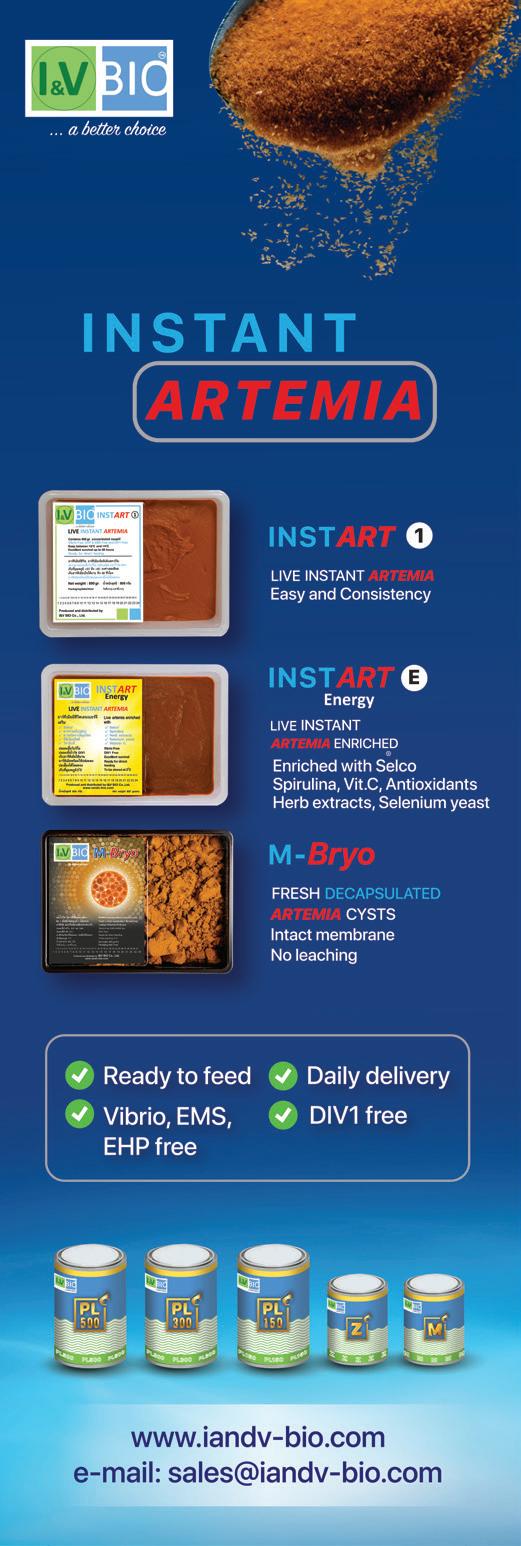
The aquaculture industry is growing fast, facing constant pressure to produce more for less. Interest in fish and shrimp is increasing as people around the world recognise seafood as a great source of protein and an essential part of a healthy diet. As a result, fish and shrimp markets have enormous growth potential.
Fortune Business Insights predicts shrimp market revenue will rise from USD 33.81 billion in 2021 to USD 53.63 billion by 2028. Predicted growth for the fish market is equally positive; global fish consumption per capita per year increased from 7kg in 1961 to 15kg in 2017 and is expected to double again by 2050.
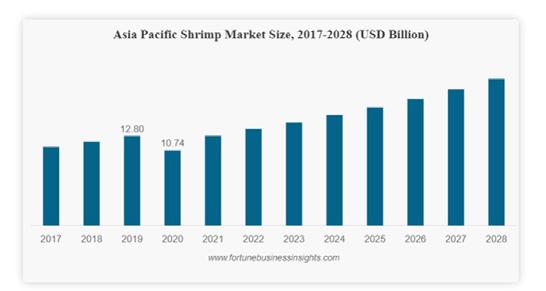
Increasing the density in a pond or tank is a delicate business and requires close attention to fish and shrimp health. When so many animals are together, water quality levels can change quickly, potentially putting entire stocks at risk before farmers are even aware there is a problem.
Accurate dissolved oxygen (DO) measurements are the first line of defence against harm to fish and shrimp. Reliable DO data allows farmers to predict when more oxygen is needed and adjust their aerators appropriately. Failure to turn on aerators due to poor-quality data could mean the total loss of a crop, sometimes in less than an hour.
Reliable DO data can also reduce energy costs; when farmers can eliminate uncertainty and run aerators only when needed, they can lower energy use and expenses without risking livestock health.
Frequent dissolved oxygen measurement with accurate DO sensors is key to maintaining optimal grow-out conditions. When farmers have access to accurate and reliable DO data, they can protect the health of their stock, increase their yields, cut costs and improve the overall efficiency of their businesses.
Fortune Business Insights expects shrimp market revenue to nearly double over the next decade, providing ample opportunities for shrimp culturists to grow their profits.
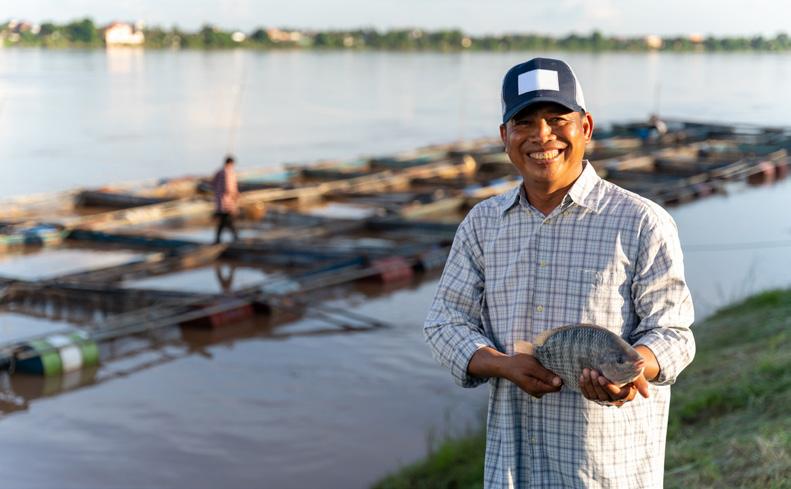
As cultures around the globe make seafood central to their cuisine, industry must improve production methods to produce more products at a lower cost.
However, quality matters. “You cannot analyse rubbish data,” says In-Situ’s Regional Sales Manager for Asia, Alex Hing.
Selecting the right technology is crucial to understand dissolved oxygen levels accurately. Fortunately, technological advancements have opened up new possibilities for reliable and cost-effective DO monitoring.
While galvanic DO sensors are commonly used for their low initial cost, optical sensors are worth consideration. Comparing the factors below before purchasing a new sensor can help farmers make the best possible investment for their business (Table 1).
Given these differences, optical DO sensors can prove to be a better investment for livestock health and operational growth in the long term.
Dissolved oxygen sensors, such as RDO® Blue from InSitu, use optical dissolved oxygen technology to provide exceptionally accurate and reliable DO measurements. This sensor is also customisable, available in handheld and fully automated configurations.
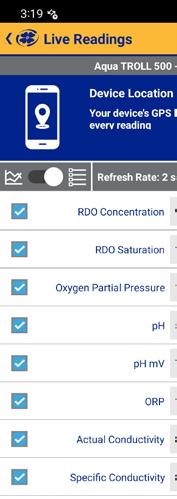



Galvanic DO Sensors Optical DO Sensors
Requires stirring, warm-up time, hydration, conditioning and special storage
Requires frequent recalibration
Membrane vulnerable to harsh conditions, leading to more frequent damage
Sensor cap needs replacement every six months
Less accurate at low DO concentrations, requires more sample volume for readings
Can be affected by sulphides, sulphates, carbon dioxide, ammonia, pH or chloride
Requires continual flow of liquid across the sensor face for accurate readings
Ready to use straight out of the box.
Holds calibration much longer
Membrane durable and longlasting, leading to lower cost of ownership
Sensor cap needs replacement every year, caps store calibrations for easy, one-step setup
More accurate at low DO concentrations and with lower sample volumes, leading to more accurate readings overall
Unaffected by sulphides, sulphates, carbon dioxide, ammonia, pH or chloride
Does not require continual flow of liquid across the sensor face, increasing the range of environments in which sensors can reliably operate
“In-Situ provides a wide range of devices from handheld to stationary units that fit the needs of different culture practices,” says Nelson Lam, an aquaculture consultant for EcoHealth Aquaculture Technologies. “Handheld units are versatile, suitable for small scale, open pond culture and farms on a budget. Stationary devices can be integrated with a computing system tailored to your needs for advanced farms where automation is an option.”
For farmers focused on growing their business, an instrument with both spot-checking and continuous data collection capabilities provides built-in future flexibility if the needs of the operation change. Instruments such as In-Situ’s RDO Blue and Aqua TROLL 500 allow aquaculturists to take grab samples with the VuSitu mobile app or install the device in a pond, tank or open pen for remote, continuous data access.
“We can help you with personalised service,” says Hing. “A consultant can help you find the solution right for your farm.”
Dr Giana Bastos Gomes, now Head of Marine Biotechnology at Temasek Life Sciences Laboratory in Singapore, chose remote monitoring as her preferred data collection method for her PhD research at City University of Hong Kong. For her studies to succeed, she needed continuous data to catch changes in water quality before fish started showing signs of disease. For her studies to succeed, she needed continuous data to catch changes in water quality before fish started showing signs of disease.

In one study, she installed an Aqua TROLL in participating farmers’ open pens and ponds. “With this equipment, I can trust that data is always being collected,” she says. “The cost comparison was favourable, especially given the amount of data we were getting; the installation was straightforward; and the company representatives were very helpful in getting everything set up.”
She added that continuous monitoring allowed her to alert farmers when there was a change in their water quality. While low DO can do the most damage if not responded to quickly, looking at DO alone does not tell the whole story. It is also important to measure other parameters to understand the factors contributing to changes in water quality and achieve the balance required to maximise grow out.
In-Situ’s Aqua TROLL multiparameter sondes allow you to monitor several parameters simultaneously. Capture pH/ ORP, temperature, chlorophyll a, conductivity and other measurements with the same instrument for a complete picture of what is happening in your ponds, tanks or pens.
Mark Chan of Kizen, an aquaculture consultant company, says continuous monitoring allows fish farmers to use open pens to protect their operations from harmful algal blooms. “By tracking parameters 24/7, we are able to give the farmers enough time to take steps to protect their fish.”
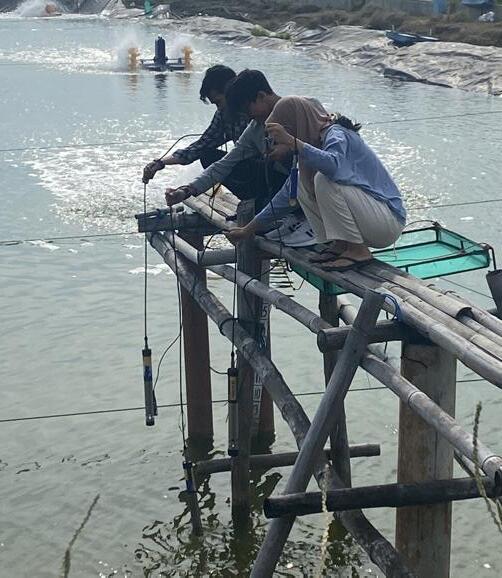
An Aqua TROLL multiparameter sonde can be used to take continuous measurements or collect spot-check readings, delivering data right to an iPhone or Android through the VuSitu mobile app, available in more than fifteen languages.
Nelson Lam uses an Aqua TROLL 500 to collect client data. “This is a robust unit with high accuracy. It is easy to maintain and care for and is great for daily use. Every farm should have this device to increase their productivity.”
“If we can measure, we can predict,” Gomes says, “Then we can be proactive. Even a small improvement in mortality numbers can make a big difference to farmers.”
Reliable dissolved oxygen measurements are essential for farmers who want to take advantage of an expanding market. Accurate data means farmers can make more informed decisions when managing the health of their operations and be strategic in growing their businesses.
Hing says this is the biggest benefit of the accurate data and reliable performance of In-Situ equipment. “If you have easy access to accurate DO measurements,” he says, “You can increase the efficiency of your design. When you have confidence in your data, you can increase your density and not worry about your fish.”
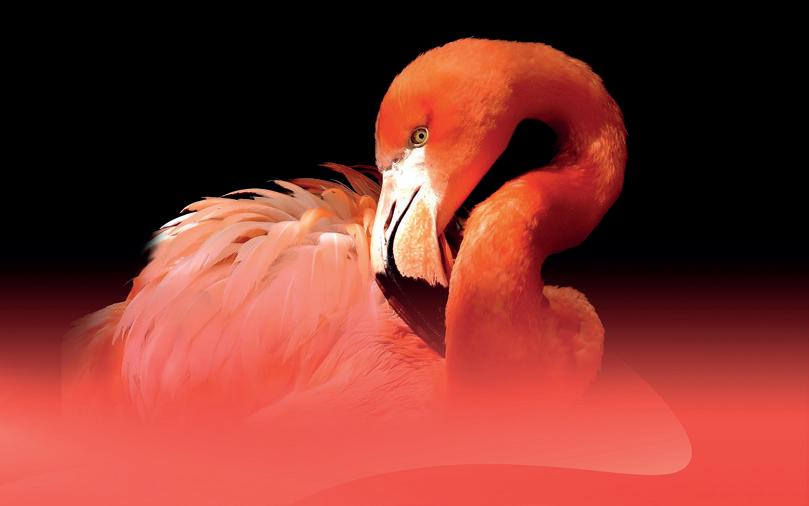


An optimised feeding protocol helps hatcheries increase post larvae production with higher profitability within a short production season
By Eva Werbrouck, Alfredo Medina Rodas and Geert RombautDue to seasonal temperature changes, Mexican shrimp hatcheries need to produce 70% of the national shrimp post larvae (PL) demand between March and June. This is to allow grow-out farms to focus their culture in summer. For the hatcheries, this means achieving high volumes through large production capacity, increased stocking density, faster growth and the implementation of a twoculture phase system.
In this article, we describe a recent field trial conducted by INVE Aquaculture which showed that an optimised feeding protocol can help hatcheries get the most out of their 4-month season - thanks to a 27% increase in post larvae production and a 20% higher profitability.
In Mexico’s standard two-culture phase system, the first phase covers nauplii stage 4-5 to post larvae stage 6 (PL6) and the second phase covers PL6 to PL12 (harvest stage). Average body weight samples taken upon transfer from phase 1 to 2 indicate that substantial improvement of this important culture parameter is possible.
feeding protocol in comparison with the local standard hatchery protocol. Some of the tanks were fed according to the hatchery’s standard protocol, while the remaining tanks were fed according to INVE’s Best Balance protocol. Other aspects of the culture management such as water treatment and microalgae cultivation were kept in line with the hatchery’s standard procedures.
The hatchery standard protocol uses different types of feed and brands (liquid diets, microparticle feed and flakes) as well as additives, multivitamins and probiotics from different commercial manufacturers. Artemia cysts from the regular EG® brand (INVE Aquaculture, Salt Lake City, US) were used and traditionally harvested using a double mesh to separate the nauplii from the empty cysts and hot water (75°C) for disinfection. EG Artemia is an INVE brand for non-enhanced cysts that hatch readily without the need for a specific treatment during hatching.
As shown in Table 1, INVE’s Best Balance protocol included 68% more Artemia and 28% fewer diets on dry matter basis.
The objective of the trial in a commercial hatchery in Sonora state, Mexico, was to evaluate the productive and cost-benefit performance of INVE’s ‘Best Balance’ feeding protocol in comparison with the local standard hatchery protocol Some of the tanks were fed according to the hatchery’s standard protocol, while the remaining tanks were fed according to INVE’s Best Balance protocol Other aspects of the culture management such as water treatment and microalgae cultivation were kept in line with the hatchery’s standard procedures
Alfredo Medina Rodas, Global Tech Support Manager Shrimp Hatchery at INVE Aquaculture commented, “Although larval development and growth can be positively impacted by factors such as genetic improvement of breeding lines, stocking density, and water management, optimised nutrition still seems the obvious solution. That is why we set up a trial to investigate if a carefully balanced feeding protocol could add effectiveness to the larval rearing stages, allowing hatcheries to produce more, faster growing and stronger post larvae.”
Table 1. Overview of Artemia and diet consumption for the Best Balance and the standard hatchery protocol.
More concretely, the protocol included the following products:
• EG SEP-Art cysts 225 Knpg, hatched according to the IFU and the nauplii separated from their shells and cysts using INVE’s SEP-Art CysTM 2.0 tool. This equipment consists of 16 magnetised bars that retain the cysts and empty cyst shells, keeping the nauplii in the suspension without damaging or injuring the nauplii (Figure 1) and maintaining the feed quality.
• FRiPPAK® FRESH diets (#1 CAR, #2 CD, #3 CD) and FRiPPAK® PL+ ULTRA diets (PL+150, PL+300), and health booster diet Sano S-PAK (0/2). FRiPPAK® FRESH diets contain microencapsulated particles to keep the nutrients from leaching into the water. Appropriate particle size in function of the stage is crucial e.g., for zoea stages the size should be below 50µm for optimal ingestion.
Importance of Artemia
• Sanolife® MIC and Sanolife® PRO-W were used as probiotics and Sanocare® FIT as a water conditioner.
The objective of the trial in a commercial hatchery in Sonora state, Mexico, was to evaluate the productive and cost-benefit performance of INVE’s ‘Best Balance’
The hatchery standard protocol uses different types of feed and brands (liquid diets, microparticle feed and flakes) as well as additives, multivitamins and probiotics from different commercial manufacturers. Artemia cysts from the regular EG® brand (INVE Aquaculture, Salt Lake City, US) were used and traditionally harvested using a double mesh to separate the nauplii from the empty cysts and hot water (75°C) for disinfection. EG Artemia is an INVE brand for non-enhanced cysts that hatch readily without the need for a specific treatment during hatching.
As shown in Table 1, INVE’s Best Balance protocol included 68% more Artemia and 28% fewer diets on dry matter basis
José Jaime Muñoz Medina, Sales Manager Mexico added, “The Best Balance protocol draws its beneficial effects from a well-balanced mix of live feeds and quality artificial diets in the feed package used.”
Table 2. Results of the main technical indicators evaluated in the trial. The stock was carried out in modules 3 and 6 using 30m³ concrete, lined tanks. In module 6, tanks 15, 16, 17 and 18 were fed according to INVE’s Best Balance protocol (INVE BB), and tanks 14, 19, 20 and 21 followed the hatchery standard protocol (std protocol). Module 3 was stocked one day later, with INVE BB tanks 3, 4, 5, 6 and std protocol tanks
23 and 24.
Table 2. Results of the main technical indicators evaluated in the trial. The stock was carried out in modules 3 and 6 using 30m³ concrete, lined tanks. In module 6, tanks 15, 16, 17 and 18 were fed according to INVE’s Best Balance protocol (INVE BB), and tanks 14, 19, 20 and 21 followed the hatchery standard protocol (std protocol). Module 3 was stocked one day later, with INVE BB tanks 3, 4, 5, 6 and std protocol tanks 1, 2, 7, 22, 23 and 24.
Growth was evaluated through daily body weight evaluation from PL3 onwards using the LarvIA application; previous values were estimated according to the trend (Figure 2). LarvIA is an app that uses artificial intelligence for counting and measuring post-larvae in an efficient and standardized way.
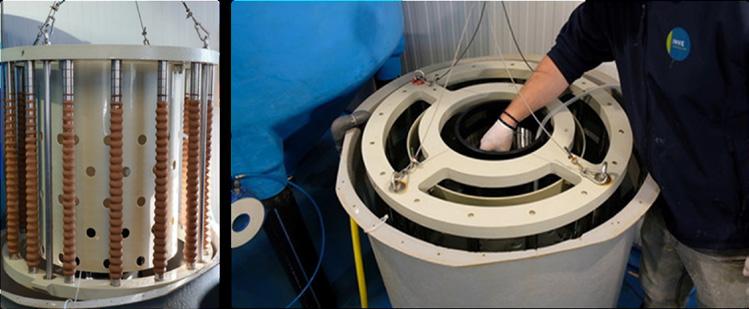
As shown in Table 2, the observed results at the end of the first larval rearing phase demonstrated a clear impact on growth, biomass reached per tank and feed conversion rate. Compared to the standard hatchery protocol, INVE’s Best Balance protocol resulted in similar survival, but with higher average PL body weight (+43%), higher tank biomass (+35%) and a 20% more efficient feed conversion ratio (FCR).
2 below, the observed results at the end of the first larval rearing phase clear impact on growth, biomass reached per tank and feed conversion rate. standard hatchery protocol, INVE’s Best Balance protocol resulted in similar higher average PL body weight (+43%), higher tank biomass (+35%) and a 20% feed conversion ratio (FCR).
Growth was evaluated through daily body weight evaluation from PL3 onwards using the LarvIA application; previous values were estimated according to the trend (Figure 2). LarvIA is an app that uses artificial intelligence for counting and measuring post-larvae in an efficient and standardised way.
The Hydrotech Drum Filter Value series focuses on reduced maintenance, increased component quality and simplified operation – all to give your plant maximum filtration performance at a minimum operational cost.
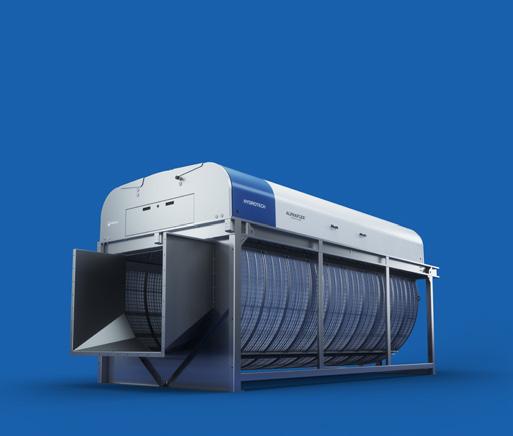
Call +46 (0)40 42 95 30, or visit www.hydrotech.se
Post larvae cultured under INVE’s BB protocol reached transferable size in 12 days (1.4mg/PL3), while it took 15 days under the standard protocol (1.3mg/ PL6). A shorter phase 1 culture period not only brings the opportunity to run more production cycles per season, but also enhances the survival rate. Considering a 4-month season, this implies eight cycles with the standard protocol versus 10 with INVE’s BB protocol.
This means a 27% increase in post larvae production, e.g. from 1 million to 1.27 million PL produced. The consequent additional revenues far outweigh the extra costs linked with increased post larvae production (nauplii cost, phase 2 feed cost) and the additional feed cost of INVE’s BB protocol during phase 1 (Table 3).
Table 4 summarises the economic analysis of the hatchery’s standard protocol versus INVE’s BB protocol and concludes on an increased profitability of 20%.
Post larvae cultured under INVE’s BB protocol reached transferable size in 12 days (1.4mg/PL3), while it took 15 days under the standard protocol (1.3mg/PL6). A shorter phase 1 culture period not only brings the opportunity to run more production cycles per season, but also enhances the survival rate. Considering a 4-month season, this implies eight cycles with the standard protocol versus 10 with INVE’s BB protocol
This means a 27% increase in PL production, e.g. from 1M to 1.27M PL produced. The consequent additional revenues far outweigh the extra costs linked with increased PL production (nauplii cost, phase 2 feed cost) and the additional feed cost of INVE’s BB protocol during phase 1 ( Table 3)
Table 3: Summary of the income (PL price) and cost estimates in support of increased profitability. Feed cost estimates resulted from the INVE BB – standard protocol trial (15 days of culture).
4 summarises the economic analysis of the hatchery’s standard protocol versus INVE’s BB protocol and concludes on an increased profitability of 20%
We conclude the following:
• The use of INVE’s Best Balance protocol in phase 1 of the hatchery culture cycle increased post larvae size and harvestable tank biomass and improved the feed efficiency.
• The higher inclusion of Artemia was the main driver for increased growth.
• Increased post larvae size allows for more cycles per season, and thus a higher seasonal post larvae production.
• This protocol unlocks the hatchery’s production potential and increases the hatchery’s profitability.
• Best Balance aims to deliver robust post larvae that maintain their high quality during grow-out.
However, it is emphasised that Best Balance is not a fixed protocol, but an approach to shrimp hatchery culture in which the use of high-quality products is adjusted to local culture conditions.
Eva Werbrouck is Product Manager shrimp formulated diets
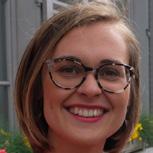
Alfredo Medina Rodas is Global Tech Support Manager Shrimp Hatchery
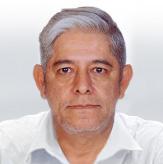
Geert Rombaut is Product Manager Artemia and Live Feed Authors are with INVE Aquaculture (A Benchmark Company).

Catering to diverse market demand globally, Alejandro Tola Alvarez says that he focusses on the multiplier model to scale in a market of 35-40 billion fingerlings annually

The GenoMar Genetics Group is an international aquaculture breeding and distribution company providing genetically improved tilapia to farmers globally. In Asia, it has production and distribution centres in the Philippines and Malaysia and most recently in Vietnam. The Genomar Supreme Tilapia strain (GST) was developed through more than 30 years of selective breeding in Luzon, Philippines. In 2021, Genomar Genetics Vietnam started with a hatchery in Tay Ninh province with an annual production of 50 million fingerlings.
Q: How is the global demand for genetically selected tilapia?
Tola Alvarez: We work with an assumed global tilapia production of 6.5-7 million tonnes annually; from there we estimate the global demand for tilapia fingerlings to be at around 35-40 billion /year.
This a very big number, comparable for example with the annual demand for day-old-chicks in the broiler industry (30-40 billion birds) and much larger than the global market for Atlantic salmon fertilised eggs (0.8-1 billion).
Producing the exact figure is not easy because the fingerling conversion ratio (FLCR) or how many fingerlings you need to produce a kg of tilapia differs widely among countries and production systems.
The difference in demand for tilapia fingerlings is mostly driven by differences in harvest size, fingerling stocking size and mortality levels in the country, region, or company. For example, in the Philippines or Bangladesh where harvest size is ≈ 250g and stocking size is ≈ 0.25g, you can easily get a FLCR of 8-10 while an efficient cage producer in the Americas that harvest fish to 1-1.2kg and uses 2-3g fingerlings, can get this number down to 1.3-1.5.
This market represents a huge opportunity for a primary breeding company like GenoMar; however, there are certain complexities in the market which I will come back to later.
Q: What is Genomar’s business model?
TA: Our core business model is the multiplier model, which includes the production and distribution of fingerlings and juveniles from our own broodstock of proprietary brands/ lines. We are using our own distribution companies located in different tilapia production countries.
This business model means that we:
• invest in acquiring, building, and operating hatchery/ nursery infrastructures (multiplication centres),
• transfer elite broodstock material from our own breeding centres into the multiplication centres,
• work on the mass multiplication of these elite genetic materials to produce hundreds of millions of eggs and fingerlings,
• develop our own logistic and commercial solutions to reach the end user with our genetics and finally,
• support our clients in getting the best results from our genetic materials.
as
that we operate in multiple markets, we reject the notion of a universal approach to breeding that suits all situations. He sees “a tilapia industry that needs more regulation in natural resource management and more adoption to technology to increase the degree of environmental and pathogen control in the production systems. This is necessary to make productivity improvements and further develop a sustainable tilapia industry.”
While commercialisation is mostly directly to the end users (the farmers), indirect distribution through agents or dealers plays an important role in some Asian countries as they aggregate demand and/or provide credit to farmers.
The multiplier model is a complex model to scale production up to a market for 35-40 billion fingerlings annually because:
• Tilapia hatchery production is resource intensive (land and labour).
• Hatchery siting decisions need to be done very carefully to maximise biosecurity and temperature stability throughout the year.
• Tilapia reproduction is half science and half art, and egg production is heavily influenced by environment and management excellence.
• Tilapia has a reproduction strategy which means that fecundity is high, but survivability in early stages is relatively low, so you need to keep a large number of broodstock.
• The FLCR determines price levels and subsequent cost structures.
We believe that this is the right and safest model eventually because it allows us to be in control of the final quality of the product and to be near the end user. We can tell our unique story and help the farmer to document the performance and value of our stocks and thus justify our premium prices. It also means we must compete together with dozens of informal fingerling producers.
We are exploring alternative business models in certain markets such as contract farming, distributor licenses and supply of broodstock. There are requests every month from people wishing to acquire GenoMar´s broodstock but regrettably I have to decline these business opportunities. This is because we are not interested in small volume onetime transactions.
Q: Which regions and countries have you been very successful in?
TA: GenoMar Genetics is present in the two most important tilapia production regions: Latin America and Asia where 90% of global tilapia is produced. We are looking with interest at what is happening in Africa, but so far, we have not taken a position there.
After a period of expansion during 2017-2022, our current focus is on consolidating and growing market shares in our existing distribution businesses in Brazil, Colombia, Vietnam, the Philippines, and Malaysia. In time, we will resume geographical expansion when there are some obvious candidates based on industry size, fingerling price level or degree of professionalism in the industry.
Brazil
We are bullish on the growth and potential in Brazil. We have a market share of 20-25% through our brand Aquabel and we will be launching our premium genetics brand GenoMar very soon.
This is really an exciting market that shows the competitiveness of tilapia, a popular choice for consumers, resulting in a thriving domestic market with a high penetration in restaurant menus and retail fish counters. The country also has a high export potential for its tilapia. It has achieved this - thanks to an organised industry working to promote consumption. The right positioning of tilapia which includes product innovation for retail and food service, and professional investors, many coming from the poultry industry, have also contributed to this development.
Vietnam
The market in Vietnam has, since the start in 2021, developed very well. In less than two years, the market share is 20-25% and our customers are reporting high survival and fast growth for the harvested GenoMar tilapia.
Q: In terms of criteria for selection, what are the preferred criteria based on regions and countries?
TA: One of the main roles of the primary breeder is to constantly evaluate the selection index in line with the changing needs of the stakeholders in the value chain. Figure 1 shows how we have evolved from selecting only for growth to selecting for growth in multiple environment and sizes, fillet yield, resistance to various diseases and reproduction based on the changing needs of the industry in the last 30 years.

Given that we operate in multiple markets, we reject the notion of a universal approach that suits all situations. The global tilapia market has diverse requirements (Table 1) and can be broadly categorized into two segments: table fish, involving the sale of approximately 250g tilapia in countries like the Philippines, and large fish, weighing over 800g or the supply of fillets to processing industries in countries such as Brazil, Colombia, Vietnam and Malaysia. In response, we have developed distinct multi-product strategies tailored to these demands, recognizing the need for separate products. Each product aligns with specific selection indices and distinct breeding programs, enabling us to maximise economic returns for farmers in these regions.
Product
Main weighted trait in the selection Table fish Medium-large sized fish
GenoMar GAIN Growth Asia Asia
Latin America
GenoMar STRONG Survival Asia Asia
GenoMar 250 (from 2024) Balanced growth/survival Asia
GenoMar 1000 (from 2024)
Latin America
Balanced growth/survival Asia
Latin America
GenoMar YIELD (from 2024) Fillet yield Asia
Aquabel
Latin America
Balanced growth/survival Asia
Latin America
Table 1. Global product strategies based on preferred traits in tilapia supplied to different markets.
In addition, we regularly collect the performance data of our products from the industrial field trials and even from the farmers to document evidence of selection response and increased profitability of using our new generation of commercial fingerlings. These results have been constantly disseminated via popular science articles in various magazines by our technical team.
Q: Which species, niloticus vs mossambicus are you working on?
TA: We only work with Oreochromis niloticus which constitutes probably 85-90% of global output. We used to have a breeding program for saline tilapia in Singapore using Oreochromis mossambicus genetic material collected from various rivers in South Africa. This program was offloaded from our portfolio some years ago and now it is operated by a well-known local Singaporean institution. The central breeding idea in the program was to improve growth performance in saline-tolerant mossambicus rather than to bring salinity tolerance in fast growing niloticus
I personally believe that saline tilapia might be an important segment in the future either as full seawater farming of tilapia, as an alternative crop in brackish water shrimp ponds or both. But the promise of the saline tilapia market has yet to materialise.
We are looking at options to take a position in the red tilapia breeding segment which is important in some of the markets we operate in, such as Vietnam and Colombia. We believe there are good opportunities for genetic progress in red tilapia as most of the commercial populations have high levels of inbreeding.









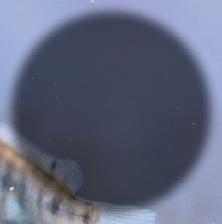
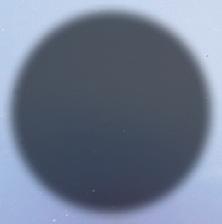
Q: There is a large demand for monosex male tilapia. Please comment on how to move ahead without the use of hormones. Are there any genetic options?
TA: Firstly, we must acknowledge that monosex tilapia production technology using 17-methyl-testosterone was one of the major innovations contributing to the expansion and productivity improvements in tilapia farming since the 80´s.
However, we do believe that the use of hormones in tilapia production will eventually be phased out in many markets either by regulations or by consumer demand. GenoMar has been looking at how genetics can contribute to control sex in Nile tilapia and what applications this knowledge might have with the goal of producing all male populations without hormones or sterile populations.
First, we have confirmed the presence of a major sex determining genetic marker (QTL) in chromosome 23 in our populations (Figure 2). However, this marker alone is not sufficient to predict genetic and phenotypic sex with 100% accuracy.
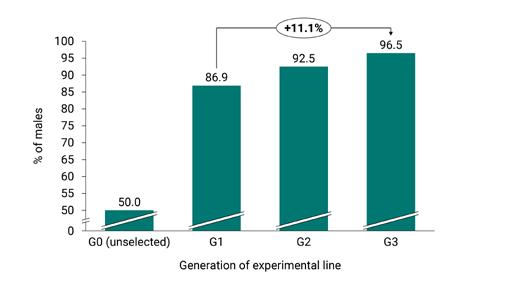

It is well known that the genetic architecture of sex determination in Nile tilapia is complex and involves both genetic and environmental factors, one of which being water temperature during sex differentiation. We have other candidate regions of the tilapia genome to explore in more depth and we are redesigning our genetic tool (SNPchip) to enrich it with markers from those regions.
We have interesting information to mention in our work with temperature and sex determination. We have ongoing research with an experimental line aimed at using temperature dependent sex determination (TDSD) to produce monosex male tilapia. The results showed a good selection response within just three generations of selection (Figure 3), with approximately 40% of the families producing 100% monosex males after TDSD.
Despite the promising results observed in the TDSD experimental line, there are still unresolved matters that must be addressed prior to commercialization. There is some unpredictability in the proportion of males, likely due to the intricate sex determination mechanism in tilapia, which needs further investigation. Additionally, it is crucial to examine the correlation between this trait and other economically important traits.
Q: How many founding families and how many generations has Genomar achieved so far?
TA: GenoMar took over the GIFT breeding program in 1999 at generation 9. Since then, we have been running a classical family-based breeding program with the number
of families oscillating between 150-250 per generation. We are now working on the 33rd generation of GenoMar tilapia and the 6th generation of Aquabel tilapia (Brazil).
Q: What are the future plans for Genomar in terms of research and new strains?
TA: We are an R&D-based company investing a substantial part of our revenues in innovation and product development. In fact, we have been an innovator in tilapia breeding for more than 20 years and have played a key role in bringing innovations to market such as DNA-based pedigree assignment, implementing fillet yield and diseaseresistance traits in the selection program, developing the first SNP-array for tilapia, and implementing full genomic selection.
We are, of course, not stopping there and we are continuously challenging ourselves to do better. Right now our focus areas of innovation are phenomics for carcass traits, specific disease resistance and survivability and adaptation to different production systems and climate change.
Q: What is your vision of the global tilapia sector and the role of Genomar in it?
TA: The tilapia industry has grown massively in terms of volume in the past two decades to become one of the big three aquaculture species by volume and value (together with salmon and shrimp). It has done so primarily due to the expansion into new production areas/water bodies and through the dissemination of improved genetics.
Looking ahead in the next one to two decades, this is what we see as necessary:
• Expansion of global consumption: Tilapia must improve its image, gaining greater recognition for its versatility and quality, and taking a greater share of the plates of consumers around the world through affordability and product diversification.
• Profitability: An industry where there is good enough profitability for the different actors in the value chain so players can continue to invest in new production models, innovative technologies, and basic research.
• Sustainability: An industry that competes hand in hand with poultry and salmon as the most efficient protein converter with lowest overall impact. An industry that is well regulated and adopts technology to increase the degree of environmental and pathogen control in production systems and that makes productivity improvements that yield more tilapia per hectare or m3 or per unit of CAPEX.
Finally, of course, we envision GenoMar as the preferred genetic partner of the industry in this development. We have the history, the technology, the products, and the commitment.
Figure 2. A genetic marker (QTL) associated with sex determination in tilapia is found in chromosome 23.While volumes continue to move upwards, production costs are rising steadily so margins are becoming increasingly thin.
By Eric RoderickThe global tilapia
While volumes continue to move upwards, production costs are rising steadily so margins are becoming increasingly thin.
By Eric RoderickThe global production of tilapia is second to that of carp, but it is predicted to assume the
The global production of tilapia is second to that of carp, but it is predicted to assume the number one position soon. It is currently produced in over 150 countries in a wide range of culture conditions: in ponds and cages to intensive and super-intensive recirculation aquaculture systems (RAS), biofloc systems, as well as in aquaponics systems. Over 7.2 million tonnes of tilapia were produced in 2021 with a global value of over USD14.1 billion. Despite an apparent slowdown in consumption in the USA and Europe, the production in this sector is still increasing.
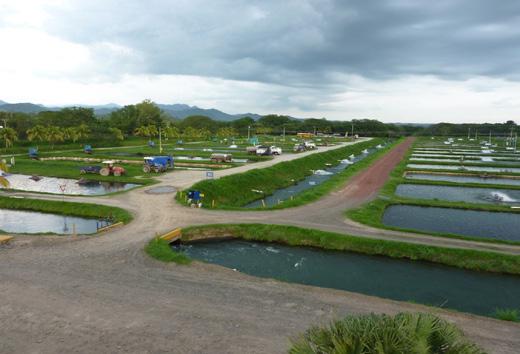
Global tilapia production is expected to reach 9 million tonnes in 2030 with an estimated value of USD2.3 billion. Rabobank (Sharma and Nikolik, 2022) reported that global tilapia production increased by 4.3% in 2022 and 4.8% in 2023 (Figure 1). Global demand for tilapia is projected to increase by 4.6% over the next 10 years. This expansion is fuelled by consumers’ increased focus on health and dietary choices, particularly in the USA and Europe, as well as soaring prices of other seafood species in the global markets. On the negative side, production costs are rising steadily and margins are becoming increasingly thin so efficiencies will have to be improved.
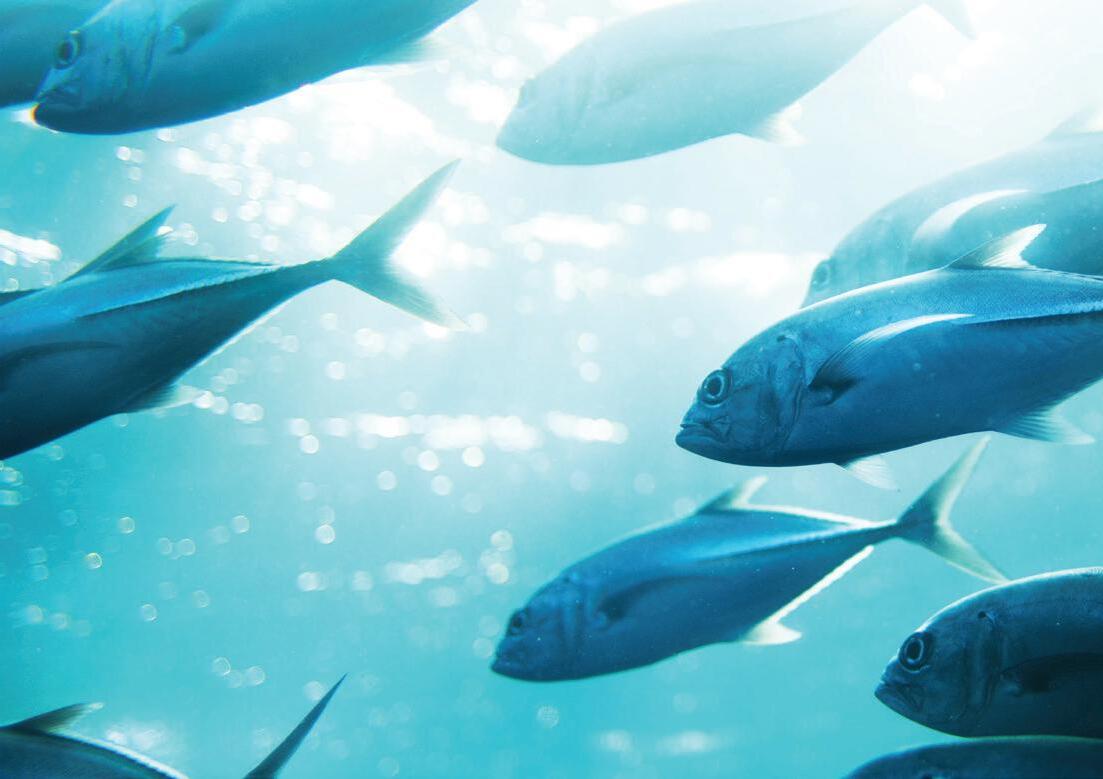
Built on partnership and innovation, Wenger is providing more opportunities for client success.
For almost a century, Wenger has delivered extrusion-based innovations to our partners. We’ve worked alongside you to develop new processing solutions and better products, providing our industry-leading expertise and ongoing support every step of the way.
We don’t plan on stopping any time soon.
Wenger’s global food processing family is growing, and we look forward to the exciting opportunities that lie ahead. We will continue to deliver even more innovations and technologies to benefit companies that share our vision of tomorrow.
Wenger.com
There has been a rapid global expansion of tilapia production during the last 10 years, especially in the big agri-industrial businesses using intensive rearing systems. Tilapia is a major global commodity and provides food security for millions of people in developing countries. Tilapia is now part of the global “white fish” market, competing with wild caught white fish, as well as farmed pangasius and catfish. With its green credentials and its ability to convert most forms of plant protein into a high-quality firm and mild tasting flesh, tilapia is seen as a real challenge to the dominance of these other white fish, particularly in terms of the value-added convenience food market which is expanding year on year.
The long-awaited recovery in the seafood sector has finally arrived after the Covid 19 disruption. In the fisheries and aquaculture sectors, this pandemic caused a dramatic slump in demand, with retailers, restaurants and largescale buyers having to scale down or ceased activities.
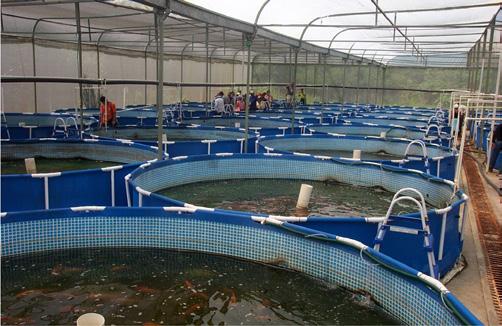
According to FAO, fish and fish products are among the most heavily traded food products in the world. Tilapia, an important internationally traded product, was also impacted significantly by the recent trade war between the USA (one of the main importers and consumers of tilapia) and China (the world’s biggest producer and exporter of tilapia products). The 25% import tariff increases imposed by the USA on Chinese tilapia imports had negatively impacted margins along the supply chain.
This allowed other countries to significantly increase their production and subsequent exportation of tilapia into the USA as they can now be far more competitive on prices. Colombia and Brazil have increased their exports to the USA, as they can now compete more effectively with Chinese imports. Colombia is currently the main supplier of fresh fillets to the US market and continues to invest in sustainable development and improvement of production standards to meet the US strict import requirements. Colombia has several new tilapia projects on-going and there is a big push by the Colombian government to increase domestic consumption too. Whole red tilapia is the most popular product in the domestic market in Colombia.
China is still the main producing country at 1.75 million tonnes in 2022, followed by Indonesia with 1.2 million tonnes and Egypt with over 1 million tonnes (an increase of 80% over the last decade and nearly all consumed domestically); altogether these three countries account for almost 75% of the total global production. Bangladesh, the Philippines and Thailand are also expanding, with Bangladesh producing over 370,000 tonnes and not showing any sign of a slowdown.

South and Central America are the fastest growing regions driven by Brazil and followed by Mexico and Colombia, where most of the production is either consumed domestically or exported as fresh fillets daily to the USA. There is a steady increase in most of the main producer countries of Honduras, Costa Rica, and Colombia. Brazil is currently the 4th largest producer where major expansion is occurring, mostly to supply local demand but also to compete in an overcrowded export market into the US. Brazil produced 530,000 tonnes in 2021 and tilapia accounted for over 60% of Brazil’s total aquaculture production.
Source:
(All Other Asia* -Bangladesh, Cambodia, Malaysia, Myanmar, Philippines, Saudi Arabia, Taiwan, Thailand, Vietnam;
All Other Africa* -Ghana, Nigeria, Uganda, Zambia, Zimbabwe;
Americas* - Belize, Brazil, Colombia, Costa Rica, Cuba, Ecuador, Guatemala, Honduras, Mexico, Panama, Peru, Venezuela).
The Brazilian Agricultural Research Company (EMBRAPA) reported that 4,862 tonnes of tilapia worth USD14.1 million were exported in the first half of 2022. This represents a 32% increase in volume and a 133% increase in value over the same period last year. Brazil has emerged as a strong contender in the frozen whole tilapia market, with exports in the first half of the year increasing in volume by 575% over 2021. Reports indicate that domestic demand is

strong. New investments in Brazil include Tilabras which secured USD9.7 million in October 2022 from Ocean 14 Capital Fund. Tilapia farming is Brazil’s largest aquaculture industry, helped by the abundance of freshwater (10 million hectares) and its tropical climate. In Brazil tilapia products represent about 98% of Brazilian aquaculture.
The US is the largest importer of tilapia, but domestic production has remained static for many years as it is not possible to compete on prices with frozen whole tilapia from Asia and fresh fillets from Latin America. The only viable option for big US producers like the vertically integrated Blue Ridge Aquaculture in Virginia which claims to be the largest indoor tilapia farm in the world, is to supply live tilapia mainly for the Asian market throughout the USA and Canada. They get a premium price, but this is a niche market. Traceability, freshness and locally produced (low food miles) are becoming important now.

Regal Springs, the largest vertically integrated tilapia producer in the world, plans to further increase production in 2023 with most of the growth coming from their Mexican and Honduran operations. It produced 68,000 tonnes in 2022 with farms in Honduras producing 28,000 tonnes Indonesia 26,000 tonnes and Mexico 14,000 tonnes. Mexico is where most of the increase will be generated,
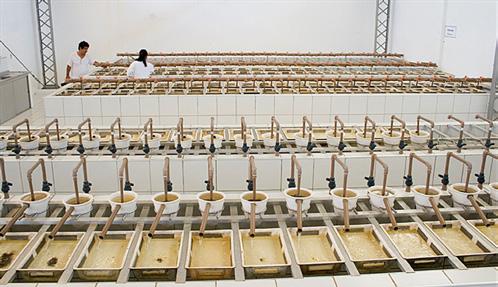
with a planned 30-35% increase in production as new farms come on-line fully. Regal Springs has started using blockchain technology to support the full traceability of its Naturally Better Tilapia brand range in Europe, the first aquaculture white fish producer to do so. The company recently received USD14 million in capital commitments that supplement more than USD20 million invested in operations in the last two years highlighting investor confidence in tilapia.

In Asia, Vietnam is expanding its tilapia production supported by its government’s efforts to raise production and create another whitefish export commodity with plans to double production by 2023. The Philippines is also increasing its tilapia production with strong domestic demand. Vera Bella a new Filipino company is marketing tilapia ice cream and tilapia cookies with good uptake by supermarkets. India has also increased production significantly to replicate the success in Bangladesh.
Across sub–Saharan Africa annual increases of 10% are currently predicted. Aqua Spark, the global aquaculture investment company has announced investments of USD50 million in Africa with promises of USD300 million more in the coming years. These investments reinforce the belief that African aquaculture will finally deliver.
As with all rapidly expanding agricultural enterprises, diseases tend to accompany global expansion. Historically the biggest threat to tilapia health was through Streptococcus spp. infections ( Streptococcus agalacticae and S. iniae ) which caused mortality ranging from 40- 80% resulting in significant economic losses especially when larger fish are affected.
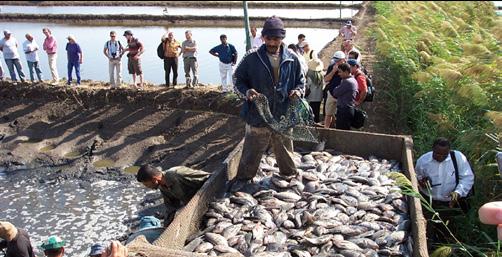
The Middle East is a latecomer to tilapia aquaculture; rising food security issues and increasing importation costs are reasons why many Middle East countries are beginning to invest heavily in aquaculture to reduce their dependence on expensive imported products. High imported feed costs, low seed availability and limited local technical skills are the main obstacles which need to be addressed. With the shortage of water, many hightech RAS and aquaponics projects are under construction throughout the region. Saudi Arabia has demonstrated the potential of aquaculture there with the success of its huge shrimp farm.
Africa, the home of tilapia, is only recently expanding its aquaculture industry, with investors eager to capitalise on the growing demand for tilapia throughout Africa due to the dramatic decline in capture fisheries over the last few years through overfishing. Driving the increase are Aller Aqua, Skretting, Nutreco and De Heus which have built new feed mills to supply high quality affordable feed to the industry. Many new hatcheries are supplying good quality fry and fingerlings.
African tilapia production usually means Egyptian production plus a small percentage spread thinly throughout Africa. There are new farms planned in Namibia, Rwanda and Uganda. Uganda’s “Aquaculture parks” on Lake Victoria are driving the expansion there. Yalelo, Chicoa and Victory Farms are all expanding their production to meet rising demand fuelled by the massive decline in wild catches. Victory Farms have recently received a USD35 million funding for its farms in Kenya and Rwanda, with plans to build new farms in Ethiopia Uganda and Tanzania.
Spring Genetics (Part of the Benchmark group) is undertaking genetic selection breeding programs to provide resistance to both Streptococcus species mainly in Latin America. Genomar has been marketing its Streptococcus resistant strains in Asia since 2021 under the brand name “Genomar strong ” after a 5-year R&D program.
Tilapia lake virus (TiLV) is still causing high mortality and many governments require TiLV free health certificates for imports of new tilapia stocks. There appears to be some resistance building in the populations exposed to TiLV. Also, the invasive nature of tilapia is being highlighted. As biodiversity issues become more important globally, many countries restrict imports of non-native species or only allowing them into closed RAS with high biosecurity status.
Many tilapia species can hybridise leading to loss of genetic purity in several of the endemic tilapia species. More research is needed to evaluate more of the lesserknown strains and species of tilapia. Some of these could have valuable genetic traits to help the industry expand and be more sustainable in the future.
Reference
Sharma and Nikolik, 2022. What To Expect in the Aquaculture Industry in 2023. https://research.rabobank.com/far/en/sectors/animal-protein/ what-to-expect-in-the-aquaculture-industry-in-2023.html
Email: eeroderick@aol.com
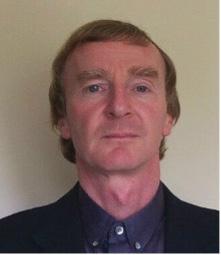
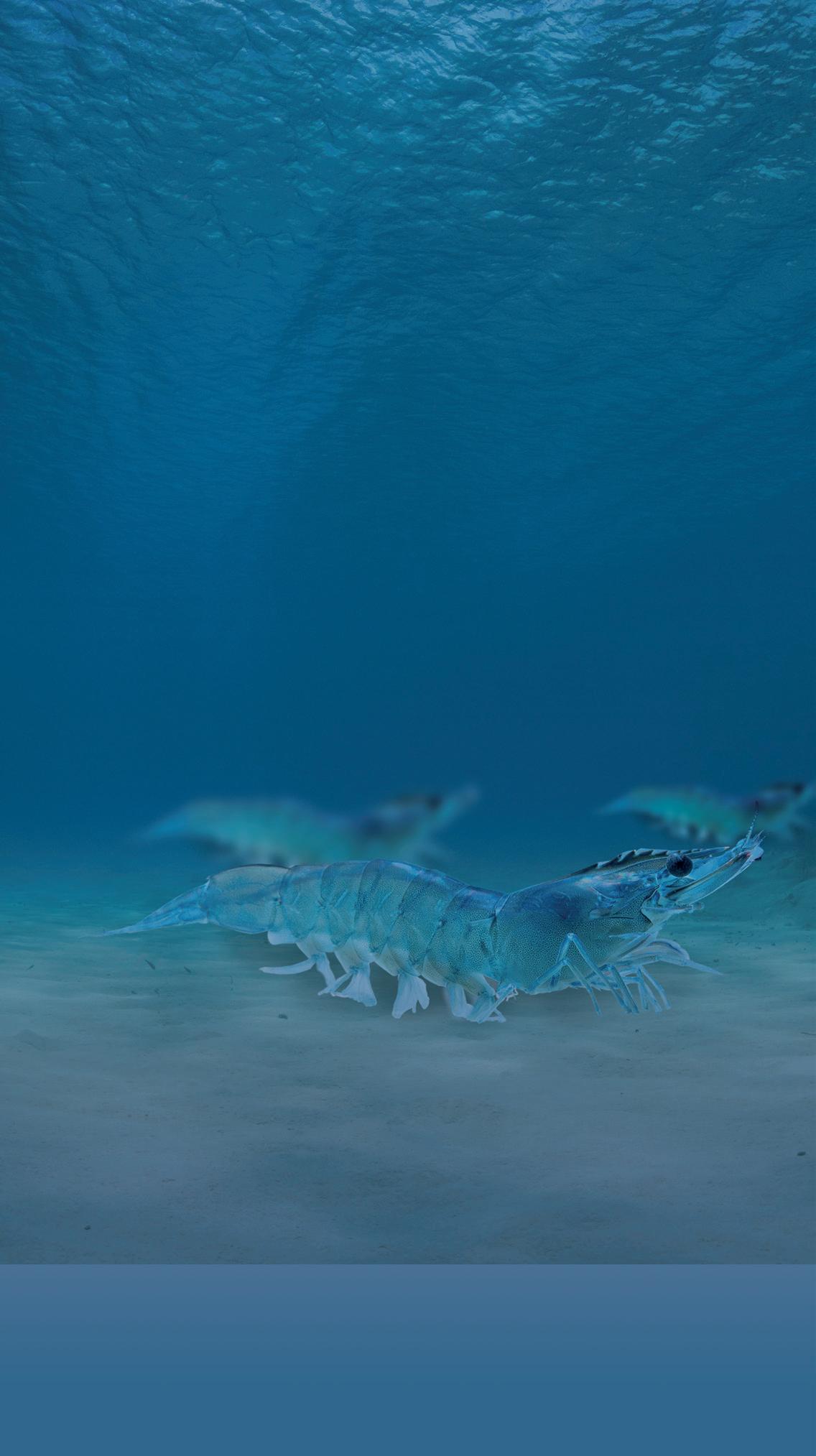

In the gazebo by the fishpond, 60-year-old farmer Luo and I chatted for a long time before seeing the fish. The sun was too strong at two o’clock, and he did not really want to feed the fish at that hour. “It is better to feed the fish later because the water temperature is too high.” He and his wife manage this 20-ha farm.
A 20ha farm is not a small area. If it is just a 2ha shrimp pond, the couple will be busier. This has to do with the fact that tilapia farming has become easier over the years. Tilapia used to be farmed twice a year or even “continuously harvested” following a complex schedule. But now, Huizhou fish farmers follow a single stocking and a single harvesting in a year. Last year, Luo’s unit production reached about 2.2 kg/m3, close to the average productivity level. “We cannot raise any more because we cannot sell them. Now, the booking of fish distributors to come and collect the fish often takes half a month, and then they are only willing to buy 2,000kg of fish. During this period, the biomass increases by another 2,000kg,” Luo added, “Some fish in my ponds are from last year and they are more than 3kg already.”
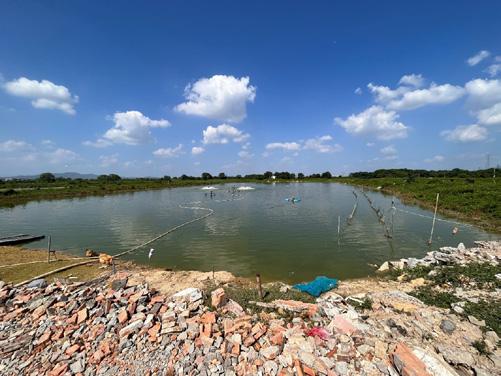
The difficulty with selling the fish also increases the feed conversion ratios (FCR). Over the past few years, the crude protein (CP) content of tilapia feeds has improved from 29% to 33%. If the fish is produced normally without the difficulty of selling, the feed conversion ratio (FCR) can be 1.1. But after keeping the fish in ponds for more than a year and finally selling the stock in the pond, FCR sometimes reaches 1.3-1.4. At present, tilapia feed costs around CNY6,000/tonne (USD841.98), which means that the feed cost is close to CNY8/kg (USD1.12). Then when labour, electricity, pond rental, fish packing and others are included, the production cost will be around CNY1-2/ kg while the selling price/kg of tilapia is about CNY9/kg (USD1.26).
Fortunately, based on the improvement of larvae quality and farming technology, the success rate of tilapia farming is high, at more than 90%. Streptococcus and enteritis are still chronic diseases, especially in the hot season. Once the water temperature is above 30°C, streptococcus outbreaks cause casualties. Many farmers currently use sulfonamides, the fastest way to control the disease. Although, this means a gradual increase in antibiotic resistance.
“For the fish that I sell to factories, I use more nonantibiotic solutions to treat diseases, such as mannan polysaccharides or plant extracts. However, the price of tilapia is very poor this year, and the price of healthcare farm products like immune stimulators is relatively high. When he knew I was writing an article for publication, Luo added the question, “Tilapia farming is hardly a profitable business. Is there a cheaper, non-antibiotic way to treat Streptococcus infections?”
Feed distributor for 20 years
“Luo is my client and he is right. It is difficult for tilapia farmers to make money right now,” said Huang, who has been a feed distributor for more than 20 years and everyone in the area knows his name. He went on to describe some challenges with selling prices.
Currently, there are two very mature marketing channels for tilapia in the market. The first is to sell to a processing plant. Last year, the processing plant bought 0.5-0.6kg fish at about CNY8.6/kg (USD1.20). Margins for the farmer were small, but it is still possible to be profitable with the right farm management. However, this year, due to reduced factory orders the offer price for fish of the same size dropped to CNY7.2/kg (USD1.01).
These prices barely cover feed costs. Farmers lose money for every kg of tilapia they sell to processing plants. The second channel is local markets and supermarkets. Last year, fish larger than 0.7kg could be sold to the local wet market at around CNY12.6/kg (USD1.76). The market requirement has been raised this year and only 0.75kg fish are collected. At the same time, the fish distributor requires that at least 30% of the tilapia in the pond is more than 1kg. But meanwhile, prices dropped to CNY10.6/kg (USD1.48).
“Distribution is so difficult now. You have to book one or two weeks in advance to sell the fish and the fish distributors are taking advantage of the situation.” Huang was also indignant. “But who else to sell it to? It is almost impossible to profit from selling it to a processor.”
Feed distributors and farmers are in the same boat, and when farmers struggle to make a profit, so do they. The number of tilapia farmers in the Lilin and Tonghu areas has decreased by 20% due to continued low profits. I saw many empty fishponds and houses on my way. But the amount of money lent out by feed distributors is increasing.
A regular extruded tilapia feed
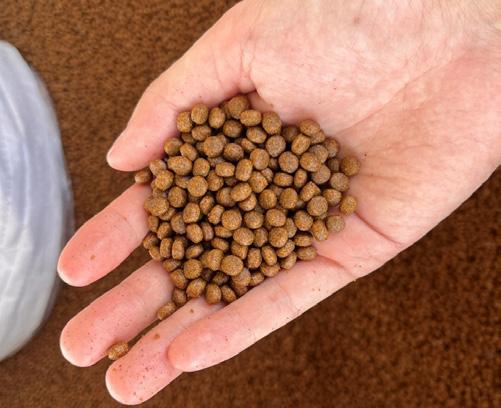
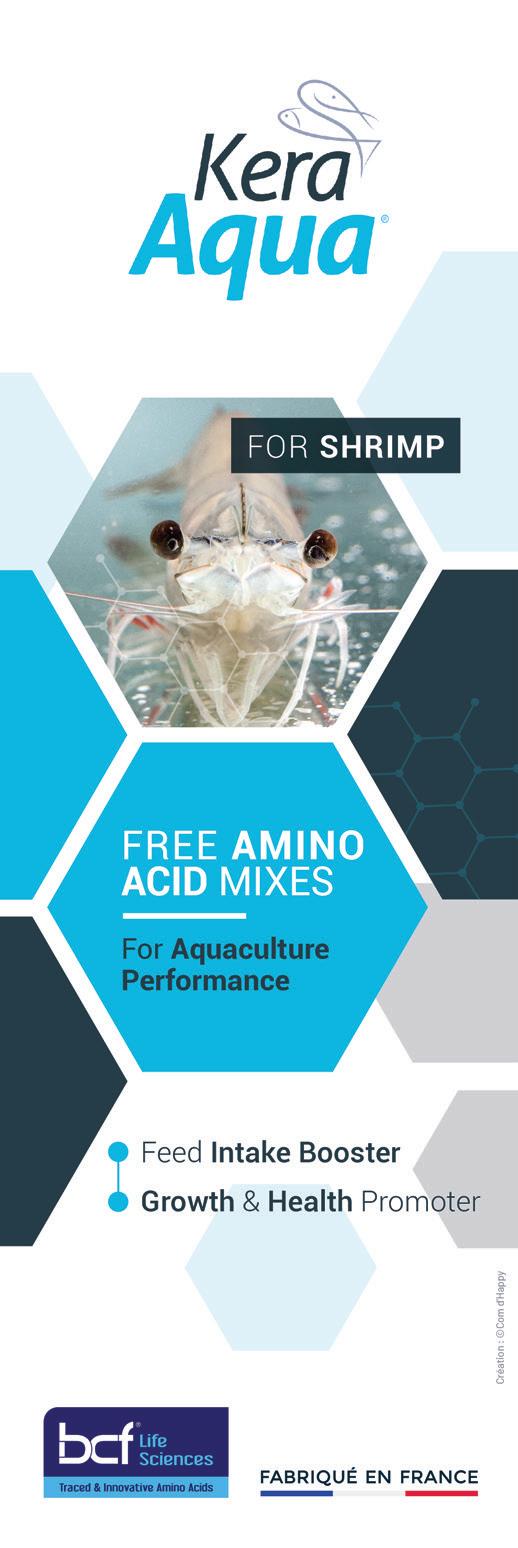
“Tilapia farmers are not rich. They borrow more than 90% of their feed costs from me. I do not get paid until they sell the fish,” said Huang. As we talked, a young man came over and bought two bags of feed. Huang added, “The debt lasts one year, and over 70% of them owe me over CNY200,000. Currently, the profit margin for distributing tilapia feed is only about 6-7%. We cannot afford to keep up with the debt. Since the beginning of this year, I have stopped giving feed credits to new clients. If they cannot pay cash, I can live without this business. For us and the farmers, this year will be a year of hardship; if the next year still looks like this, I do not know what to do with this business anymore”.
In the evening, I had a tilapia hotpot with feed salesman Li, who I have known for several years. It is the least we can do for the tilapia industry. During the dinner, he asked me about other job opportunities. “My sales have dropped by more than 30% this year, but my target is still growing. I have not received any bonus for two or three years. Among my friends who entered the market with me, I am the last person holding on. They have either changed careers or are selling shrimp feed. Only shrimp farming is still profitable.” He wants things to change, but it does seem that the poor profitability of tilapia farming in recent years will not change anytime soon.
Recently, farming freshwater fish such as grass carp and common carp have not been profitable either. So, this is not just a problem for tilapia. Production is too overwhelming, exports are lacking, and domestic demand is not strong. These three factors contribute to the dilemma of many freshwater fish farmers.
Feed mills’ profitability in fish feed production has been greatly affected. The net profit from one tonne of tilapia feed may not exceed CNY50. This is directly reflected in the feed salesman’s wages. The target sales volume for each feed salesman, once from 5,000 tonnes/person/year, has increased to 10,000 tonnes/person/year. However, the strict KPI system makes feed sales fall instead of rising and increases personnel mobility. Some of the salesmen who did well have even started selling fish for farmers. They also help customers connect to fish distributors, to forge better relationships with customers.

Selling animal health products or farm packs is also a way to supplement their income. That is how we met. In addition to his feed business, he has also sold AQUATE, Alltech’s farm pack product for the past few years. This has helped him solve some problems on the farm.
There are several reasons for frequent tilapia infections. Streptococcus may be the beginning, but in subsequent enteritis, ascites and other secondary symptoms, we often see a variety of pathogenic bacteria infections. Mannan oligosaccharides in Aquate have coagulative and inhibitory effects on various pathogens such as Streptococcus agalactiae and Aeromonas hydrophila
In an experiment conducted at Kasetsart University, we found that red tilapia treated with AQUATE continuously, in response to challenge stress from Streptococcus and A. hydrophila, has significantly improved the survival rate (Guilherme de Souza Moura et al., 2012). The mechanism behind this also involves the repair of mucosal immune by AQUATE.
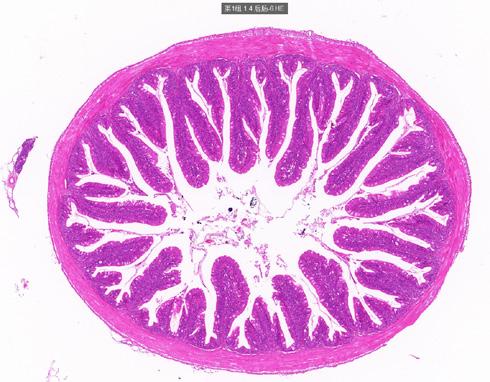
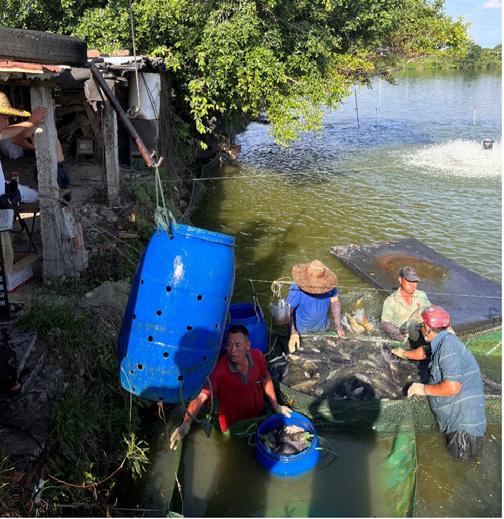
A study conducted in China found that feeding ACTIGEN, an important ingredient of Aquate, can repair the gill mucosa and intestinal mucosa of goldfish, and this can even stop the infection of a deadly parasite, Ichthyophthirius multifiliis (Xiaoli Huang et al., 2022). This conclusion has been applied to many companies in China. The practical application at an eel feed mill showed that the eel gut was significantly thickened, and the number of goblet cells visibly increased due to adding one kg/tonne of Aquate in the feed (Figure 1). Improving the structure of the intestine, as the organ with the largest contact area with the outside environment, will undoubtedly improve the disease resistance of aquatic animals (unpublished data).
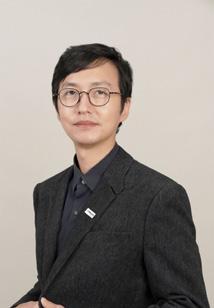
In China’s aquaculture market, there are more than 70 commercial species. As one of the few global species, tilapia has a clearer process and pathway from breeding, growing, processing and marketing than many other species. It is correct to say that Chinese farmers can produce tilapia steadily now and in the foreseeable future.

China’s tilapia industry is a main street business. Everyone knows their responsibility, and they have known it for years. However, the fish distributing problems faced by farmers, the cash-flow security problems faced by feed distributors, and the profitability problems faced by feed mills are all under unprecedented challenges due to some global problems, such as consumption recession and raw material costs. For a mature species and business model like tilapia, a few branches are off the main street to make a clever detour. The box has been there, so firmly, so certain for so long, making it very difficult to think “out of it”. There may be only two options, forward or backwards. One thing is for sure, it cannot continue like this.
Email: Yufan.Zhang@alltech.com
Fish and vegetable oils are not only excellent sources of energy but are also superior sources of lipids such as phospholipids and n-3, n-6 and n-9 PUFAs. In shrimp feeds, fish oil also contributes dietary cholesterol required for moulting and growth.
By Martin Guerin, Waldo Nuez-Ortin, Martha Mamora and Dedi JusadiFish and vegetable oils are not only excellent sources of energy but are also superior sources of essential lipids such as phospholipids and n-3, n-6 and n-9 PUFAs. In shrimp feeds, fish oil also contributes to the dietary cholesterol required for moulting and growth.
Unfortunately, in the past 3 to 4 years, vegetable oil prices have drastically increased in price. Presently, prices are on average 1.5 times higher than in Q1-2019 and have reached as high as 2.5 to 3 times increase during Q2-2022 mainly due to the Ukraine crisis (Figure 1). In parallel, prices of fish oil, traditionally the most expensive of oils, but essential to aquafeeds, did not increase so drastically up to mid-2022. Thereafter, however, the price growth of fish oil started outpacing the price of other oils and after Peru’s latest fishing ban has exceeded USD5.0/kg in Q2 2023, i.e. over 3 times higher than in Q1-2019.
This places aquaculture nutritionists in Asia in a quandary since other raw materials have also increased in price, often faster than prices of locally consumed farmed fish. As a result, feed mills had no choice but to increase feed prices
Unfortunately, in the past 3 to 4 years, vegetable oil prices have drastically increased in price. Presently prices are on average 1.5 times higher than in Q1-2019 (i.e., at the start of the Covid 19 pandemic) have reached as high as 2.5 to 3 times increase during Q2-2022 mainly due to the Ukraine crisis 1). In parallel, prices of fish oil, traditionally the most expensive of oils, but essential to aquafeeds, not increase so drastically up to mid-2022. Thereafter, however, the price growth of fish oil started outpacing the price of other oils and has reached USD4.3/kg in Q1-2023, i.e., 2.5 times higher than Q1-2019.
so as to minimise erosion of margins and feed performance. Both farmers and feed mills suffer from these high feed prices, and any solution to reduce formulation costs is direly needed.
Figure 1 International prices of aquafeed leading oils from January to March 2023.
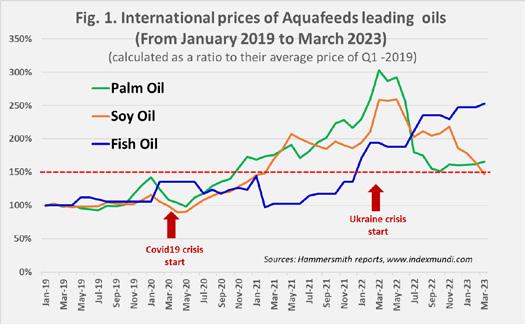
This places aquaculture nutritionists in Asia in a quandary since other raw materials have also increase in price, often faster than prices of locally consumed farmed fish. As a result, feed mills had no but to increase feed prices so as to minimise erosion of margins and feed performance. Both farmers and feed mills suffer from these high feed prices, and any solution to reduce formulation costs needed.
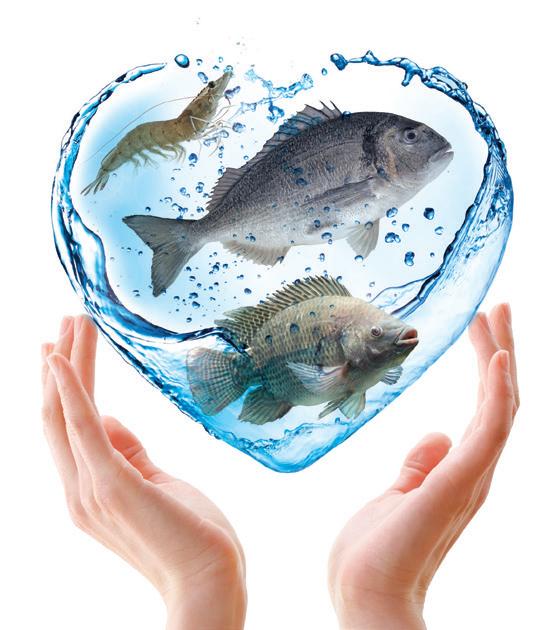
BOOST YOUR BUSINESS BY
Lysophospholipids (LPL) are obtained by controlled enzymatic hydrolysis of lecithin phospholipids renders the molecule more hydrophilic as a consequence of the removal of one fatty acid (Figure This higher affinity to water makes LPL good emulsifiers of oil in water and provides the m with capacity to boost digestion and absorption of lipids. LPL supplementation leads to better utili sation efficiency of the essential lipids and energy provided by dietary fats. Being an industrial producer Adisseo developed the LPL-based Aqualyso® STD with a LPL profile and specification that are highly
RESTRICT inappropriate use of antibiotics and chemicals
REDUCE losses from subclinical disease and outbreaks
INCREASE economical and ecological sustainability
BOOST feed perfomance and farm productivity
Figure 1. International prices of aquafeed leading oils from January to March 2023.Lysophospholipids (LPL) are obtained by controlled enzymatic hydrolysis of lecithin phospholipids that renders the molecule more hydrophilic as a consequence of the removal of one fatty acid (Figure 2). This higher affinity to water makes LPL good emulsifiers of oil in water and provides them with the capacity to boost digestion and absorption of lipids. LPL supplementation leads to better utilisation efficiency of the essential lipids and energy provided by dietary fats. Being an industrial producer of LPL, Adisseo developed the LPL-based Aqualyso® STD with a LPL profile and specification that are highly adapted to the needs of aquaculture species. Furthermore, the company is a leader in LPL research with over 15 years of shrimp and fish experience addressing specific challenges and application strategies.
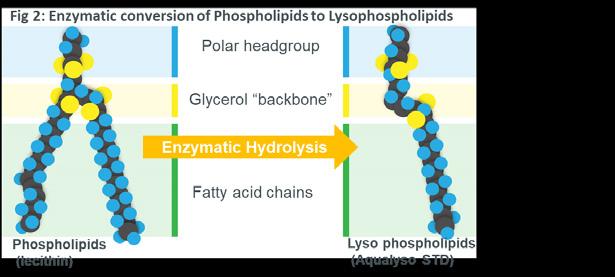
Results are summarised in Figures 3 and 4. Addition of 0.1% Aqualyso®STD significantly (p<0.05) improved the growth performance of fish fed feeds with 1% and 1.5% lower oil content. Simultaneously, the FCR of these diets was numerically slightly lower than that of the control feed. Even when fat was reduced by 2%, the additive helped to maintain growth performance at the same level as that of the control feed.
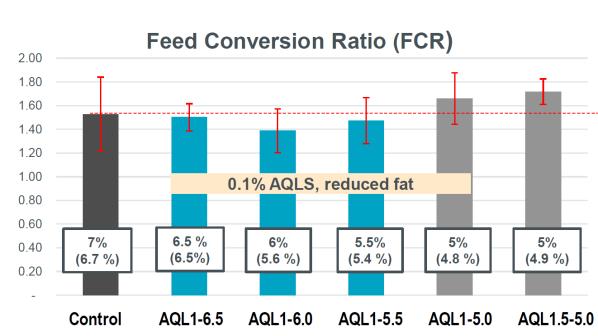

adapted to the needs of aquaculture species. Furthermore, the company over 15 years of shrimp and fish experience addressing specific challenges and applicati
A recent trial was conducted at IPB research facility in Bogor, Indonesia, and aimed to evaluate the capacity to reduce oil inclusion in catfish feed while maintaining growth and feed efficiency. Juvenile Pangasius fish (Pangasianodon hypophthalmus) of around 12g/fish were stocked in 30 hapas (2mx1mx1.5m), each with 20 fish, which were fed twice per day for 62 days.
A total of six experimental feeds were tested. A fishmealfree base diet with 31% crude protein (CP) and 7% fat (control) was designed to maximise growth for the experimental fish. Five iso-protein test feeds were formulated at 31% CP under a progressive 0.5% oil reduction down to 5% fat and supplemented with Aqualyso®STD at 0.1% or 0.15%. Overall oil reduction was based on equal reductions of fish oil and palm oil. Formulative changes resulted in potential saving effects ranging from USD13 to USD 51 per tonne of feed. A summary of the experimental feed trial is shown in Table 1.
30
the
research facility in
Indonesia Results Aqualyso®STD significantly (p<0.05) improve lower oil content Simultaneously FCR of these diets was feed Even when reduced by 2%, the additive helped to maintain growth performance at the same level as that control feed.
A recent trial was conducted at IPB research facility in Bogor, Indonesia capacity to reduce oil inclusion in catfish feed while maintaining growth and feed efficiency Pangasius fish (Pangasianodon hypophthalmus ) of around 12g/fish (2mx1mx1.5m), each with 20 fish, which were fed twice per day for

A total of six experimental feeds were tested A fishmeal-free base diet with 3 7% fat (control) was designed to maximise growth for the experimental were formulated at 31% CP under a progressive 0.5% oil reduction with Aqualyso®STD at 0.1% or 0.15%. Overall oil reduction was based on equal reductions of fish oil and palm oil Formulative changes resulted in potential saving effects ranging from feed. A summary of the experimental feed trial is shown in Table 1.
differences.
The diet with 1.5% reduced oil level and supplemented with 0.1% Aqualyso®STD, not only best growth performance but also in the highest hepatosomatic index (HSI), lowest liver fat lowest viscerosomatic index (VSI) (Figure 4). In line with observations in other species such largemouth bass or Atlantic salmon, the additive optimises fat utilisation and reduces the metabolic disorders associated with excessive fat accumulation in the viscera.
(*) Saving calculation excludes the price of the additive and uses March 2023 international prices of Peru crude fish oil and Malaysia palm oil (as per Hammersmith reports and Indexmundi.com). Saving potential varies between countries with prices of oils and additive.
51 (*) Saving calculation excludes the price of the additive and uses March 2023 international prices of Peru crude fish oil and Malaysia palm oil (as per Hammersmith reports and Indexmundi.com). Saving potential varies between countries with prices of oils and additive.
The diet with 1.5% reduced oil level and supplemented with 0.1% Aqualyso®STD, not only resulted in the best growth performance but also in the highest hepatosomatic index (HSI), lowest liver fat content, and lowest viscerosomatic index (VSI) (Figure 4). In line with observations in other species such as tilapia, largemouth bass or Atlantic salmon, the additive optimises fat utilisation and reduces the risk of metabolic disorders associated with excessive fat accumulation in the viscera.

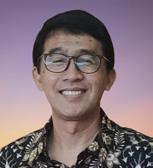

These growth performance effects of LPL have been proven also with other species, including tilapia, marine fish and salmonids. Similar application strategy and results were also observed in shrimp, in which this Aqualyso® STD allowed for oil or lecithin reduction while maintaining the performance quality of the feed.


In conclusion, within the context of fluctuating oil prices, aquafeed formulators can count on this LPL based product to make aquafeeds perform with less fat and energy levels, and therefore achieve significant cost-reductions. The Service Platform on Aqua Nutrition by Adisseo combines formulation experience and species-specific research on application strategies, and provides advice and services related to aquafeed formulation and processing.

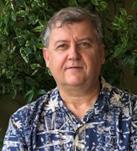 Martin Guerin is Regional Technical Manager Aquaculture, Asia Pacific/ Indian Sub-Continent, Adisseo. Email: martin.guerin@adisseo.com
Waldo Nuez-Ortin is Global R&D Manager Aquaculture, Adisseo.
Martha Mamora is Regional Sales Manager Aquaculture, Adisseo
Dedi Jusadi is Lecturer in the Department of Aquaculture, Faculty of Fisheries and Marine Science, IPB University, Bogor, Indonesia.
largemouth bass or Atlantic salmon, the additive optimises fat utilisation and reduces the risk of metabolic disorders associated with excessive fat accumulation in the viscera.
Martin Guerin is Regional Technical Manager Aquaculture, Asia Pacific/ Indian Sub-Continent, Adisseo. Email: martin.guerin@adisseo.com
Waldo Nuez-Ortin is Global R&D Manager Aquaculture, Adisseo.
Martha Mamora is Regional Sales Manager Aquaculture, Adisseo
Dedi Jusadi is Lecturer in the Department of Aquaculture, Faculty of Fisheries and Marine Science, IPB University, Bogor, Indonesia.
largemouth bass or Atlantic salmon, the additive optimises fat utilisation and reduces the risk of metabolic disorders associated with excessive fat accumulation in the viscera.
A circular economy model helps to address three principles: reduce waste, circulate products and regenerate nature
By Gwénola Jan LafageToday, there are various questions to address – from how to tackle global challenges such as climate change, biodiversity loss, resource depletion, water scarcity, waste and pollution, to how to build a resilient model that is good for business, people and the planet. The circular economy model helps to address these issues by applying three principles: reduce waste, circulate products and regenerate nature.(1)
Symrise Aqua Feed specialises in developing, testing, and manufacturing sustainable ingredients and palatability enhancers that help aquafeed manufacturers produce high-performance diet and feed with low carbon footprint.
The company employs a circular model to bring marine co-products to their highest value. This helps the industry to tackle challenges for more sustainable aquafeed. Here, we discuss how our solutions can create value to the aquaculture industry.
Symrise Aqua Feed’s activity forms a part of an exemplary model. It collects organic leftovers from the fish and shrimp processing industries, circulates valuable products along the aquaculture value chain, hence participating in nature’s regeneration. This sustainable life cycle of the products comes with a low carbon footprint (Figure 1)


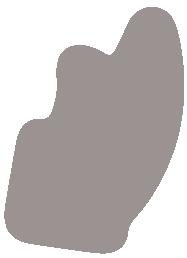
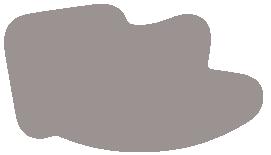
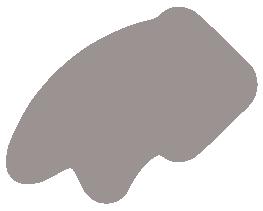
According to the Food and Agriculture Organisation (FAO), about a third of all food produced globally is lost or wasted. It seems simply unthinkable to continue to lose so many valuable food sources. Therefore, Symrise Aqua Feed collects raw materials such as shrimp heads, tuna viscera, tilapia heads and bones or other marine by-products, which are not used for human consumption. At the same time, these wastes contain many usable proteins, which may have been previously discarded. The company collects more than 30,000 tonnes of these by-products annually in their three manufacturing sites in Costa Rica, Ecuador and Thailand.
These sites are located next to the plants where fish and shrimp are processed, guaranteeing the freshness of the raw materials. The locations also help to optimise the logistics and minimise the carbon footprint of the raw material transport.
We ensure that all suppliers follow the principles of responsible and sustainable sourcing, building on our Supplier Code of Conduct and program of certification. Also, by using by-products, fewer wild capture fisheries need to be utilised, thus reducing the pressure on marine resources.
There is available worldwide knowledge on the processing and transformation of raw materials to increase the functional value of by-products. Here we master enzymatic hydrolysis, aiming at highly standardised hydrolysates in liquid and powder form, with multiple benefits such as improved nutrition, palatability and health.
Likewise, the company minimises the environmental footprint of its industrial activities. To reach carbon neutrality from 2030 onwards (scope 1 and 2), we mobilise people, measure energy and water metrics, improve the manufacturing process and define plans for the coming years. As an example, all Symrise Aqua Feed plants have implemented operational optimisation for reducing energy and water consumption with defined quick wins and best practices sharing.
Following the objective to value every single fraction of by-products, we also pay attention to our own organic wastes. The waste amount varies from 1% to 25%, according to the level of the solid fractions in the raw material. There is the valorisation of left-over materials in the feed chain as much as possible, with further processing into fish or shrimp meals. When processing into meal is not the best option, other alternative solutions come into play, such as composting with anaerobic digestion. Doing such valorisation, we reduce as much as possible landfilling or incineration. Overall, we are always seeking to find the highest value of fish and shrimp by-products.
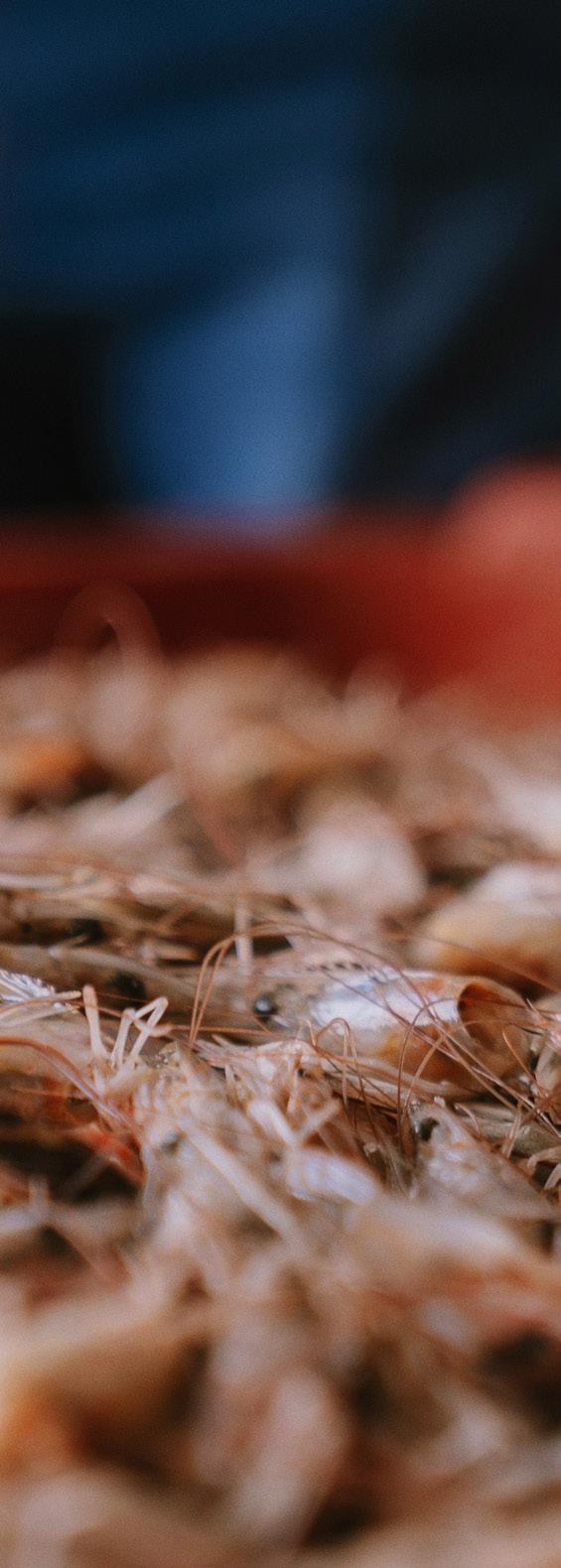
Our ingredients used in aquafeeds help to substitute fish meal, enhance feed palatability, standardise and uniformise fish and feed performance, enhance fish health status and fish resistance to environmental and pathogen challenges. With better digestibility and better absorption, our ingredients help to reduce “fish in” while maximising “fish out” ratios (FIFO) as shown in Figure 2.
There is also the raising of awareness on the reduction of the use of plastic waste by customers. To do so, action has been taken to move to large packaging such as bulk for the liquid and big bags for the powder. In this area, our plant in Thailand is also partnering with Second Life, a social enterprise which empowers local communities to operate long-term socio-environmental projects. In 2022, 75 tonnes of plastic wastes were collected and recycled in Thailand.
The zootechnical performance of Symrise Aqua Feed’s ingredients are proven in Aqualis, our performance measurement centers, as well as by scientific partners and in aquaculture farms. While guaranteeing high performance, the ingredients also help to reduce the environmental impacts of aquaculture. Applying these palatants or attractants ensures high feed consumption while reducing feed waste. It also improves total feed digestibility to reduce the release of non-digested feed in the environment and improve FIFO. Due to the presence of bioactive compounds, the products help to enhance resistance to stress, improve gut health, increase survival, and help to reduce synthetic inputs.
always inspiring more aquafeed.symrise.com
Appying this circular model, Symrise Aqua Feed produces ingredients with a low carbon footprint and high positive social impact. Societal aspects are likewise crucial for the company. We also implement local initiatives to promote health at work. Furthermore, safety is the number one priority in our daily operations.
In a nutshell, we are fully embedded in a circular economy model and committed to reduce our environmental footprint. We get the best value from fish and shrimp by-products and participate to improve the aquaculture supply chain, sustainably.
Reference 1. What is a circular economy? | Ellen MacArthur Foundation (https://ellenmacarthurfoundation.org/topics/circular-economyintroduction/overview
September/October 2023
Issue focus: Aquaculture Innovations
Industry Review: Marine Fish
Feed/Production Technology: Larvae and Nursery Feeds, Feed Management


Deadlines: Articles/Adverts – July 18
Gwénola Jan Lafage is Quality, Regulatory & Sustainability Manager at Symrise Aqua Feed.
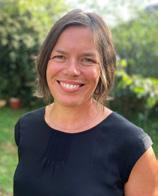
Email: gwenola.jan-lafage@symrise.com
November/December 2023
Issue focus: Health and Disease Management
Industry Review: Catfish and Freshwater Fish
Feed/Production Technology: Feed Enzymes, Post Harvest Processing
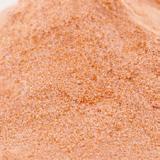
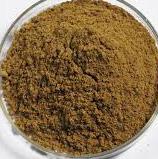
Deadlines: Articles/Adverts – September 20
Email: zuridah@aquaasiapac.com/enquiries@aquaasiapac.com
ASC compliant feed is required as part of farm certification and feed mills also realise the importance of becoming certified, says Alexandra
Warrington“We are also seeing interest from feed mills who are not currently supplying ASC farms. Not only do they want to access a new market, but they also recognise that this standard is the most holistic out there. It is setting the highest bar. Some feed mills have policies and commitments with regards to their practices and supply chain. They want a certification which recognises this and fits with their own policies.”
This is encouraging as ASC is seeing a lot of interest also from retailers. Further down the supply chain, they are asking what ASC is doing about feed. The implementation of this standard is helping them meet commitments for their supply chains, around deforestation, forced and child labour. These are some of the big issues retailers are facing.”
On January 14, 2023, the Aquaculture Stewardship Council (ASC) announced a new milestone: feed mills can apply for certification to ASC’s Feed Standard which covers legal, social and environmental requirements for both the feed mill’s own operations and for the suppliers of ingredients used in their feed production. ASC certified farms have until January 14, 2025 (24 months later) to source compliant feed to continue meeting the ASC Farm Standards.
ASC had a large presence at the Seafood Expo Global which was held from April 25-27 in Barcelona, Spain. Amidst the hustle and bustle at the booth, it was an opportunity to catch up with Alexandra Warrington , Senior Coordinator Feed Standard. Clearly, this new Feed Standard is as complex as the issue at stake, and feed millers need to have a better grasp of its principles and components, particularly since the timeline for implementation is approaching.

“ASC has always had feed requirements in its farm certification standards. The launch of a new standard ensures these requirements are strengthened and that the responsible entity (the feed mill) can now become certified too,” said Warrington. “The biggest impact of aquaculture really, is coming from the feed, which also includes the raw materials used. Our standard is robust in its scope because it is looking at all the feed ingredients, not just soy and marine ingredients.”
ASC is bringing attention to feed and is moving the industry towards more responsibly produced feed. “The demand is firstly coming from the fact that this is a requirement for our ASC programme. We already have the farm standards, and the social and environmental impacts of feed production and feed ingredients are important to ASC and stakeholders. Therefore, if farms want to continue to be ASC certified, they need to ensure their feed is responsibly produced, “ said Warrington.
Touching on where the demand is coming from, Warrington indicated the first feed mill audit took place in June in Mexico and a second audit has been announced for August in Vietnam. They expect to see further audit announcements soon in Europe and South America. “Obviously, the Standard is going to be easier for the bigger feed mills which already have some form of ingredient supplier approval process in place, and these tend to produce feed for shrimp and salmonids.”
There are five principles (P) of the ASC Feed Standard. It starts with the legal, social and environmental performance requirements at the feed mill (P1), followed by responsible sourcing (P2). “This means that feed mills must look at their supply chain by conducting due diligence for legal, social and environmental risks on all their ingredient manufacturers - for plant/marine raw materials making up more than 1% of total annual feed ingredients.
“With regards to the principle on ingredient accounting and eligible ingredients (P3), this sets out how either mass balance or segregated ASC feed can be produced based on the inclusion of eligible and non-eligible ingredients.”
Within principles 4 and 5, there are additional requirements for whole-marine derived ingredients and high-risk plant ingredients such as soy and palm oil and any majority plant ingredient (i.e. representing more than 50%) e.g. wheat, rice, pea meal etc. These plant ingredients must only be sourced if there is a low risk of legal deforestation and land conversion, or they are to be included in a public action plan to achieve low risk. This comes in addition to the due diligence required under P2.
“We are different from a lot of the other standards which are not addressing the same risks and just relying on certifications for a few ingredients, rather than taking a due diligence approach for all ingredients. Usually, there is a simple requirement for sourcing a certain percentage of soy certified to RTRS (Round Table Responsible Soy) or ProTerra Standard or fish meal from MarinTrust sources by a certain date. It is noteworthy that we previously took a similar approach, but we since realised that these requirements are not always achievable when a raw material is not available.”
“Rather than just focusing on deforestation, we also want to tackle land conversion where ecosystems such as grasslands and wetlands are converted for rice or wheat. Similarly, when we talk about deforestation and conversion, both legal and illegal deforestation and land conversion are also included as this addresses deforestation and conversion issues that would still occur if permitted by a country’s regulations.
“For whole-marine derived ingredients, we have developed an improved model which reflects a fishery’s journey towards better management practices and requires that at least 50% be sourced from a MarinTrust Improver Program, moving up eventually to MSC (Marine Stewardship Council) within 9 years.”
There is a perception that the Feed Standard asks for non-GMO (genetically modified organisms) derived soy. Warrington clarified ASC’s position on GMOs. “We do not actually specify use of non-GM ingredients, but we do require transparency and disclosure when GM ingredients are used in the feed as this allows the buyers and the end-market to make an informed decision.”
“Feed mills have told us they need flexibility. It should be about: ‘What is the risk?’ ... and then ‘How can you achieve low risk?’” That is the pathway we have provided with the Feed Standard. We have developed country and fishery risk scorecards they can use. They can source certified material, but they can also do their own risk assessments.” said Warrington.
ASC provides guidance and point to best practices on the criteria and questions that they should be asking in their supply chain. However, those doing the risk assessments need to have certain competencies. This results in a complex standard, but one which gives feed mills flexibility in how they address key legal, social and environmental risks in their supply chain, and provides risk mitigation to producers and other supply chain actors on a number of those key issues.
“The requirements for whole-marine derived ingredients will be a particular challenge for those regions without many fishery improvement programmes (FIPs), such as Asia. The industry needs to work collaboratively to encourage such programmes to flourish. Cargill, Skretting, BioMar and other feed millers are supporting the development of FIPs. The ones that are progressing are those with industry support. NGOs such as WWF can help with coordination and finance.”
By January 2025, all ASC certified farms are required to be sourcing feed from mills certified to this new standard. However, by this time, there is a possibility that in some regions there will be a low supply of ASC compliant feed. In the event of such a scenario, Warrington explained, “We are regularly reviewing the progress of mill certification and how that aligns with the timeline. If there are regions or farms that do not have access to compliant feed by January 2025, we have procedures in place that can resolve this issue, but supply issues would have to be reviewed on a case-by-case basis.”
Under the Feed Standard, the feed mill must record and report its energy use and its greenhouse gas emissions

(GHGe). The greenhouse gas emissions will also have to be publicly reported on their website.
“This is also important because the farm also has to calculate and report its GHGe and needs data on its feed to do so. However, at this moment we are not setting limits or targets: we will gather the data in the first few years of the programme and get to know what kind of level some of these mills are already working at. We may look at setting some targets and limits in the future.”
Interestingly, the first reaction from feed mills was ‘This standard is complex,’ said Warrington. “However, after a few conversations they were able to better understand the requirements and see the benefit of this standard. We have improved our communications and training materials and spent a lot of time working on guidance materials.”
She added that this is the direction the industry will have to go anyway. “We are seeing the emergence of legislation looking at corporate sustainability and due diligence in the EU, and furthermore, there is also a new EU regulation targeting specifically deforestation due diligence. Other countries are also developing similar legislations. We know that no country wants to have forced and child labour or deforestation in their supply chain.”
ASC has trained 57 auditors so far which cover the geographic spread of ASC certification, including across Asia (Vietnam, China, India). There are four certifiers currently in process for scope extensions (SCS, BVC, CUP and DNV) and feed mills can check the Assurance Services International (ASI) website to see which certifiers are progressing with accreditation.
The standard was developed over 8 years, and it was an intense learning process with a lot of consultation and stakeholder inputs.
“The industry stated they needed flexibility - and flexibility we have added. ASC has done a lot of training, outreach programmes and guidance for the standard. Some feed mills already do some supplier approval process as well as risk assessments. What we are asking is that they incorporate this into their approval process. In the beginning there is a lot of work but once embedded, it becomes part of the ongoing process with cycles and audits, and it will be streamlined.”
“We want to send the message that farms need to be speaking with their feed suppliers ‘now’ to ensure that they are indeed preparing for ASC certification to meet the January 2025 deadline. The Feed Standard and guidance documents can be found on our website. Feed mills can also find further information on the webpage “How to get certified”.
Rabobank’s Brebda de Swart, said that opinions of bankers matter as she looked at the economics of sustainability. Rabobank has the target of net zero by 2050 but it is not to stop financing but include sustainability into the financial commitment. The financial sector has a serious challenge in changing its business strategy to be a player that integrates data, agriculture expertise and supply chain traceability solutions.”
Since 2004, the World Nutrition Forum (WNF), an invitation-only summit, has been the go-to event for the global animal science, livestock and aquaculture production and feed manufacturing sectors. It is an opportunity for knowledge sharing and networking with top executives, experts, scientists and opinion leaders to explore a broad set of key issues in the food and feed industry. The Forum was held biennially up to 2018; the last WNF was held in Cape Town, South Africa. The 2023 program covered the realm of animal science and recent innovations, to update livestock producers and processors as well as feed manufacturers.
In 2023, DSM, took over this summit and held it in exotic Cancún, Mexico from May 8-10. On May 9 2023, DSM merged with Firmenich and took the new name, dsmfirmenich. “Against a backdrop of volatility and uncertainty, we cannot restrain the progress of scientific innovation or our industry’s calling to feed the world sustainably,” said Ivo Lansbergen Executive Vice President, Animal Nutrition and Health as he welcomed around 700 participants and described the new company (see page 4 AAP May/ June 2023).
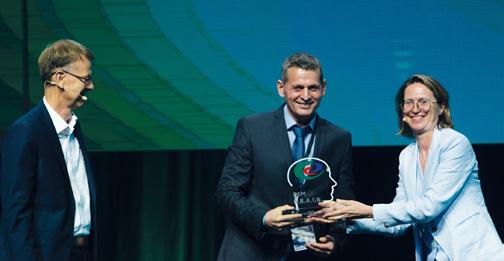
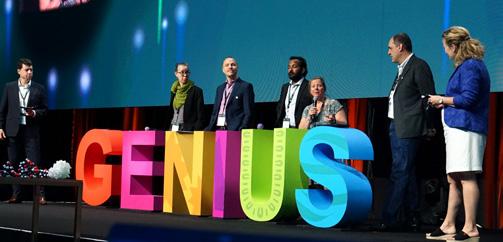
This was the theme throughout the conference. Eva Maria Binder, Head of Translational Science said that this summit embraced science governance and translational science for customers’ use.
The ‘s’ in Genius is sustainability and the summit started with Bob Langert, Former VP of sustainability at McDonald’s describing the evolution of corporate sustainability. His message was: if we wait too long for an issue to trigger, amidst media and politics, the company can make rash decisions. The future requires transparency, commitment and doubling of expectations.
On the grand challenge of livestock production on the environment, Frank Mitloehner , University of California, Davis, USA, said that the impact of livestock includes 56% carbon dioxide and 18% methane and this amplifies the potential of global warming with regards to greenhouse gas (GHG) emissions. Predicting GHGs and how they warm the planet and not their CO 2 equivalent will provide information critical to developing short- and long-term climate solutions.
Scientific presentations on mycotoxin mitigation related mainly to livestock production but remain relevant for aquafeeds. A poster by Rosen et al. on ‘Beyond binding – a deeper look into mycotoxins mitigation strategies for aquatic species” discussed enzymatic detoxification of fumonisins and zearalenone by biotransformation in rainbow trout. On the impact of mycotoxins on health and nutrition, Todd Applegate , University of Georgia, USA, said that nutrient dense diets lessen the severity of mycotoxins in swine and mycotoxins have a role in protein synthesis. Veronika Nagl , dsm-firmenich, Austria discussed how omics and other technologies have unravelled the molecular mechanisms of mycotoxins and their effects in the rumen.
The microbiome strategy is to focus on beneficial functions encoded by key species and create best in class microbial references. A data platform will integrate multi-omics data, trials and performance data with experimental and screening data. Mick Watson , dsm-firmenich described how metagenomics enables precision characterisation of microbiomes. Maia Segura-Wang, dsm-firmenich showed the steps in developing a gut microbiome precision service and said, “By combining data from multiple sites, we have cross regional comparisons in terms of microbial and pathway abundance and prevalence. This collection is the first effort towards building a commercial database of gut microbiome antibiotic resistant genes and functional pathways.”
The full report is available at www.aquaasiapac.com
Global outlook on finfish and shrimp aquaculture and challenges with aquafeeds, from formulations, ANFs, mycotoxins to sustainability.
The breakout session on aquaculture at this World Nutrition Forum (WNF) on May 9 was moderated by Benedict Standen, Head, Global Aqua Marketing and Ester Santigosa, Global Innovation Lead, Aquaculture at dsmfirmenich. Five experts discussed farmed finfish and shrimp production and recent challenges in aquafeed production, mainly rising feed costs, balancing optimum nutrition in a volatile ingredient market, ANFs and mycotoxin contamination, and meeting the sustainable feed agenda.
Ragnar Nystoyl, Kontali, Norway, said global farmed finfish production showed an average compound annual growth rate (CAGR) at 7% over the last 20 years but only 3% in the last 2 years. Aligning with the nutrition focus at WNF, Nystoyl noted that the volume of fed white fish is less than 17 million tonnes out of the total production of 27 million tonnes. Global aquafeed production showed a declining growth rate. Finfish accounts for 75% of aquafeed demand. The rising costs of feed, such as those for the salmon increasing from USD1.50/kg in 2015 to more than USD2.00/kg in Q1 2023 is a real challenge.
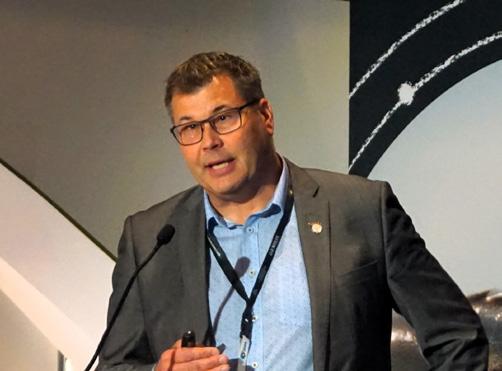

Tilapia has a CAGR of 2% over the last 2 years driven by the rise in whitefish consumption. Production of pangasius and other catfish is stagnating at around 5 million tonnes. Tilapia and pangasius face limited access to markets and low consumer confidence. Prices are low and competitive although there has been a recent rise of USD1/kg in Q1 2023 for fillet.
Within the salmonid segment, growth has been led by the Atlantic salmon with a CAGR of 14% over 1990 to 2000 with a production of 840,000 tonnes. CAGR was less during 2000 to 2020 at 5%. Production was estimated at 1.12 million tonnes for 2022. CAGR is predicted to be lower at 3% over 2020 to 2030. Over the past two decades, volumes have tripled, and value is six times higher. The salmon is unique in terms of colour.
“The market potential is not the limiting factor for further growth. The winners are species scoring high in global market penetration with uniqueness and versatility.”
- Ragnar Nystoyl, Kontali
Aquaculture businesses are faced with rising feed costs, which could reduce their profitability. Feed enzymes can help protect your profits by enabling cost optimization and formula flexibility, as well as maximizing shrimp and fish performance. Increased productivity & efficiency Sustainable production Optimized feed cost
If not us, who? If not now, when? WE MAKE IT POSSIBLE Follow
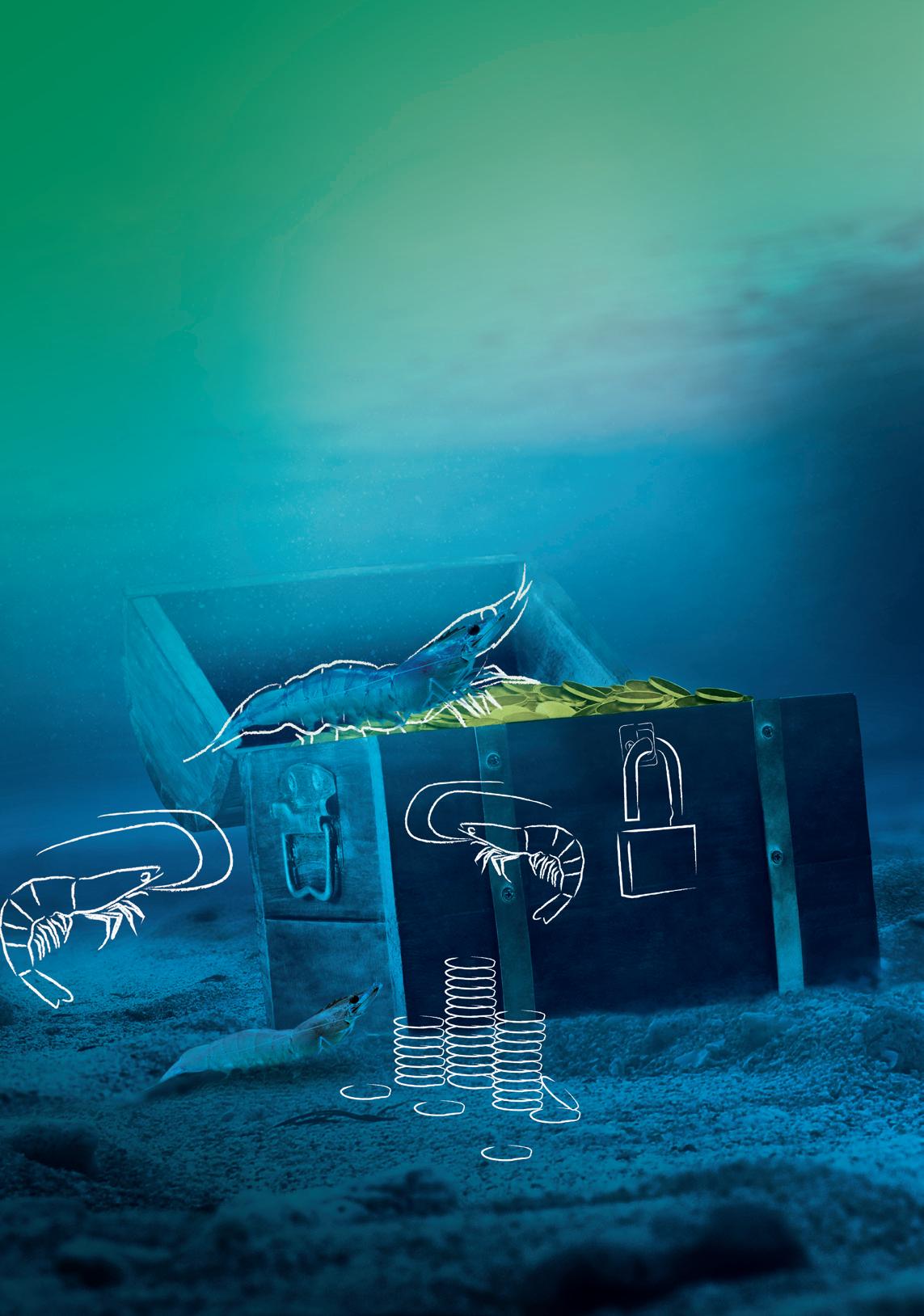
“In contrast, there has been less of value growth versus volume growth for the seabass and seabream which has not been able to expand beyond the Mediterranean where 90% of consumption is local,” said Nystoyl.
Among the niche species, the Asian seabass or barramundi continues to show low production volumes. There is complexity in value driven by production methods and geographical pricing; the value is more than USD10/kg in Australia but contrastingly low at just above USD2/kg in Vietnam. Yellowtail is the segment with high prices, creates perception and triggers price achievements. In general, most finfish find acceptance in either local and regional markets and sometimes international markets. Nystoyl expects the challenges to be in aquafeeds including the complexity in formulation such as for the salmon. The scarcity of feed raw materials is expected to push for feed performance, growth and fish health enhancement and adaptability to new production systems. The market potential is not the limiting factor for further growth. The winners are species scoring high in global market penetration with uniqueness and versatility.
Ronnie Tan, US Grains Council (USGC) said that Covid 19 affected the major producers differently. “Ecuador increased production by nearly 27% to 850,000 tonnes in 2020 and then 18% in 2021 to cross the million tonnes mark. With imports held up at ports for testing of the virus, China increased local production, by 19% in 2021 to 860,000 tonnes and then by another 11% in 2022 to 950,000 tonnes. Vietnam increased production gradually while India’s production dropped 16%.” Tan noted that Asia lost market share, from 81% of the global supply in 2009 to 64% in 2021 and is forecasted to be 55% in 2030.

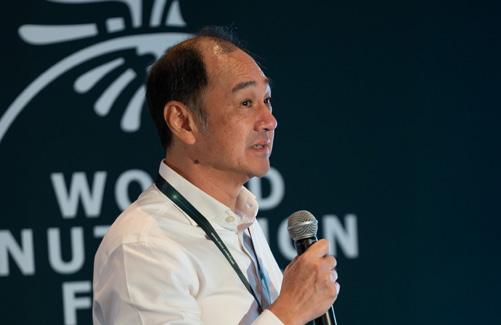
Demand for shrimp is stagnating. In the second-half of 2022, US monthly imports showed Y-o-Y declines as seafood inflation hit a high of 12.4%. EU demand has also cooled off and affecting the food service sector. China increased imports to 950,000 tonnes in 2022 from 600,000 tonnes in 2021, and with the forecast of the reopening this year 2023, it is the only positive story.
“COVID-19 has changed the whole situation. When prices increased in consumer markets due to the rebound, the 2021 ex-farm prices were still declining. Why is there this mismatch? This is because global supply versus demand is not the only determining factor anymore. The supply chain is too,” said Tan as he described the backlogs in container availability and with cold rooms full, processors were not offering high prices to farmers.
A major concern is feed costs. With higher prices for feed ingredients, feed companies had to increase prices. A 36% crude protein feed cost USD1.25/kg and has been increased by 20%. Commodity prices are falling but are unlikely to return to pre COVID levels, according to traders. “Therefore, industry has to live with this kind of new prices but the problem here is that ex-farm prices are declining.” said Tan.
Production in Asia is plagued by diseases, lowering survival rates to 55-60%. This production inefficiency, with high feed and energy costs has raised direct cost of production, from USD3.40/kg to USD3.70/kg in 2022. Tan cautioned that the rising cost of energy has not been fully factored into costs of production as governments increase their electricity costs step by step.
There is a great opportunity for alternative feed ingredients but will require equitable price and volume. Potential ones include single cell proteins with 71%crude protein (CP), insect meals with 50% CP and distiller’s dried grains with solubles (DDGS), regular with 28% CP and Hi Pro with 50% CP.
2023 will be a year of change which will see inflation, recession and headwinds. Margins will be squeezed because buyers are going to push back on the price increases in supermarkets. Industry will need to recalibrate growth expectations.
“The industry has to live with this kind of new prices but the problem here is that exfarm prices are declining.”
- Ronnie Tan Picture credit: dsm-firmenichParticipants from Indonesia; Hendri Laiman, (second left) and Rubiyanto Widodo Haliman, (second right), PT Central Proteina Prima Tbk; Rizky Darmawan, PT Delta Marine Indonesia (middle) with Kevin Laveno Santoso, dsm-firmenich, Indonesia (left).
“Future growth will require a combination of investment drivers, technology advancements, sustainability and ESG. Investors want predictability and some kind of insurance.”
According to Lukas Manomaitis , U.S. Soybean Export Council, (USSEC), aquafeed formulation has been impacted by the global polycrisis - climate change, effects of the pandemic and China. A major concern is feed ingredients, and the reality is that global trade networks are likely to continue to be erratic. Normal ingredient availability is likely to be passé and prices may swing wildly. Another reality is that selling price of seafood products is not going to increase as fast as the cost ingredients which means that farmers must be cost efficient.
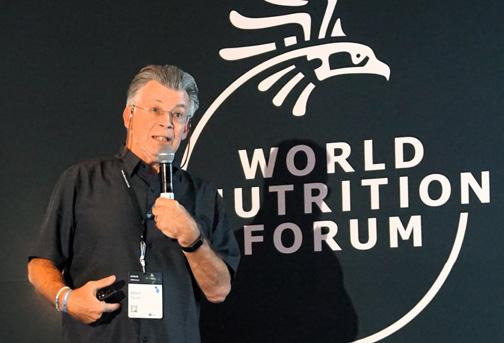
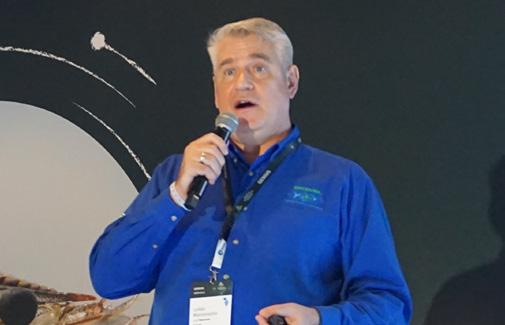
“Traditionally aquafeed formulators have remained conservative on formulation approaches centred on a limited range of ingredients but today, there is a wide variety of ingredients including those coming from alternative sources. How can they navigate the volatile markets (supply and demand, logistical issues and trade blockages) whilst meeting nutritional requirements of fish and shrimp. Therefore, formulators will need to think creatively to reach target nutritional profile for a specific species at a specific life stage”.
Rather than focus on ingredients, Manomaitis urged formulators to focus on the nutrient qualities of ingredients as nutrients are what the animal requires. “With the expansion of aquaculture, the aquafeed industry will require a lot of ingredients, but how do we produce seafood with the least amount of expenses? A strategy is also getting the most of nutrients which are locked up in ingredients and make them available by using additives. A better understanding of nutrition is required and today we have tools to formulate better.”
The use of a comprehensive feed formulation database is key to understanding how an unfamiliar ingredient might be used in a formulation, and how it could reduce costs. Created in 2014, the first commercially viable aquaculture feed formulation database was named International Aquaculture Feed Formulation Database (IAFFD www. iaffd.com). “When paired with a good feed formulation program, ingredient costs, quality information and an experienced formulator, it allows for a formulation to be more responsive to possible feed ingredient challenges.”
Manomaitis compared changing formulation costs for three species at pre- polycrisis (2019), during the middle of the pandemic and a recent one developed just prior to the conference (Table 1).
“The cost of anti-nutritional factors (ANFs) and mycotoxins to the aquafeed millers, finfish and shrimp farmers and the consumers are real,” said Albert Tacon , AquaHana LLC. “The risk is highest within Asian countries where over 90% of aquaculture production is currently realised and where the climates are warm and humid, which favoured the growth of mycotoxins. Most feed ingredients and aquafeeds are usually contaminated with multiple mycotoxins.”
Soybean is the most used feed ingredient within commercial aquafeeds and typically comprise between 15 to 50% of the total feed formulation. Unprocessed soybean meal contains at least 14 different known endogenous ANFs posing a risk to fish and shrimp health and wellbeing.”
Tacon tabulated negative effects of mycotoxin contamination such as growth, feed conversion ratio (FCR), immune system, gut health and intestinal integrity and permeability (i.e., leaky gut). The gut is the first line of defence. The reported health impacts will vary depending upon the level and source of mycotoxin tested, duration of the trial and development status of the animal, i.e., larvae, juvenile or adult stages.
On mitigation strategies, these include limiting use of lower cost/quality feed ingredients, use of organic acids and feed additives to prevent/limit mould growth in finished feeds, use of mycotoxin binders to prevent the absorption of mycotoxins, and use of microorganisms /dietary enzymes to bio transform mycotoxins in the gastrointestinal tract. At the farm level, it is storing feeds under cool and well-ventilated conditions.
“The real cost of mycotoxins and ANFs to the feed miller is in terms of ingredient sourcing, quality control, additional
“With ANFs and mycotoxins, the real cost to the farmer comes with reductions in animal growth, feed efficiency and effects on gut health, immune capability, disease resistance, survival and farm profitability,”
- Albert Tacon
Table 1. Example of changes in cost of formulation (USD/ kg) before the polycrisis, start of polycrisis and today (early May 2023) Source: Presentation on “What can formulation tools tell us or do?” by Lukas Manomaitis, USSEC, presented at World Nutrition Forum, Cancun, Mexico, May 8-10, 2023.
processing requirements and use of specific feed additives to mitigate the effects of ANFs and mycotoxins. This is USD 1-10/tonne of feed. The real cost to the farmer comes with reductions in animal growth, feed efficiency and effects on gut health, immune capability, disease resistance, survival and farm profitability and is estimated at USD 5-10 billion. Consumers risk ill health if there is mycotoxin carry-over into edible fish or shrimp tissues” added Tacon.
The unprecedented hikes in raw feed materials in the last year has raised feed prices by approximately 30% in some regions, even though today , there is a softening in raw material prices “These increases may not be as significant for the salmon industry with record breaking profits but affect the shrimp industry facing poorer pricing because of excess supply,” said Louise Buttle , GKAM and Sustell Lead for Aquaculture for dsm-firmenich. Because aquafeed accounts for up to 70% of production costs and up to 80% of a producer’s environmental footprint, the opportunity for more sustainable aquaculture is closely linked to availability of sustainable raw materials. Recent aquafeed prices reflect in part the limited raw material basket, and the fact that our drive to extend this basket with novel, more sustainable proteins is only partly successful.
“Consumers are demanding more transparency around the provenance of their seafood and are prepared to pay a premium for sustainable seafood. Story telling is no longer enough and metrics are needed to credibly measure sustainability. We can only manage what we can measure. All along the value chain we need to see where we are today in our environmental footprint and set reduction targets for the future.”
Despite salmon leading the aquaculture field with its sustainability journey underway, Buttle advised that there cannot be a reliance on generic industry averages on sustainability metrics. For example, a meta-analysis showed the wide range in greenhouse gas emissions (CO 2 eq per 100g protein) for farmed fish ranging from 2.5 to 12kg and farmed shrimp from 5-30kg CO 2 eq/kg.
“The footprint measurement of raw materials drives the final aquaculture product. An accurate footprint measurement at farm level is necessary to drive change and reduce greenhouse gas emissions or overall environmental footprint.”
But it is not just about carbon footprint. A full-scale Life Cycle Assessments (LCA) covers many factors.
dsm-firmenich’s Sustell TM is the latest industry service to simplify the measurement of environmental impact and enable the aquaculture industry to measure and reduce their environmental impact (see box).
With innovations in the raw material basket, Buttle reported that the industry has moved towards using white fish trimmings and algal oils with omega-3s in the salmon industry. However, “even for the frontrunner salmon industry in Norway, only a few percent of raw materials are from alternative ingredients, even though a wider raw material basket of concentrated proteins will definitely alleviate our pressure on prices.”
Despite large capital investment in insect meal production, not much is being used at commercial levels because of scale, availability, and price. Another option with great potential in terms of scalability is single cell proteins with very promising fish performance.
There are some great examples of collaboration platforms along the value chain and these are playing an important role to initiate change. Raw material pledge, a Norwegian based platform initiative is driven by the fact that only 8% of raw materials used in Norwegian salmon feed are sourced from Norway. Another example of great partnership is between algal oil producer Veramaris, insect meal producer Protix, the importer Kaas Puul and the retailer Albert Heijn, and feed producer Skretting to supply sustainable shrimp from Latin America to the European market.
“Meeting the protein gap in a sustainable way relies heavily on sustainable raw materials, but in the future, it will be important to know your own footprint, to bring new innovations with strong funding in the investment phase and to collaborate. This should accompany faster developments and market readiness to adopt and pay for novel raw materials that elevate the industry’s sustainability to the next level,” concluded Buttle.
Summarising the output at the Aquaculture breakout session, Santigosa said, “There is a positive outlook for growth of aquaculture at a CAGR: 3-10% for fish and CAGR 4% shrimp. Higher feed costs are here to stay, and industry must look at productivity and efficiency gains. Formulation and nutritional tools (such as enzymes) will be key to reducing feed costs. Encouraging innovation and collaboration will be key to meet the future protein gap. A higher inclusion of plant-based ingredients will increase the risk of ANFs and mycotoxins; the value chain is expecting environmental impact measurement and reduction, but we cannot improve what we cannot measure.”
Benedict Standen, Head, Aqua Marketing Global gave his views on some bottlenecks in Asian aquaculture. He also identified some differences between the shrimp industry in parts of Asia and Latin America, specifically Ecuador.
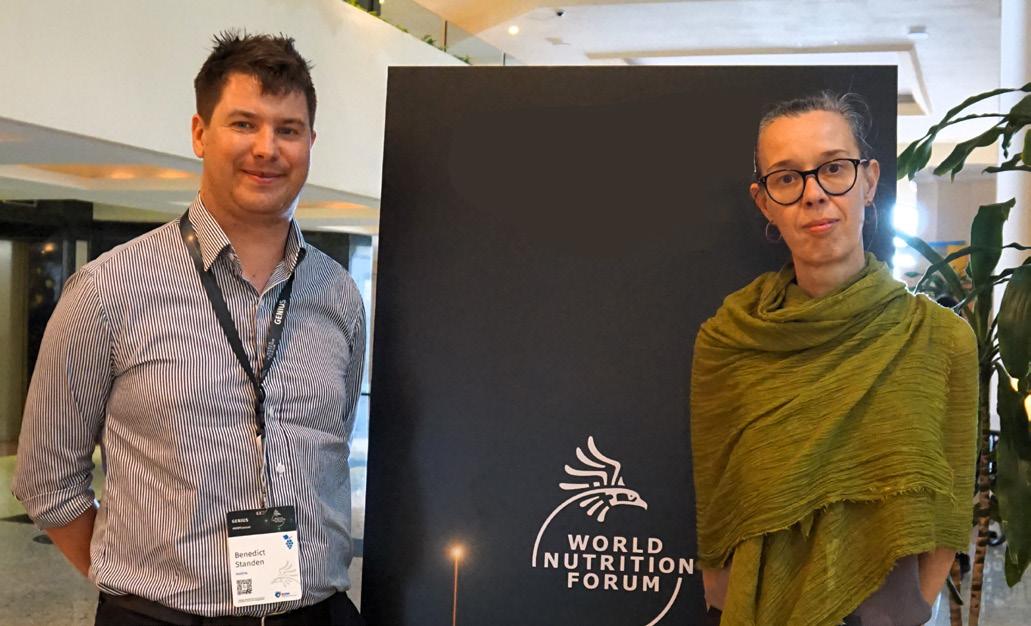
Today, the first bottleneck is the squeeze in profitability, largely driven by raw material prices. The industry has experienced >30% increase compared to 2020, and as told by Rabobank, these high prices are here to stay for the foreseeable future. High costs have also been driven by energy costs and inflation. In aquafeeds, we use a lot of extruded feed, which is very energy intense.
Within dsm-firmenich’s Animal Nutrition and Health (ANH), we support our customers by reducing their feed costs. By leveraging our enzyme portfolio, feedmillers and farmers can do this without impacting feed quality or performance, resulting in better animal performance, largely through reduced feed conversion. Since feed accounts for 5070% of total production costs, a small reduction in FCR can have big economic benefits for the producer.
One of the feed cost implications is mycotoxin contamination which can impact growth performance, FCR and health status, as well as having quality control, legal and reputational implications for feed manufacturers. At the end of the day, there is an impact on profitability.
We are noticing an increasing risk of mycotoxins. Firstly, with this raw material price crisis, people are more inclined to use cheaper raw materials, which have an impact on quality and a higher risk of mycotoxins. Further, aquafeed diets are more reliant on plant proteins whilst moving away from fishmeal. The risk is also increasing with climate change since we are seeing wetter and warmer conditions - ideal conditions for growth of the mould. A robust mycotoxin risk management program is an important insurance policy.
The next challenge is disease. Farmers can have a shrimp crop with 90% survival but the next cycle can be only 20 or 30% survival. This unpredictability is really affecting the industry.
At dsm-firmenich, we support the animal in terms of general robustness with a three-pillar strategy. First is strengthening the host for optimal health and welfare. We start by getting the basics right, with Optimum Vitamin Nutrition, or OVN TM , providing the right vitamins at the right time. Next is leveraging the gut health portfolio, to make sure the gut is functioning well, with benefits at the whole organism level.
The second pillar is pathogen control. We utilise a range of active components which can target the pathogens directly, with a special focus on bacterial and parasitic challenges.
However, as farmers are squeezed on profitability, they are less likely to spend on functional feed. Typically, the functional feed cost is 10 to 15% more than regular feed. The need is really to understand what the pain point of the customer is and focus on prevention, not curative actions. Unfortunately, there is no silver bullet when it comes to additives. We need to provide the right additive, at the right concentration, and at the right time for the specific pain point.
The third pillar is about improving the environment. This can be achieved directly with bioremediation probiotics, or via feed enzymes, predominantly to prevent phosphorus and nitrogen effluents.
Whilst there are some similarities, the situation in Latin America is quite different. There are more diseases in Asia Pacific. In Ecuador, the biggest disease risk comes from Vibrios. Stocking density is lower, although some companies are now increasing to 30-40 PL/m 2. Ecuador is made up of fewer, but larger companies often with full integration which gives them scalability and the ability to make efficiencies across the whole value chain.
I also see that Ecuadorian producers are more willing to invest in feed additives, because they see the benefit in improved survival or growth. Probiotics for example, have become an integral part of the farming SOP. In APAC, by working with organisations like PMI in Indonesia (see page 4-6), I am happy to see that the farmers are very open to new technologies and embrace collaboration and innovation. They are willing to invest in it as well!
Creativity at dsm-firmenich is applying proven science and drawing on data-driven innovations to meet aspirations of customers and industry as a whole. As the Global Innovation Lead –Aquaculture, Ester Santigosa talked about the challenges in meeting industry demands.
We are prioritising phytase and protease and strengthening our current matrixes. This allows us to provide recommendations to our customers based on their own diet formulations. Today, we already have different
phytase matrixes for different fish species and we are working to have phytase matrixes for shrimp and salmon. Similarly, for protease, we will release a calculator for tilapia and shrimp. These are innovations to support our customers and increase the flexibility around their raw material basket.
Linking nutrition and sustainability is important: in Asia, the team has developed the phosphorus nitrogen ruler. The tool tells the customer how much phosphorus and nitrogen they emit in the water when they have phytase or protease in the feed. This is going back to environmental quality and sustainability.
With alternatives to fish oil, in the pipeline are new sources of protein. We continue to study what are the benefits not only on the growth but also on the health of the animal of these sustainable alternatives.
On robustness, we are trying to improve general gut health but also stress resistance and disease resistance from a nutritional perspective. Today with changing genetics, we also need to look at working together with geneticists on different aspects such as robustness: for example, with vitamins, different genetics will not have the same vitamin requirements. If selecting fast-growing species, we cannot apply the same premix, and FCRs are not the same. I personally think that our industry is not yet there. Contrastingly, the poultry nutritionists have advanced recommendations for all nutrients.
Moreover, when it comes to disease resistance, we need to explain to customers to try and manage expectations, since we cannot claim to have the magic bullet but a whole system to be managed at different levels: nutrition, biosecurity, genetics and for fish, we add vaccination.
Standen added, “The Asian market is asking for a solution for diseases. We want to be ready for them. Ecuador’s farmers may prioritise sustainability higher than Asian farmers, but this could be because they have better disease management or lower disease incidences.”
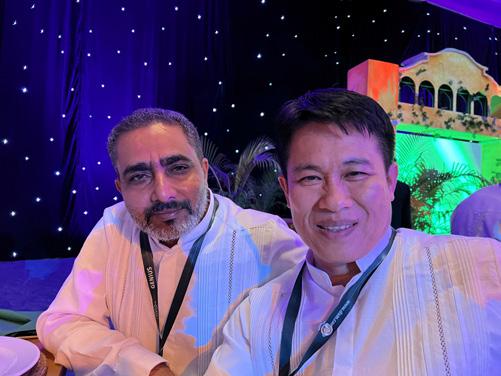
To be able to increase animal’s robustness and improve animal nutrition, we clearly need to take a more holistic approach and ideally test our innovations under real customer conditions. We know that our customers would like to test functional feeds under their own field conditions, since weather conditions, environment and feeding practices may differ from farm to farm. We need to start collaborating, create some synergies, be more transparent and try to go hand in hand into collaborative steps. I may be naïve as I believe that if there is trust and sharing, we can build the future of our industry.
“In Ecuador, several years ago, we worked with a feed miller to develop feed probiotics. In the feed mill this was challenging with product instability. We leveraged the existing product but with some slight tweaks, for example, in the carrier and the concentration. We then worked with them very closely to ensure efficient application of the probiotic in the feed. Now we are at the field validation stage,” said Standen.
Lifecycle assessments (LCAs) are used to communicate with stakeholders about a company’s sustainability status but also used to set a baseline in the sustainability journey. For example, if we take an example of GHG emissions and commitments to Science Based Targets (sciencebasedtargets.org), companies can use Sustell to measure their baseline, to reveal hot spots in their production and then to manage a reduction pathway to set and ultimately reach the target.
With LCA and any environmental footprint measurement, data is key and getting close to primary data is very important. Raw materials sourced from different countries can have different footprints.
Sustell supports the customer in this complex area as it uses the latest available versions of databases with the raw material information, and can also include branded raw material data - provided they are approved by quality control.
With Sustell, the process is simplified and the software itself is very easy to use. Firstly, the time it takes to calculate is instantaneous. If we start with the feed module, we need to know the feed formulation, then raw materials and quantities used and country of sourcing. Data includes the distances the raw material has travelled, to the feed factory and from the factory to fish farm or the shrimp pond. During farming, there are data such as energy use and farm hardware e.g. shrimp ponds and pens.
Louise Buttle, Global Key Account Manager and Sustell Lead for Aquaculture elaborated on sustainable aquaculture. In 2021, dsm-firmenich (then Royal DSM) launched Sustell™ — a firstof-its-kind intelligent sustainability service that delivers accurate, simple, and actionable farmlevel solutions – to improve the environmental footprint of animal protein production.
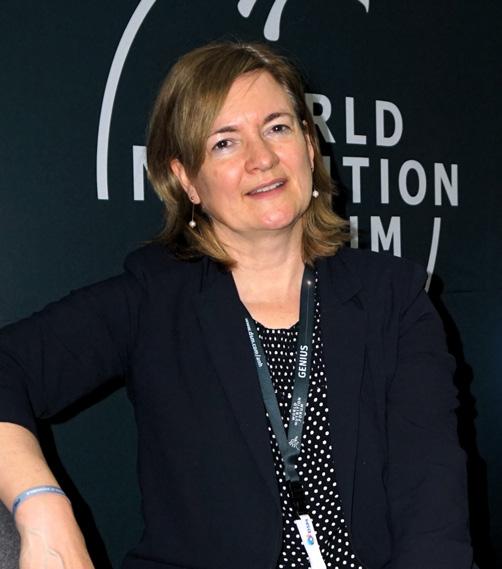
A shrimp module to make invisible visible coming soon Working with an industry player, Bakkafrost from the Faroe Islands, we developed a salmon module which is probably the only solution of its kind developed specifically for salmon. Our ambition is to extend this module to other aquaculture species in the short term future and today we are working on a shrimp module.
Sustell measures the full lifecycle assessment or environmental footprint of animal protein production, including 19 environmental variables. It combines both a feed and farming module and is an easy to use software platform. It helps you measure, manage, and reduce your footprint by revealing the hot spots in the production, making the invisible visible. We can also use Sustell to model interventions such as feed additives or raw material choices and evaluate the impact on the final footprint, by improving production parameters, for example, increased growth or survival. We prefer to work closely with our industry partners on our Sustell development to fine tune our service.
Several stakeholders in our value chains are asking questions about sustainability. Retailers are committed to their own sustainability targets, which they need to measure. There are also bankers wanting their loans to be credible in terms of ESG metrics.
Sustainability is often complicated to measure. We need to think in terms of environmental, social and financial factors. I believe that there are a lot of frameworks to help farmers and companies go through the process. When we think of the environmental issues such as greenhouse gas emissions, it is clear that we have a responsibility as an industry to work in this area. With our experience with customers using Sustell, we’ve seen data analysis identify real opportunities to improve production parameters, which also improves sustainability.
I see efficiency in production as a kind of baseline to sustainability. There is the economic sustainability of a system, farm or fish production. With environmental sustainability, we could think about enzymes such as phytase. In tilapia there is a nutritional intervention saving costs by reducing phosphorus addition—a limiting raw material.
Sustainable aquaculture is a process of continual improvement. There are aquaculture companies and dsm-firmenich is here to support their journey.




EVENT RETURNS TO BALI. SAVE THE DATE!
TARS 2023
is an in-person event.
Networking & Engagement Opportunities!
The Asian shrimp aquaculture industry is stagnating. While supply from Latin America increases, demand from the global market faces headwinds from inflation and a looming recession. High costs of production are erasing margins and affecting all along the supply chain. A key challenge is the lack of efficiency from poor survival rates but there is a larger systemic risk.
Evolving is not enough. The industry in Asia needs a regeneration and the responsibility falls on all stakeholders. TARS 2023 Shrimp Aquaculture: Regeneration will be the platform for brainstorming the way forward.
• State of the Industry, Growth and Challenges in Asia
• A Good Start with Genetics, Hatchery and Nursery
• Managing Productivity with EHP Mitigation
• Matching Industry Needs with Precision Shrimp Nutrition, Health Interventions and Feed Efficiency
• How to Maintain the Resurgence of the Black Tiger
• Future Proofing Asia’s Shrimp Aquaculture
INDUSTRY DIALOGUE WITH NEXT GENERATION PLAYERS
What is holding Shrimp Aquaculture back?
CEOs • CTOs
• Geneticists
HARD TALK WITH BUSINESS LEADERS
What does it take to produce Sustainable Asian Shrimp?
• Farm and Hatchery
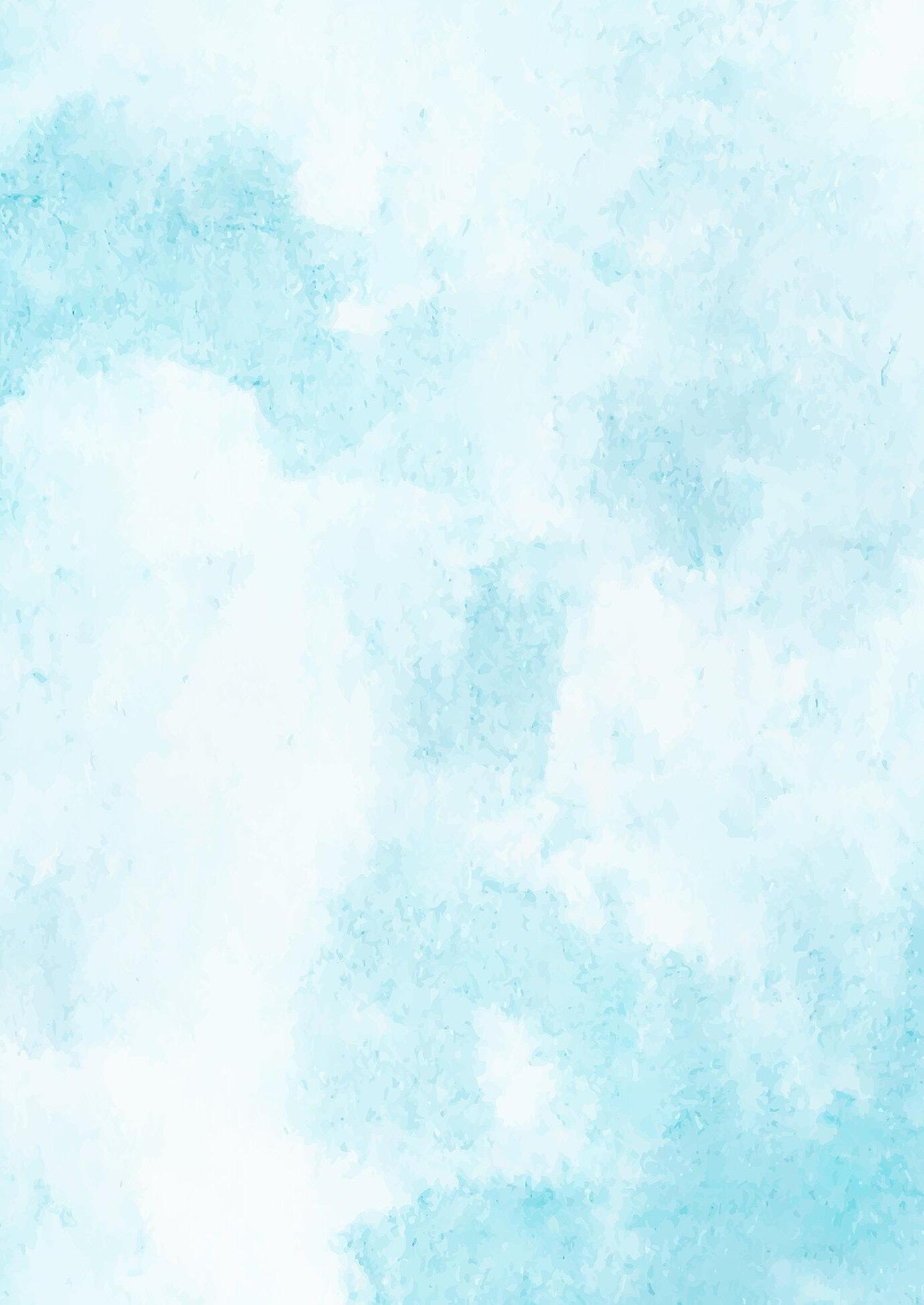
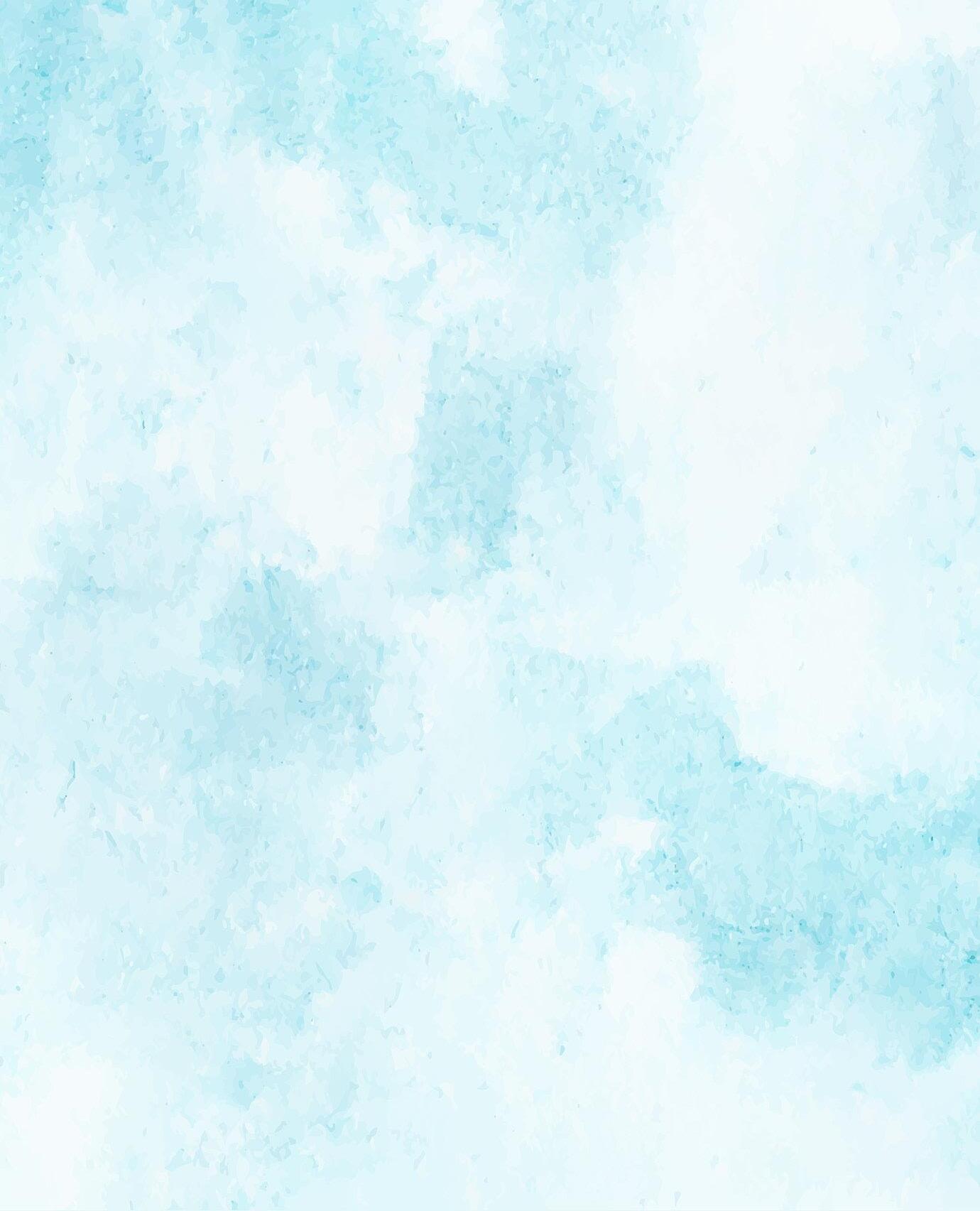
• Interactive Sessions
• Panel Discussions
• Q&A and More!
3 INTERACTIVE BREAKOUT ROUNDTABLE SESSIONS
Developing Traceability along the Supply Chain
Managers & Technicians
• Integrators

• Feed and Feed Additive Producers
• Nutritionists
• Processors
• Technologists
• Suppliers
• Marketeers
• Startups
The Aquaculture Roundtable Series® (TARS) is designed as a series of roundtable sessions aimed at bringing together all relevant stakeholders to discuss the state of Asian aquaculture, and provide a strategic direction forward to ensure the long-term sustainability of the industry.
• Innovators
• NGOs
• Investors
• Academia
• Governments
• Researchers
Organisers: Supported by: Sponsors:
For more information, email: conference@tarsaquaculture.com or visit www.tarsaquaculture.com Follow us on |
Atthe 2023 Seafood Expo Global held in Barcelona from April 25-27, GLOBALG.A.P. hosted its annual conference. This year, it was on “Addressing Responsible Sourcing of Feed Materials”. Dr Kristian Moeller, Managing Director and Remko Oosterveld, Key Account Manager Aquaculture, led the discussions. They were joined on stage by Caroline Brunias, Sales Manager at Metro Food Sourcing, Leonidas Papaharisis, Quality Assurance/ Sustainability Director at Avramar, and Óscar Vidal, Fish & Aquaculture Director at Bureau Veritas.
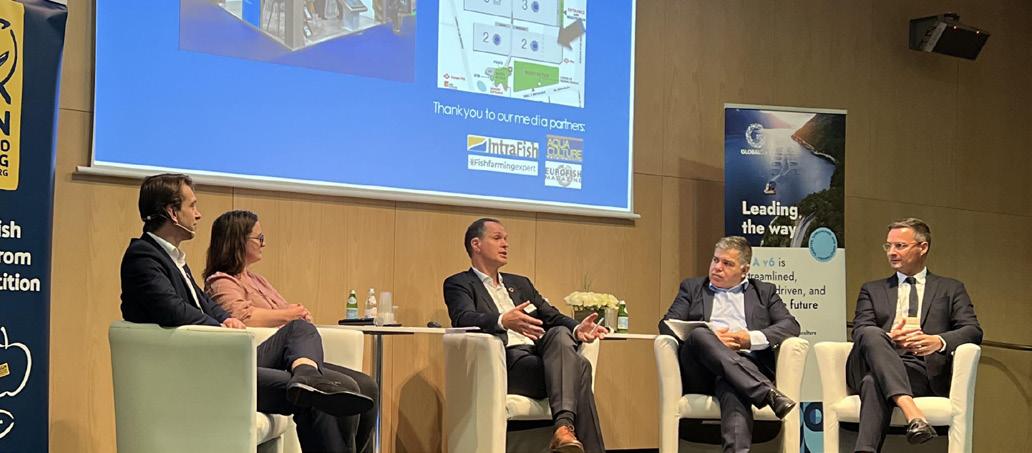
GLOBALG.A.P. has attained 20 years as a certification program owner. Its aquaculture certification program now covers 3 million tonnes of farmed aquatic species from 28 countries since 2011 to early 2023. Salmon is the leading species followed by rainbow trout, vannamei shrimp, European seabass, gilthead bream and coho salmon. Certification of seaweed will soon follow.
The discussion began by highlighting the new versions of a number of GLOBALG.A.P. solutions, including the Integrated Farm Assurance (IFA) standard version 6 for aquaculture, the Compound Feed Manufacturing (CFM) standard version 3.1, and the Risk Assessment on Social Practices (GRASP) add-on version 2. The new versions of these solutions are complete overhauls of the aquaculture certification program and will become obligatory in January 2024.
With regards to animal welfare, the aim is to improve the best practices in shrimp aquaculture. From April 2024, only post larvae originating from non-ablated broodstock will be accepted.

On the responsible sourcing of feed materials in the Compound Feed standard, by January 2024, the requirements will become more demanding. From 2024 onwards, there shall be established levels of fishmeal originating from


verified sources via third party accredited schemes. In addition, fishmeal and fish oil should not originate from illegal, unreported and unregulated fishing, and from any species that are classified as critically endangered or endangered in the IUCN Red List (www.iucnredlist. org). Soy and palm oil have their own specific criteria.
Moeller and Oosterveld placed special emphasis on the key sustainability aspects which are currently “top-ofmind” with consumers, NGOs and retailers. They stressed that implementing animal welfare practices is not only an ethical responsibility, but that it has also been shown to increase the efficiency of resource use, thereby improving sustainability. Animal welfare criteria have been completely overhauled in GLOBALG.A.P. certified value chains. These changes will become obligatory in January 2024.
Improving social governance, specifically in the form of supply chain due diligence, was another key topic at the conference. The GLOBALG.A.P. Secretariat has tightened social governance principles and criteria at feed manufacturer and farm level to support both buyers and suppliers. The GRASP add-on has undergone significant improvements and has become a powerful tool to give family businesses, buyers and suppliers the opportunity to demonstrate their respect for human and labour rights in the aquaculture market.
The GGN label is the business-to-consumer initiative that was launched in 2016 and has now acquired a global reach. Consumers can now find seafood products with the GGN label across Europe and North America and retailers in Asia are now beginning to adopt the label as well.

Brunias introduced the Metro Chef brand marketed by Metro Food Sourcing, which will include salmon, turbot, seabass and seabream with the GGN label. “The GGN label helps our customers understand that we source farmed fish from responsible and trustworthy sources,” said Brunias. “The seabass and seabream with the GGN label to be sold under the Metro Chef brand will be sourced from Avramar, the largest fully integrated aquaculture company in the Mediterranean region. It has 65 farms, 10 of them in Greece and Spain and produces approximately 80,000 tonnes annually. It has three feed mills and its biggest challenge is sourcing feed ingredients,” said Papaharisis.
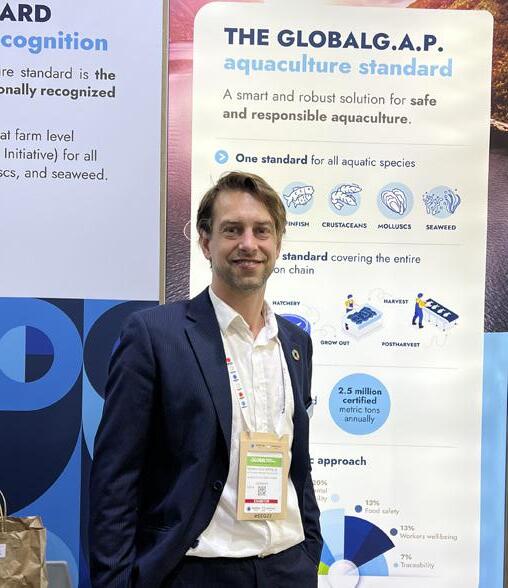
There are updates on the portfolio of tools and solutions to respond proactively to the constantly evolving challenges facing the aquaculture industry. The changes to the GLOBALG.A.P. solutions as discussed in the conference aim to improve sustainability in aquaculture and provide the meaningful assurance of responsible aquaculture that today’s discerning consumers demand.
What has been the demand for certified shrimp and fish from Asia over the past year (i.e., post Covid)? Asian aquaculture producers focus on the export market and that basically is driving certification. We do not see any difference in export volumes, before and post Covid. Notwithstanding the certification body, we do not see an increase in demand. However, we do experience more interest in certification from local retailers, which is a great and promising development.
What have been the major challenges for small farms in Asia to achieve certification, i.e., what have been the barriers, other than costs.
We try to be as cost-effective as possible, but as you know, there will always be costs associated with certification, such as onsite verification, but also the implementation of our criteria.
Earlier today, we discussed Indonesia’s case with a consultant from the government, where they want to implement our certification and the feed standards. Certification requires commitment throughout the supply chain, as it requires all steps of the production chain to be certified and all involved stakeholders will need to be aligned. The assurance we provide builds on a strong management system; this is feasible for all producers regardless of size but will require resources and commitment to develop and implement.
Another aspect of certification is the implementation of individual criteria, such as responsible sourcing of feed materials. As an example, fishmeal and fish oil will need to be sourced from a certain level of third party certification or fishery improvement projects (FIP). Although this would limit purchasing flexibility, it will drive management of fisheries to be more responsible and with that protect the livelihoods of people that are dependent on fisheries as a means of employment or as food source.
At the national level, I believe there is more interest in sustainability. GLOBALG.A.P. provides assurance and motivation to do the right thing. It is very promising to see that markets throughout the world start to realise the benefits that certification can bring. Costs associated with certification will be rewarded by more efficient production, market access and an improved image.
In some countries, the government specifies certification to the local standard before moving to third party international brands. What are your thoughts on this? Indeed, governments, are becoming more interested because they realise that sustainability is rewarding and that we cannot continue depleting our finite resources. Also, certification is a means to attract investors and is a condition for financial support. We are supportive of governments adopting local standards by producers. Local standards allow producers to become familiar with certification “How does it work? What do I need to consider?”, before adopting more ambitious standards.
I say this because getting a GlobalGap certification requires a lot of work. Therefore, it is good to have everybody on the same page. The feed manufacturer, hatchery and farm etc need to be certified, and criteria such as those related to food safety, animal welfare, animal health, environment, social aspects and so on, need to be incorporated.
Setting up a certification program is not easy; governments need to be aware of its challenges, because certification is built on trust and integrity. If integrity fails and a certificate can be bought online, it loses its credibility. I must say that certain criteria within our certification program are very beneficial, such as risk assessments on food safety and the impact on the environment.
As mentioned before, it is not only the criteria, but the whole system behind it - how our audit is verified and is the integrity of the program robust? We are one of the first programs that have its own Certification Integrity Program that monitors and assess the performance of independent certification bodies. That brings a whole different level of assurance and is rather complex.



In the auditing process, what have been the major challenges?
Auditor availability is one of the main challenges. As a former auditor I have a lot of respect for people involved in this work. Auditing brings a lot of pressure, whether it be commuting, auditing or time pressure to hand in reports. Because of all these demands in the profession, auditors are always in short supply.
Auditor availability has a large impact on certification cost. If you have an auditor available locally, cost of certification will decrease significantly. This is a bit of a chicken and egg situation for certification bodies; if they can show that there is a market for certification in a certain area, there can be investments in training auditors. Any certification body can apply for accreditation to do a GlobalGap audits. This is a free market.
Another challenge involves making sure that auditors have a high level of integrity. With nearly 300 control points to verify at farm level, the pressure is immense. The auditors need to be time-sensitive, check on all the boxes, and collect evidence that support the decisions made. Training and experience greatly improve efficiency.
We are independent of the certification decision; the third-party certification bodies are the entities that perform audits and make the decisions. GlobalGap sets the rules the certification bodies need to uphold and establishes criteria that producers need to comply with, to become certified. It also sets the rules on how audits need to be conducted and the qualifications auditors need. But basically, if a certification body complies with these rules and has been verified and approved by an independent accreditation body, certification bodies can issue GlobalGap certificates.
There is demand for certified fishmeal in Asia. What role can GLOBALG.A.P play in certification of marine meals and marine by-products?
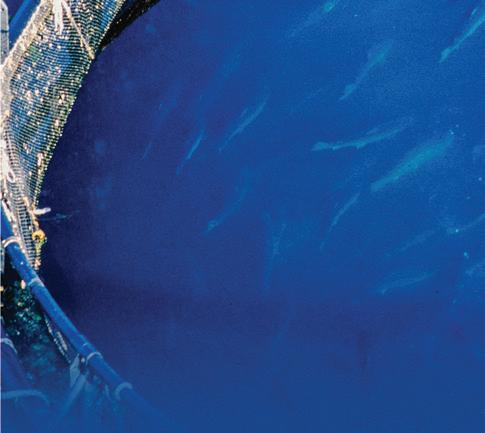
July/August 2023 AQUA Culture Asia Pacific
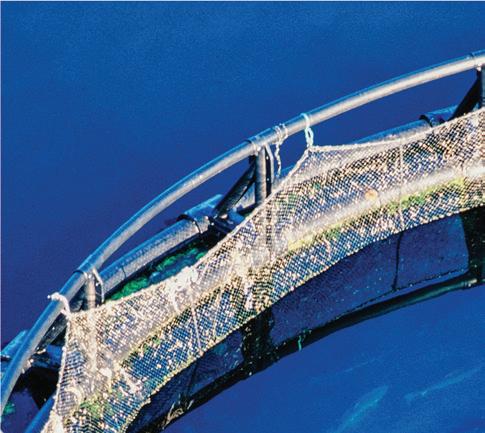
Developed through extensive industry collaboration,
STREAMLINED , AND I NEVIRD-TCAPM -
How do you help certified farms take advantage of certification to increase market access?
We collaborate as much as possible with certified producers to support their needs. Market access is one of the major benefits of certification. However, certification also supports companies to comply with international guidelines, like the GFSI, FAO or GSSI and establish a strong management system to mitigate risks in the supply chain.
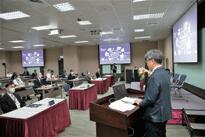
GlobalGap can trace its roots back to European retailers as being a trusted assurance provider. These same retailers are still our major stakeholders and source from its certified producers. Certified producers are listed in our database and when interested buyers and retailer are sourcing shrimp from, for example, Indonesia or Vietnam, they can find certified producers on the database. On a demand basis, we engage with retailers and producers to see if we can match them up.
To engage with stakeholders throughout the supply chain we organise the so-called TOUR Stops at country level, where we bring together producers, buyers, and retailers to talk about specifics. Most often the Tour Stops concentrate on food and vegetables, and a day is
dedicated to aquaculture, as was the case most recently in Greece. Integrity audits are another event where staff engage and exchange with producers. Both events enhance the collaboration between stakeholders.
Some producers look for engagement with GlobalGap but others are content with their own commercial activities. We are always keen on collaboration with stakeholders throughout the supply chain, as through collaboration it is possible to have a bigger impact. Small holders, such as those producing shrimp in Asia, have limited resources, and they thus look for engagement with well-connected partners. In such cases, we support marketing collaboration and awareness raising with potential buyers. Buyers are always very keen to explore new sourcing opportunities. We actively support the certification process and inform buyers of potential interests in establishing a working relationship.

In Bangladesh, we are collaborating with Solidaridad and the Bangladesh shrimp producer group to develop an app where the control points are translated into the local language. This will allow the producers to understand what is being asked. This is still a work in progress.
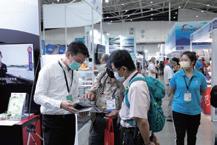

Overtwo days in early May, the US Grains Council (USGC) held an International Aquaculture Conference in Casablanca, Morocco. This was designed to strengthen ties with the Moroccan aquafeed industry professionals and help connect them to the aquafeed industry globally. The USGC program provides technical support to the Moroccan aquaculture sector to overcome any technical constraints hindering its expansion.
Turkish markets in 2022. In Egypt, tilapia is the target species. It is shrimp in Saudi Arabia, seabass and sea bream in the Gulf States, and shrimp and tilapia in Morocco.
Mariem Kharroubi, PhD is Research Director and Head of Speciali Product Valorisation, Morocco.
USGC, a non-profit organisation, was established in 1960 as a collaboration between US grain farmers, agribusiness leaders, government officials and overseas customers to develop markets and mutually beneficial trade relationships. It develops export markets for US barley, corn, sorghum, and related products, including distillers dried grains with solubles (DDGS) and ethanol. The Council operates programs in over 50 countries and believes exports are vital to global economic development and the profitability of US agriculture. Food security is a priority for every nation, and international trade is a powerful tool for enhancing food security around the globe.
Regarding the Global Grain Supply and Demand , USGC’s Reece Cannady said that today, the US corn crop uses 40% of its volume for ethanol production. As a result of this process, large volumes of DDGS are produced as a by-product which has significant value as a protein component of animal and fish feeds.
Mustapha El Youssoufi, the USGC consultant for Morocco. Otman Mernissi, Northern Foods and Proteins
Abedellatif Orbi, PhD, Gerant, Ste Noamer, Morrocco.
Tunisia office-based USGC Director for the Middle East, Africa and Europe, Ramy H. Taieb , was the host working closely with his deputy Director, Mohamed Salah Bouthour and Mustapha El Youssoufi , the USGC consultant for Morocco.
Days 2 and 3 were the aquaculture presentations given by USGC staff and experts from the US, Canada, Malaysia and the UK. Invited delegates came from Morocco, Tunisia, China, the Philippines, the Middle East, and South and Central America. There were some lively panel discussions at the end of each session.
In 2022, DDGS was exported to 55 countries, with Mexico being the biggest importer. Currently, DDGS is used in beef cattle (45%), dairy cattle (31%), swine (15%), poultry (8%) and others, including aquaculture (1%). So, the potential uptake in aquafeeds is huge, particularly for the more specialised high protein DDGS. It compares favourably on cost with soybean meal, and research indicates it can provide a cost-effective partial replacement for fishmeal too.
The potential uptake in aquafeeds is huge, particularly for the more specialised high protein DDGS says Reece Cannady.
Cannady: The potential uptake in aquafeeds is huge, particularly specialised high protein DDGS
USGC targets specific countries and species for its trials using DDGS in aquafeeds. Turkey has already conducted trials on rainbow trout and is starting seabass and sea bream trials using high protein DDGS shortly. Some 20,000 tonnes of high-protein corn products were traded in the
Caleb Wurth , USGC Regional Director, Southeast Asia, discussed ‘ Aquafeed demand: Outlook and opportunity for DDGS’ . According to the recent Alltech Global Aquafeed survey, 41 million tonnes of aquafeed was produced in 2022, with Asia (73%) dominating the market. This is expected in a direct reflection of aquaculture production around the world. The main growing regions are China, Vietnam and Bangladesh. Standard DDGS is particularly suitable for tilapia feeds.
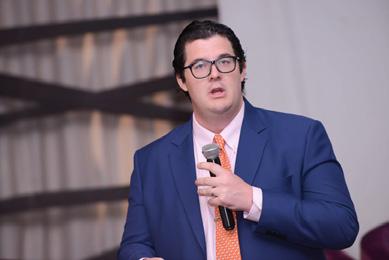
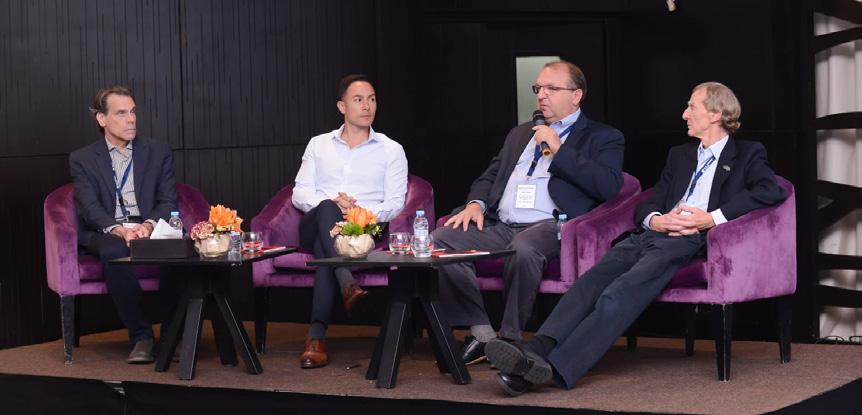
Due to significant cost increases in most feed ingredients, alternative protein sources are being tested.
- Caleb WurthAquafeed production grew by over 3% in 2021, the largest growth of all animal feed. Due to significant cost increases in most feed ingredients, alternative protein sources are being tested, particularly single-cell protein, insect meal, and standard and high-protein DDGS. As the global population rises, demand for food increases and more sustainable and cost-effective feed ingredients have a vital role to play.
Scott Tilton , a nutrition specialist working for The Andersons, gave two presentations, ‘Use of High Protein Distillers Feed Products in Shrimp and Tilapia Diets’ and ‘The New High Protein Distillers Feed Products and their Use in Carnivorous Fish Diets’. Rainbow trout, salmon and seabass trials showed positive results when high protein DDGS replaced varying proportions of fishmeal in the diets.
There are different production processes which differ in yeast content (amino acid profiles) as well as lipid and protein content. So, more research is required to optimise their use in aquafeeds for different species.
- Scott TiltonExperiments with shrimp and tilapia showed similar results. Due to the increase in global ethanol production, high protein DDGS and fermented corn protein volumes are increasing. There are different production processes which differ in yeast content (amino acid profiles) as well as lipid and protein content. These give rise to multiple applications of the various products, so more research is required to optimise their use in aquafeeds for different species.
Recent research indicates you can feed 20% of the 40% and 50% high-protein DDGS to tilapia and shrimp. Preliminary evidence suggests that fermented corn protein may improve survivability in shrimp.
Ronnie Tan , USGC’s aquaculture consultant based, in Malaysia, , spoke about his experiences working at Blue Archipelago, Malaysia’s largest integrated shrimp farm, and his work with Regal Springs, the world’s largest vertically integrated tilapia producer. Blue Archipelago farms vannamei and monodon shrimp, and it was interesting to compare both shrimp species farmed side by side. The hatchery produces over 1 billion post larvae a year and the farm, 5,000 tonnes shrimp per year using the biofloc grow-out system. Branding was highlighted as an important factor, particularly with a high-value premium product.
Regal Springs was established in 1987 in Indonesia (Central Java and North Sumatra) and has since expanded its operations to Honduras and Mexico, focusing on cage culture in large lakes. Regal Springs produced 68,000 tonnes in 2022; Honduras (28,000 tonnes), Indonesia (26,000 tonnes) and Mexico (14,000 tonnes).
Mexico is where most of the increase will be generated, with a planned 30-35% increase in production as new farms become fully online. Regal Springs has started using Blockchain Technology to support the full traceability of its Naturally Better Tilapia brand range in Europe, the first aquaculture white fish producer to do so. Their tilapia is certified by Global G.A.P., ASC and BRC. Regal Springs recently received USD14 million in capital commitments that supplement more than USD20 million invested in operations in the last two years, highlighting investor confidence in the tilapia.

Eric Roderick, a UK based tilapia specialist, gave a global tilapia update, followed by an overview of tilapia genetics and hatchery technology. Tilapia is forecasted to become the world’s number one farmed species in the near future, with sales of USD14.1 billion in 2022. Asia continues to dominate production, with almost 75% based there, and the top 3 producers are China, Indonesia and Egypt.

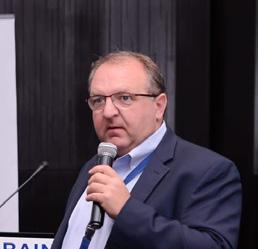
The main importer of tilapia is the USA, taking frozen whole fish and fillets from China and fresh fillets from South and Central America. Rabobank reported that global tilapia production increased by 3.75% in 2022, and global demand for tilapia is projected to increase by 4.6% over the next 10 years.
Consumers fuel this expansion through an increased focus on health and dietary choices, particularly in the USA and Europe, and soaring prices of other seafood species in the global markets. On the negative side, production costs are rising steadily, and margins are becoming squeezed, so efficiencies must be improved. African tilapia aquaculture, having seen many false dawns, seems to be expanding at the fastest rate, mainly to provide food security and compensate for the dramatic decline in capture fisheries over the last few years due to overfishing and pollution.
Dominique Bureau, a fish nutritionist from the University of Guelph in Canada, gave three presentations, ‘The Value of DDGS in Aquaculture Nutrition’, ‘Feeding of Marine Fish’, and ‘Feed Formulations Techniques in Aquaculture’. DDGS has many advantages as a key component of aquafeeds, stable supply, sustainably produced and competitively priced, but as a relatively new candidate for aquafeed, more research and testing are required before it can effectively replace most of the fishmeal and soybean meal. Several peer-reviewed academic studies were discussed, all showing very positive results for various inclusion rates of DDGS in diets for a range of species, including salmonids, seabass and sea bream, tilapia, and shrimp.

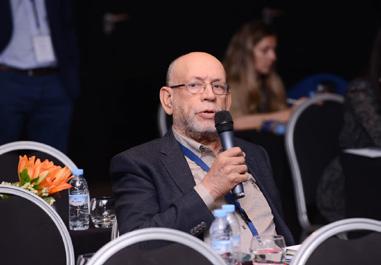
Another factor to consider is that DDGS contains around 5-10% of spent yeast which Alltech and others have proven to provide immune enhancement to many aquaculture species. High protein versions of DDGS (40 and 50% crude protein) are more suitable for marine finfish and shrimp, and again, test results have been extremely positive.
The IAFFD databases were also discussed, where the nutrition requirements and specifications of many of the commonly cultured finfish were freely available online. A second component of this database is a feed ingredient composition covering over 600 commonly used feed ingredients, enabling farmers and feed producers to manufacture a balanced feed using locally available ingredients.
Due to the cold winters, they produce only three cycles a year. They are unable to compete with Asia and Latin America on commodity shrimp but are targeting the European markets on their doorstep with high-value premium shrimp, with an emphasis on freshness.
COPAG, a large Moroccan agribusiness cooperative, supported the project for the 3-year trial period and is interested in experimenting with DDGS in the feed for the shrimp, which would be a very useful feed trial for USGC. Lunch was a spectacular 4-course banquet using local ingredients, including locally caught fish. COPAG has 24,000 cooperative members, many involved in citrus, vegetables, dairy and animal feed. Some 95% of its members are small producers who benefit significantly by being part of the cooperative, particularly in terms of technology transfer and genetic improvement of crops, especially citrus for export and citrus juice.
was a pre-conference visit to Mazaria Fish Farm in Larache. This large indoor RAS shrimp farm uses double-skinned insulated polytunnels and grows the CPF strain Litopenaeus vannamei imported from the USA. They have on-growing tanks, raceways, broodstock tanks, a hatchery, and an algae culture facility.
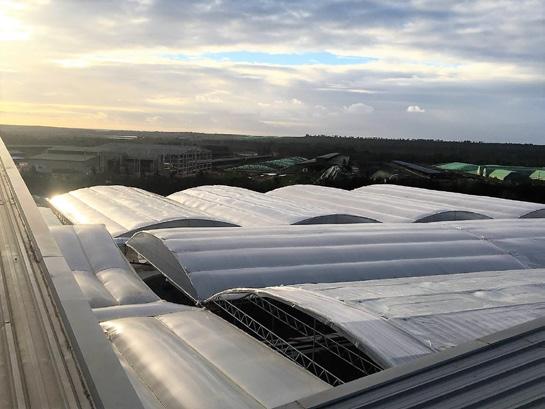
Due to the cold winters, they produce only three cycles a year. They are unable to compete with Asia and Latin America on commodity shrimp but are targeting the European markets on their doorstep with high-value premium shrimp, with an emphasis on freshness.
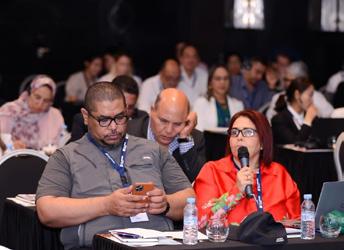
Thiswas a pre-conference visit to Mazaria Fish Farm in Larache. This large indoor RAS shrimp farm uses double-skinned insulated polytunnels and grows the CPF strain Litopenaeus vannamei imported from the US. They have on-growing tanks, raceways, broodstock tanks, a hatchery, and an algae culture facility.
COPAG, a large Moroccan agribusiness cooperative, supported the project for the 3year trial period and is interested in experimenting with DDGS in the feed for the shrimp, which would be a very useful feed trial for USGC. Lunch was a spectacular 4-course banquet using local ingredients, including locally caught fish. COPAG has 24,000 cooperative members, many involved in citrus, vegetables, dairy and animal feed. Some 95% of its members are small producers who benefit significantly by being part of the cooperative, particularly in terms of technology transfer and genetic improvement of crops, especially citrus for export and citrus juice.
There is a government Green Morocco plan to expand cooperatives, aggregate some of the smaller farmers and provide land for lease, especially for dairy farming and to share added value with the smaller shareholders. COPAG is now looking at increasing its aquaculture portfolio by adding tilapia farming to provide food for the domestic market, with the shrimp mainly focused on the export market. Marine finfish aquaculture is also being considered.
Caption: The RAS shrimp farm uses double-skinned insulated polytunnels holding on-growing tanks, raceways, broodstock tanks, a hatchery, and an algae culture facility. Related article: Debut of vannamei shrimp farming in Morocco, issue November/December 2022. RAS shrimp farm This The RAS shrimp farm uses double-skinned insulated polytunnels holding on-growing tanks, raceways, broodstock tanks, a hatchery, and an algae culture facility. Related article: Debut of vannamei shrimp farming in Morocco, issue November/December 2022. Mariem Kharroubi, PhD is Research Director and Head of Specialised Centre of Sea Product Valorisation, Morocco. Mustapha El Youssoufi, USGC consultant for Morocco.The GIANT Prawn conferences were founded by Michael New, OBE. The first was held in Bangkok in 1980, followed by two other conferences in India (2003 and 2011). The Asian Institute of Technology (AIT) organized the 2017 edition in Bangkok, Thailand, and the GIANT PRAWN 2019 at Shanghai Ocean University (SHOU), China
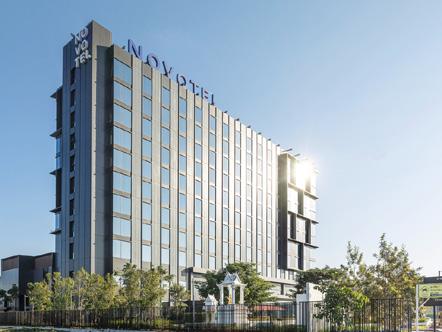


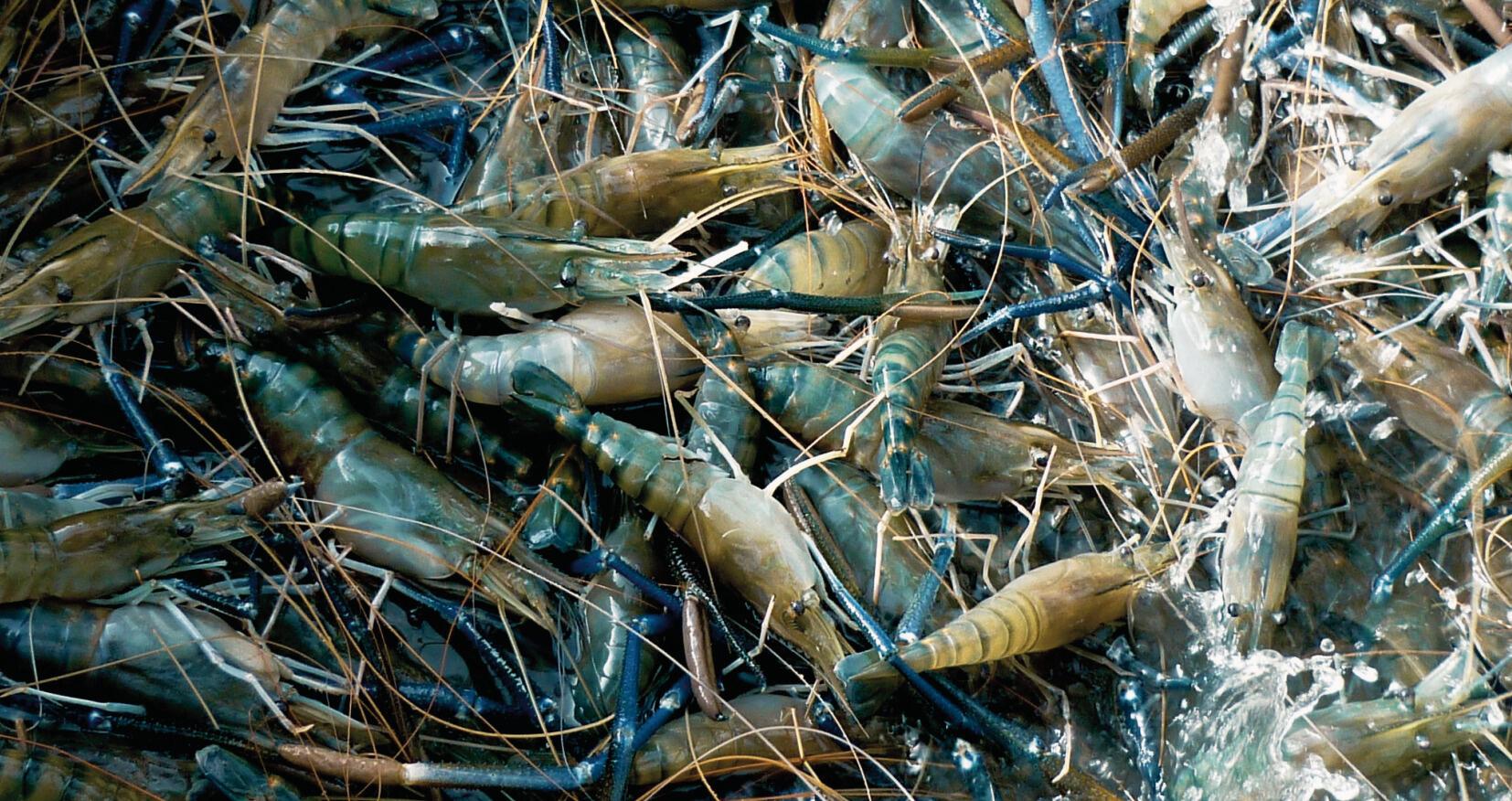
GIANT PRAWN 2023 is the 6 conference in the series, jointly organized by AIT, Thailand, and SHOU, China.




Withclose to a month to go, organisers have announced the complete program for TARS 2023. TARS 2023 gathers stakeholders in the shrimp aquaculture supply chain over two days (August 16-17) at the Westin Resort Nusa Dua, Bali Indonesia.
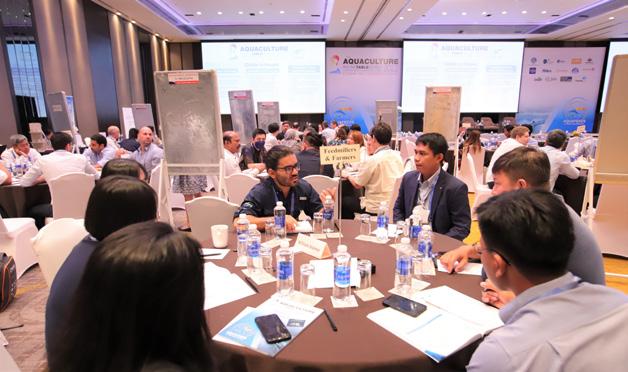
This year marks the 12th year for TARS (The Aquaculture Roundtable Series®). Held annually, TARS rotates the focus between aquafeeds, shrimp and finfish aquaculture.
Organisers have reiterated that Shrimp Aquaculture: Regeneration comes from a need to proactively improve the culture model, mitigate disease, match nutrition to genetics, focus on sustainability and develop a strategic plan. “Evolving is not enough, regeneration is needed. The Asian shrimp aquaculture industry is stagnating and going nowhere. Meanwhile, demand from the global market is facing headwinds of inflation and a looming recession,” said Zuridah Merican, Editor of Aqua Culture Asia Pacific Magazine. “Part of the challenge in Asia is how we are losing market share while we see a lack of efficiency due to poor survival rates but there is a larger systemic risk. We need a regeneration of Asia’s shrimp aquaculture.”
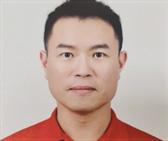


She added that here regeneration brings another meaning. “To continue Asia’s industry, we require the next generation to do it. In the program, the average age has dropped. It is a platform for a succession plan and the new generation to tell us about their ideas for the future.”

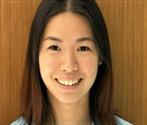



The industry dialogue on what is holding shrimp aquaculture back is a deep dive with a panel of young stakeholders on how to make shrimp farming sexy and attract a younger generation of shrimp farmers. They will discuss the limitations with current shrimp aquaculture models and the strategy to focus on marketing ahead of production.
Hard Talk draws, a panel of industry leaders across segments to debate on “What Does it Take to Produce Sustainable Asian Shrimp.”

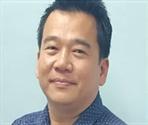




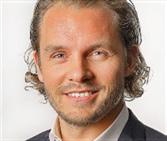
TARS 2023, organised by Aqua Culture Asia Pacific Magazine and Corporate Media Services P L is supported by the Directorate of Aquaculture, Ministry of Marine Affairs and Fisheries, Indonesia and industry partners; INVE Aquaculture (A Benchmark Company), dsm-firmenich, BASF, Adisseo, USSEC, USGC, Delos Aqua, Jefo Nutrition, Grobest, Syaqua and Alltech.
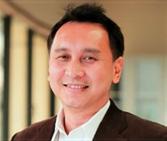
DHA phospholipids, astaxanthin and proteins.
In studies on krill hydrolysate added to Atlantic salmon feed, the results demonstrated a significant increase in appetite, feed intake, and growth of salmon smolts fed on diets with levels of 2.5 % or 5 % krill hydrolysate, compared to a standard control feed. During the first 6 weeks after transfer to seawater, salmon smolt fed on krill hydrolysate coated feed, doubled their weight,
Rimfrost krill hydrolysate can help to increase the feed performance through added appetite and feed ingestion, but also better health and disease resistance. It can also help to reduce the marine ingredients in the feeds, helping in the path to sustainability. Our main markets are the salmon farming countries (Norway, UK, Faroes, Chile, Canada) and the shrimp farming countries (Ecuador, India, Vietnam, Indonesia, Thailand). More information, https://www.rimfrostkrill.com/market/aquaculture
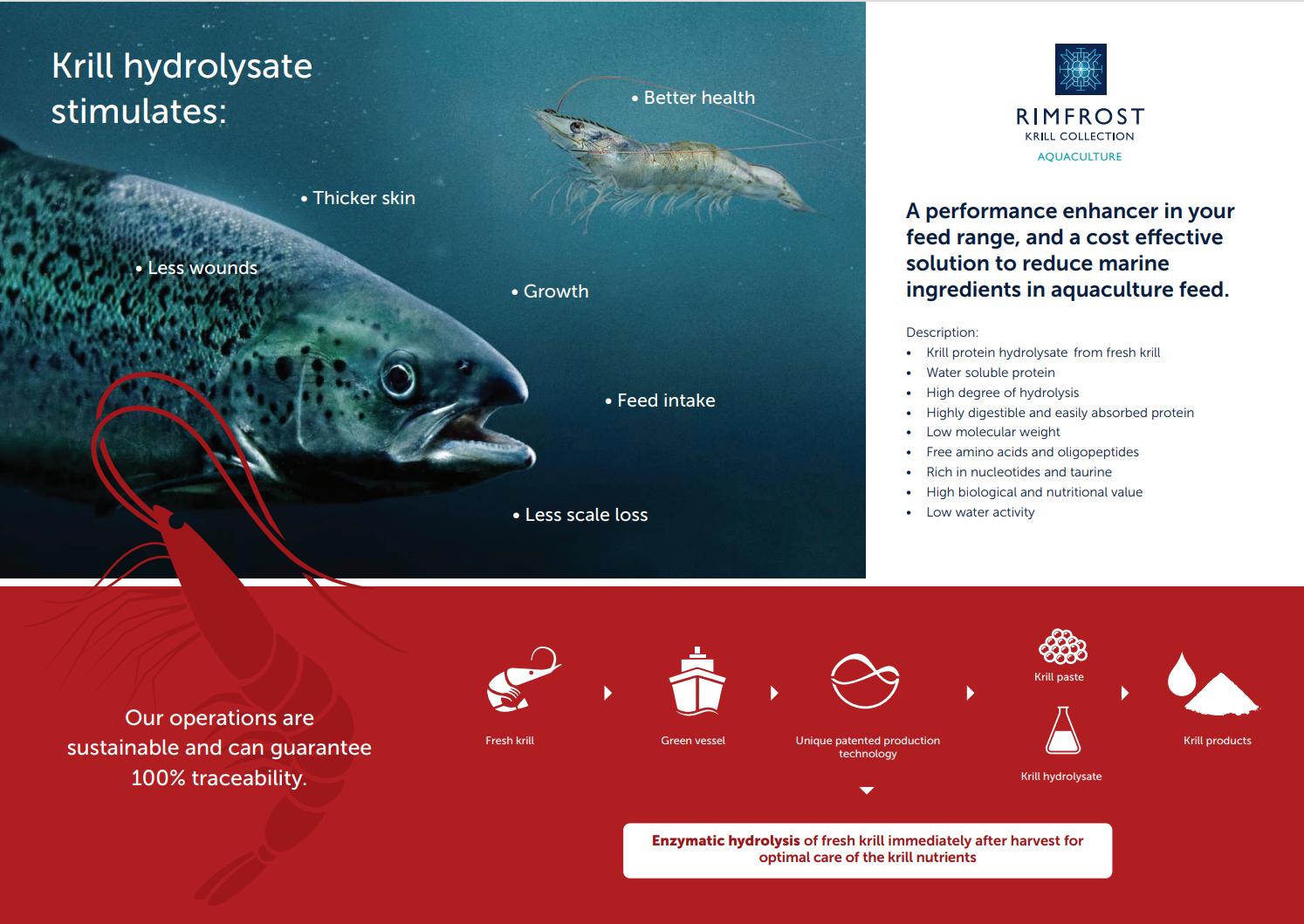

The event will take place at the TUYAP Fair and Congress Center and will occupy 2 pavilions (№ 11, 12), offering a wide range of sectors, including catching and processing, shipbuilding and ship repair, equipment and components, aquaculture, logistics and storage, product distribution, and final products. What sets Seafood Expo Eurasia apart is its unique ability to provide a platform for small and mid-sized fishery companies that may go unnoticed at larger exhibitions, as well as big industry players, to make new connections and seize big opportunities.
Seafood Expo Eurasia, scheduled to take place in Istanbul from December 7-9, 2023, is an eagerly anticipated event for the international fishery industry. With representatives from over 120 countries expected to attend, the exhibition promises to be a truly global experience, breaking down geographical and political barriers and bringing together fishery companies from around the world.
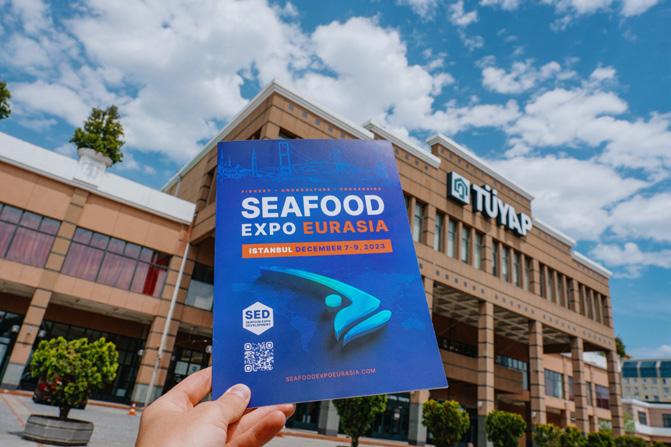
Seafood Expo Eurasia is designed with a business-focused approach in mind, catering to the unique needs of attendees and offering a flexible approach, ensuring a stress-free and successful experience. With 46% of visitors being business owners, CEOs, and top managers who make decisions or influence them, this event provides a valuable opportunity for industry professionals to connect and collaborate. More on Seafood Expo Eurasia at https://seafoodexpoeurasia.com/en/
September/
November/
Volume 19
Deadlines -Technical articles
Deadlines - Advert Bookings
Innovations/ Startups
October
July 18
July 25
December
September 19
September 26
Experiences and opinions covering role models; clear and present needs of industry; innovations and digitalisation in aquaculture
Interviews with industry leaders Focus in 2023 will be leaders pushing for sustainable aquaculture
Issue focus
Emerging trends and challenges
Industry Review
Aquaculture Innovations Health & Disease Management
Marine Fish
Catfish & Freshwater Fish
Feeds & Processing Technology Larval & Nursery Feeds Feed Enzymes
Production Technology Feed management
Post-Harvest Processing
Market and product developments, generic marketing, certifications, branding, food safety etc Company/Product News News on activities at international, regional and local conferences and trade shows For advertising/article contributions and guidelines contact: zuridah@aquaasiapac.com
Marketing activities

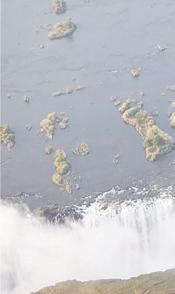







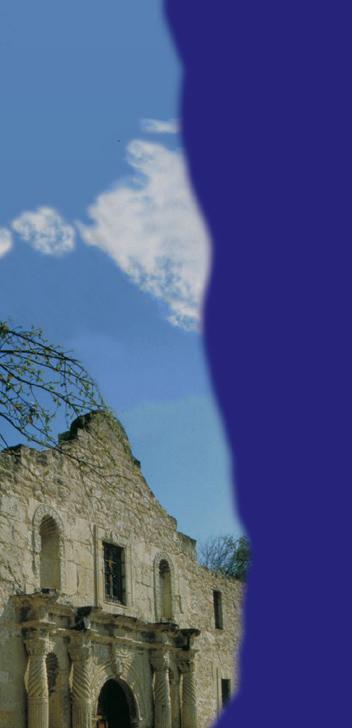

capabilities and geographical reach. ADM now enters a new chapter with the new brand identity reflecting the vision of bringing diverse history together under a singular ADM brand for long-term growth.
This campaign marks a major milestone for the 121- yearold corporation, consolidating a clear and consistent global image. It focuses on ADM’s capability to solve global nutrition challenges of today and tomorrow. “We are innovating for improved outcomes while giving customers an edge. The rebranding process enables ADM to communicate our messages effectively and resonate deeply with customers”said Daniel Olivo, Marketing Director Animal Nutrition APAC.
Founded in 1902, ADM has expanded its diverse portfolio, providing a complete range of solutions and services for livestock, aquaculture, and pets in more than 200 countries and territories. The global footprint, combined with local insights, provide competitive advantages for ADM in assisting customers solving their nutritional challenges.
With the completion of the Neovia acquisition in 2019, ADM has extensively enhanced its animal nutrition
The new branding takes effect from June 30 2023, during which new and old packaging will simultaneously be in the market until out of stock for old packaging. This new branding only applies to packaging and other visual properties; the current product quality and services will remain unchanged. ADM is committed to offer customers sustainable and innovative solutions.
ADM is looking forward to receiving support from customers. More information: www.adm.com/Email: van.nguyen@adm.com
September 5-7
Global Shrimp Forum Utrecht, The Netherlands www.shrimp-forum.com/
July 24-26
Shrimp Summit Ho Chi Minh City, Vietnam www.responsibleseafood.org
August 16-17
TARS 2023 - Shrimp Aquaculture, Bali, Indonesia www.tarsaquaculture.com
August 25-27
VIETFISH 2023
Ho Chi Minh City www. vietfish.com.vn/en
August 31- September 2
Taiwan International Ocean and Fisheries Show (TIOFIS 2023)
Taipei www.taiwanfishery.com.tw
September 6-8
FHS-AFS conference 2023 Bangkok, Thailand www.fhsconference.org
September 18–21
Aquaculture Europe 2023, Vienna, Austria www.aquaeas.org
September 20-22
14th Philippine Shrimp Congress Bacolod City www:hipon.bfar.da.gov.ph/14th-philippineshrimp-congress/
September 20-22
ILDEX Indonesia 2023 Jakarta www. ildexindonesia.merebo.com
September 26-27
THRIVE Hawaii Agrifood & Aquaculture Summit Hawaii
www.TropAgTech.com
October 23-26
Aqua Expo 2023
Guayaquil, Ecuador www. aquaexpo.com.ec
November 13-16
AFRAQ 2023
Lusaka, Zambia www.was.org
November 27-29
Giant Prawn 2023
Bangkok,Thailand
December 7-9
Seafood Expo Eurasia
Istanbul, Turkey
www.seafoodexpoeurasia.com

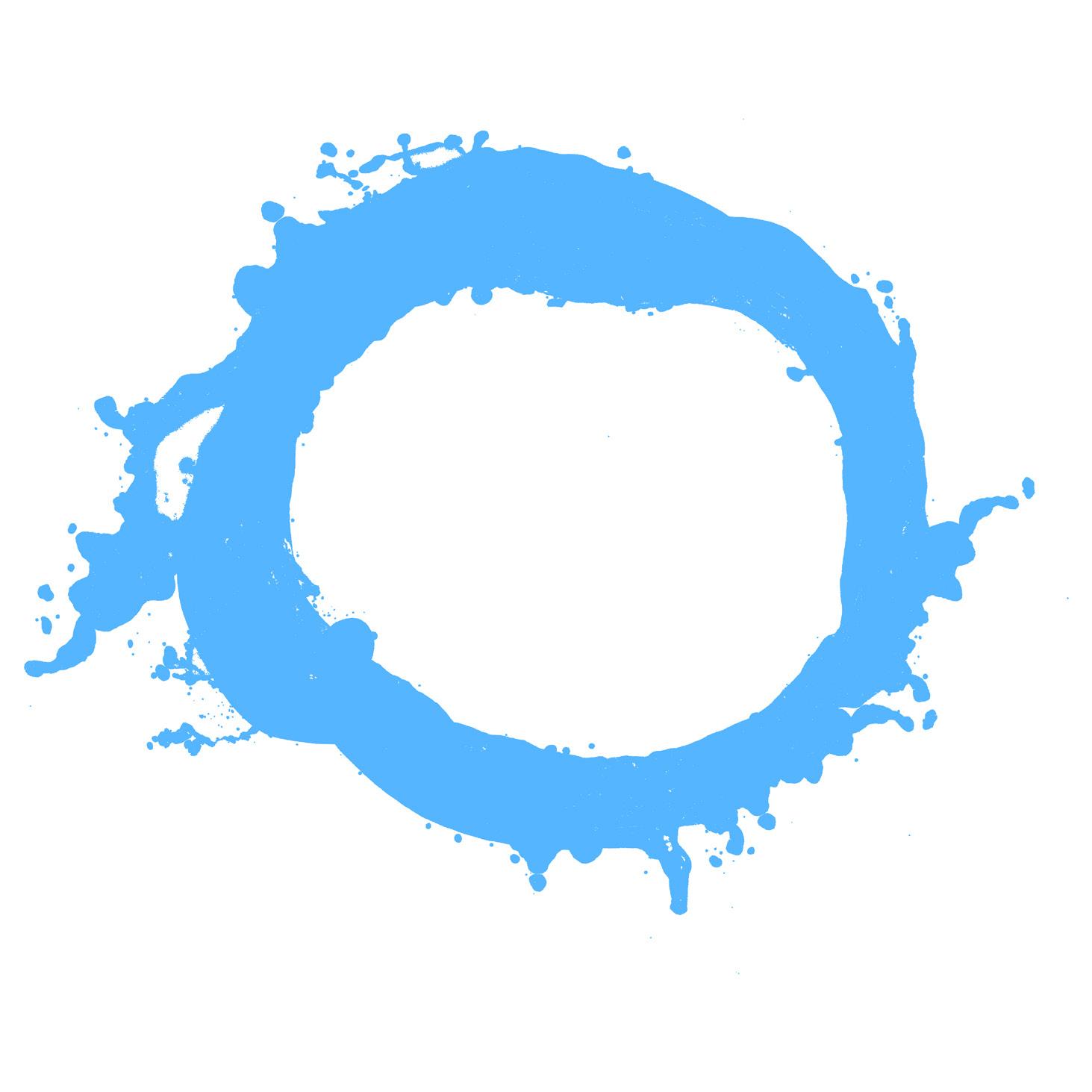
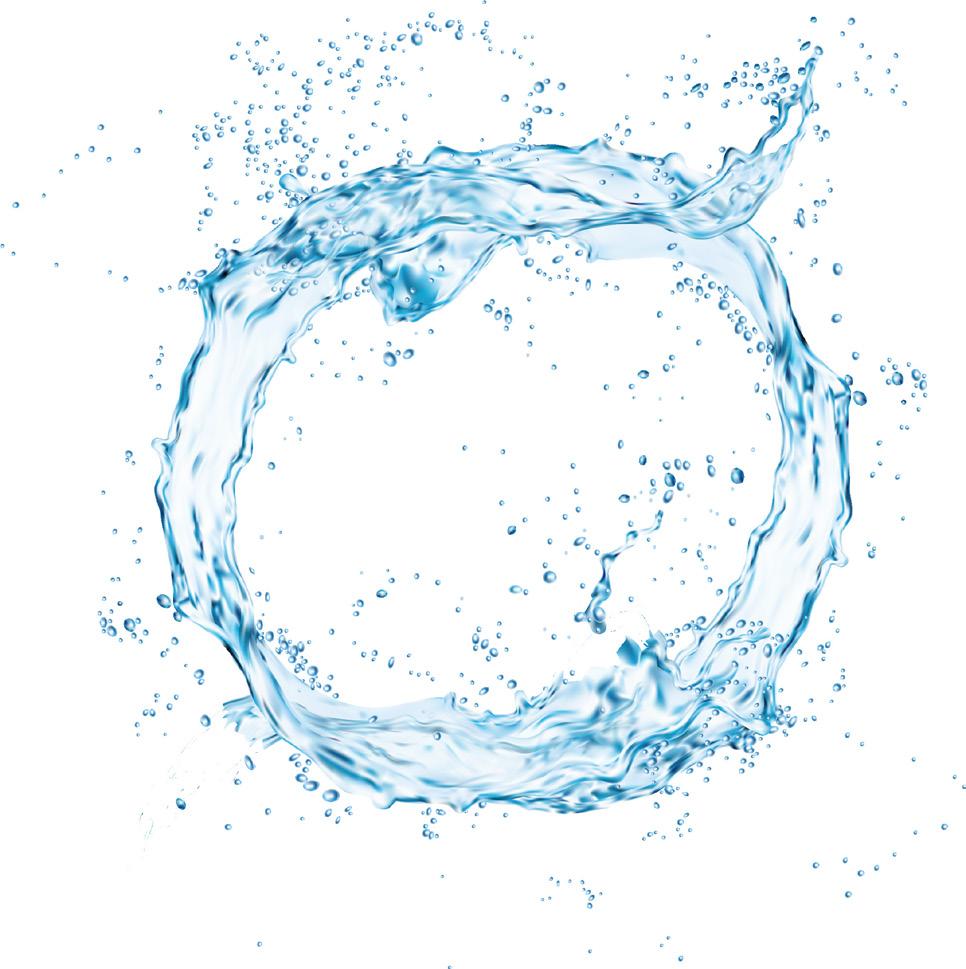

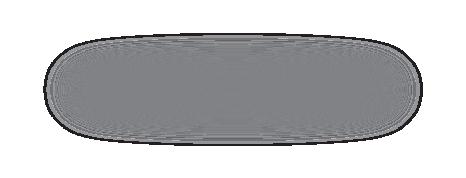

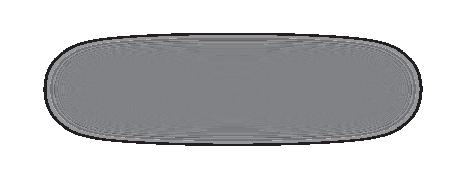
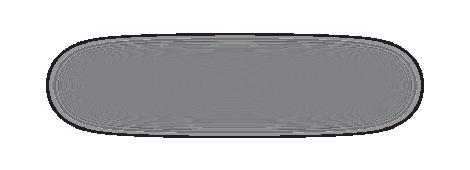
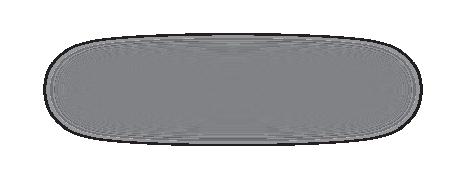
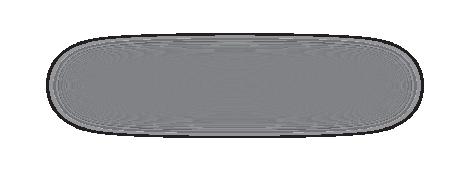


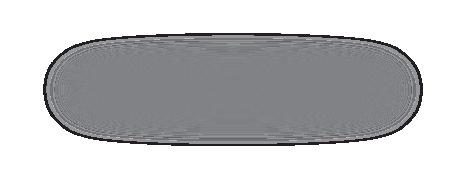

• No.16-18-20, DT743 Road, Song Than II Industrial Zone, Di An Ward, Di An City, Binh Duong Province, Vietnam
• Tel: +84-274-3790811 (Ext: 1711)
• Fax: +84-274-3790819
• Email: aquafeed@upvn.com.vn
